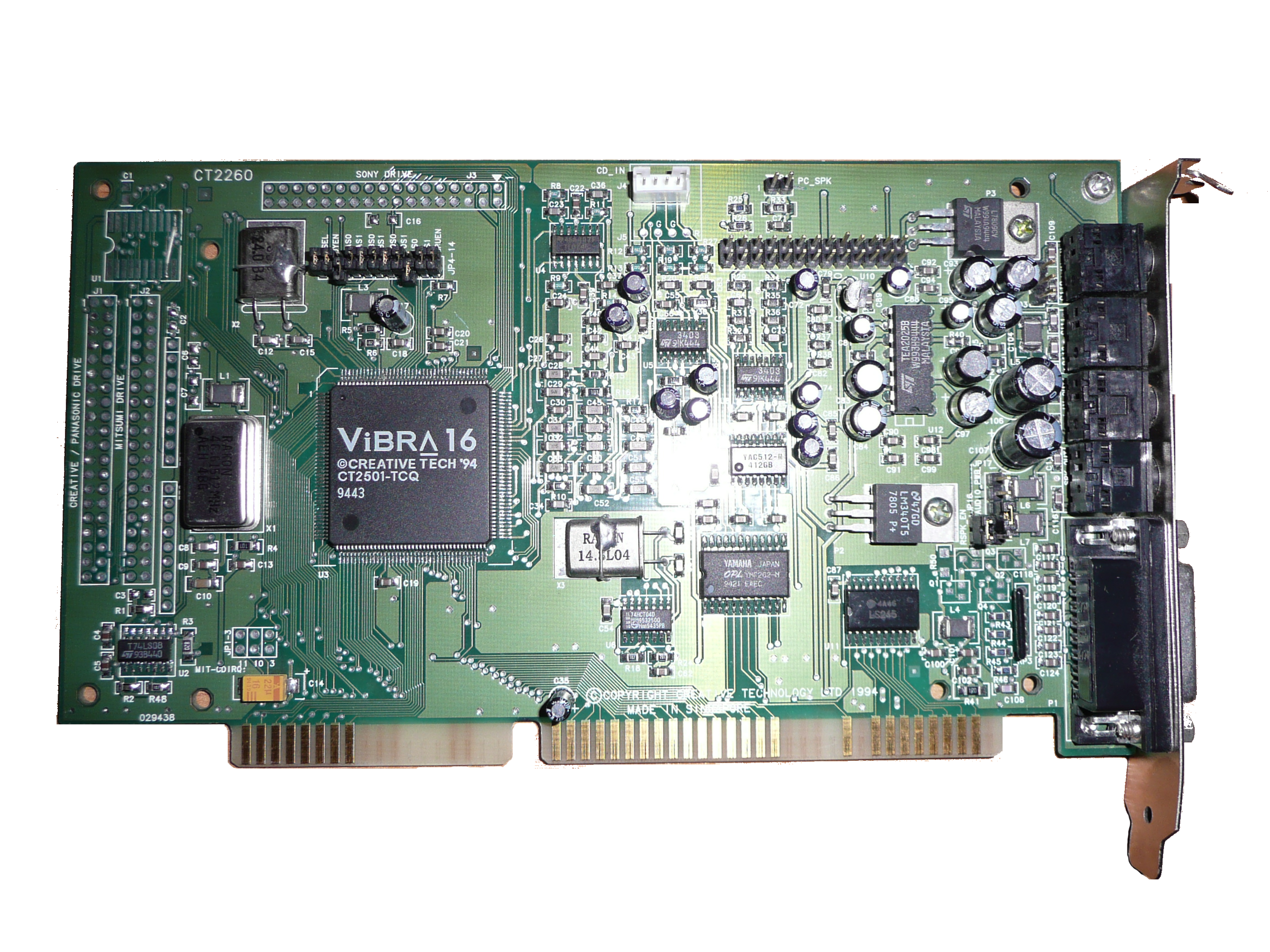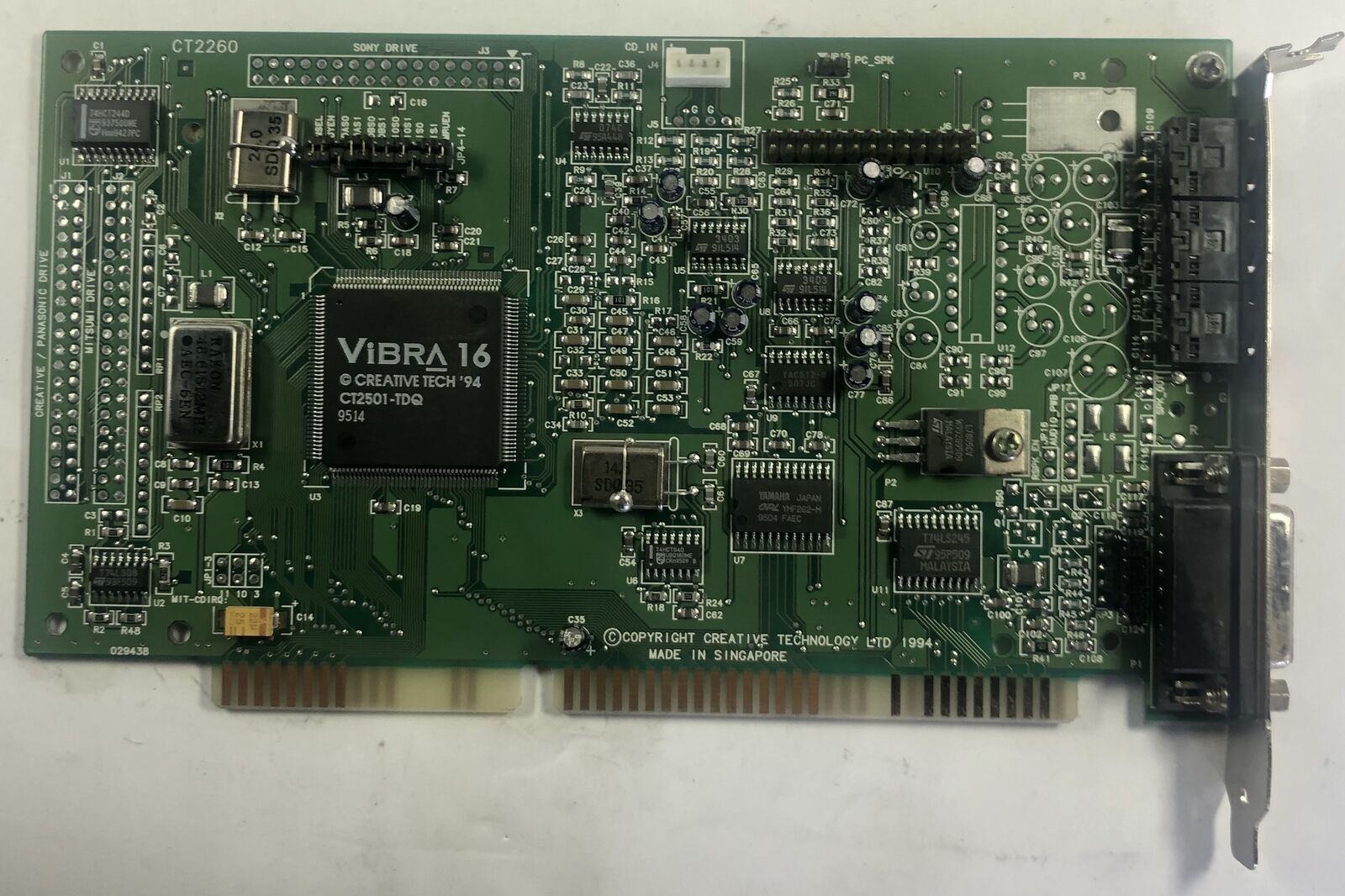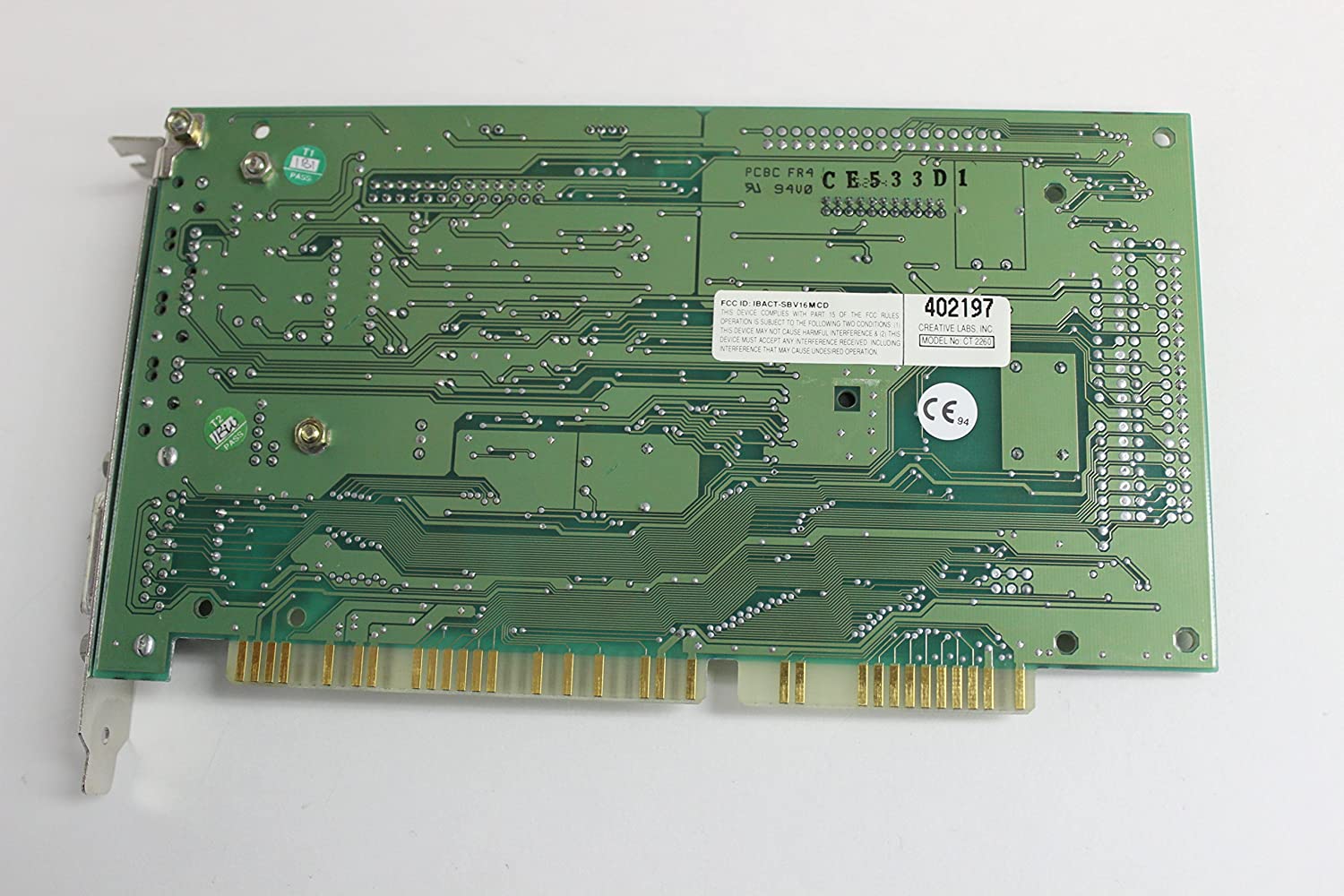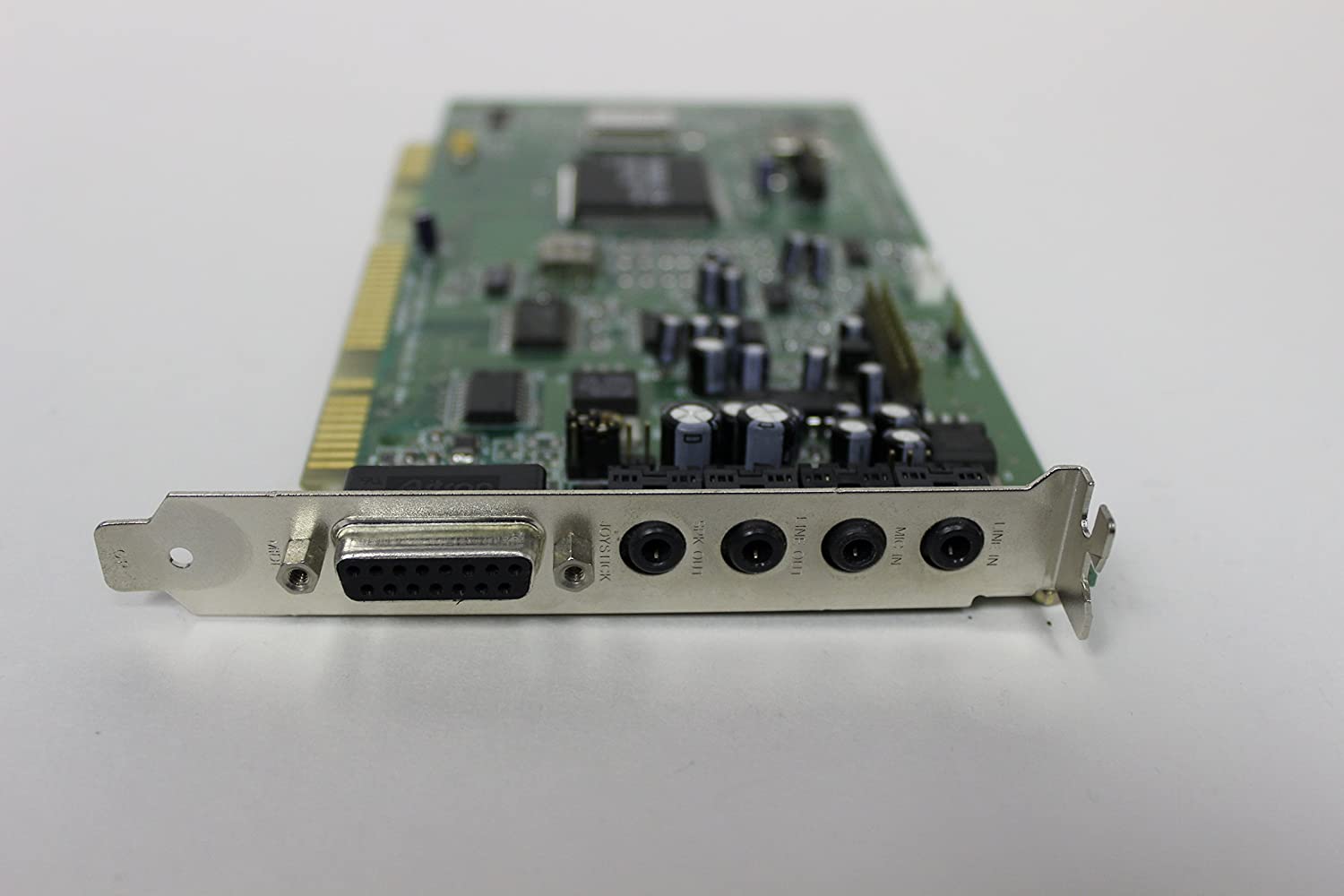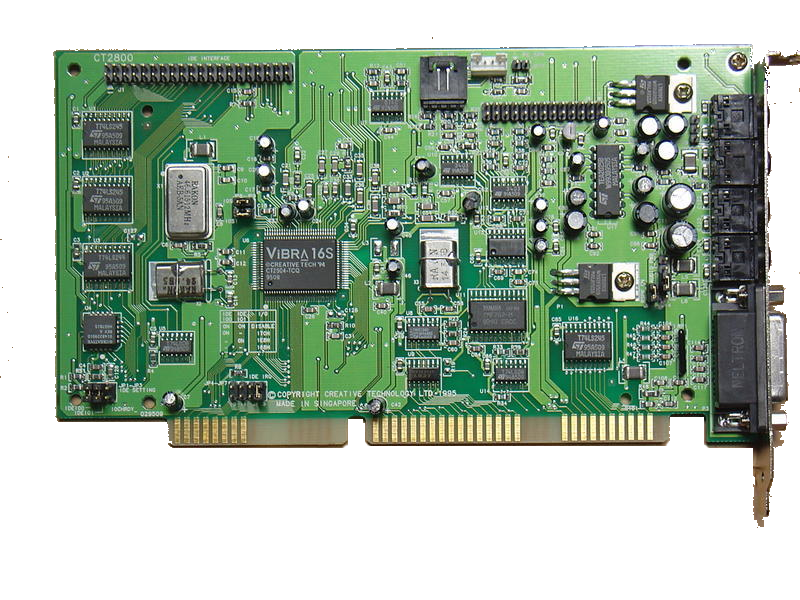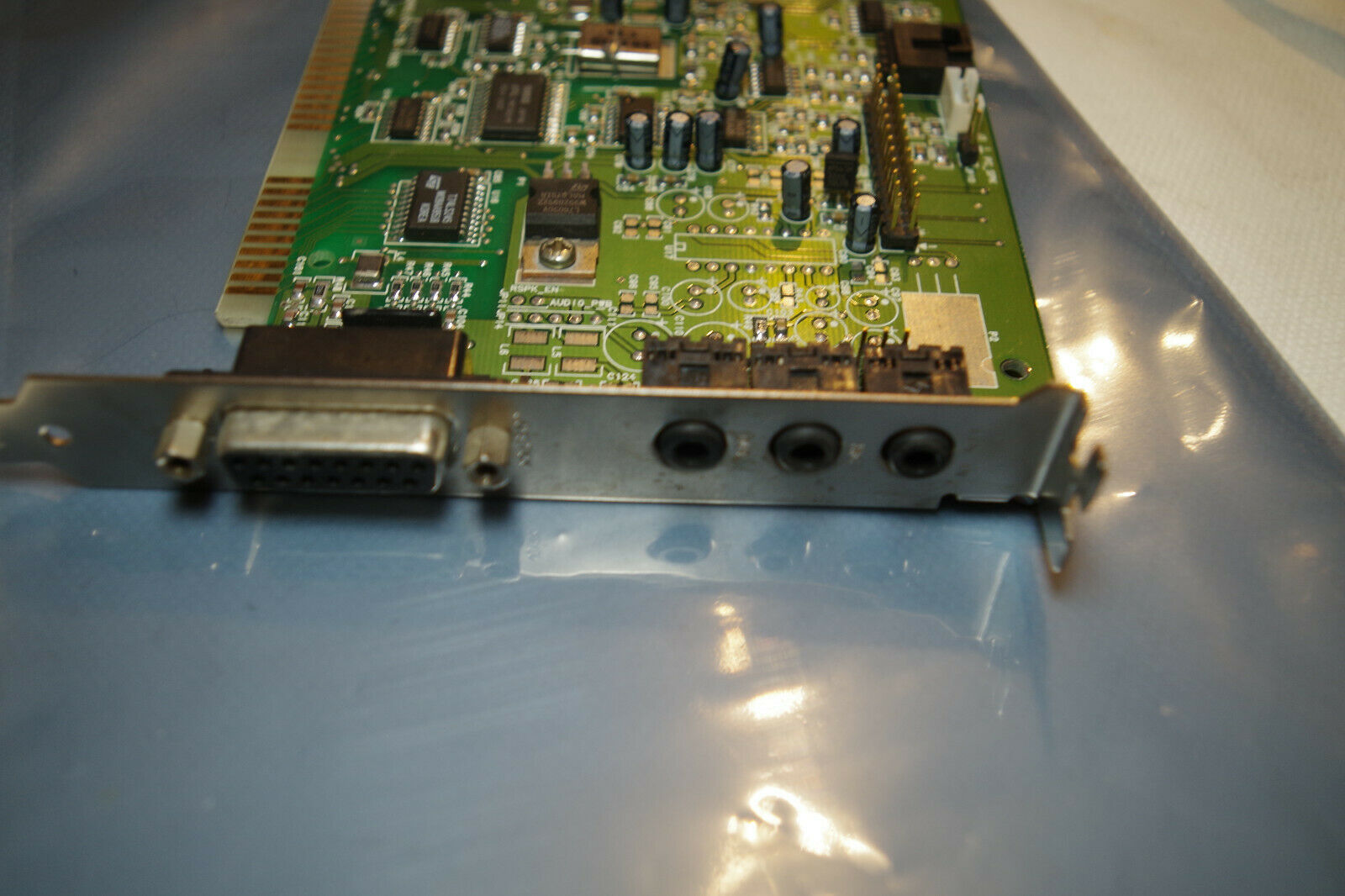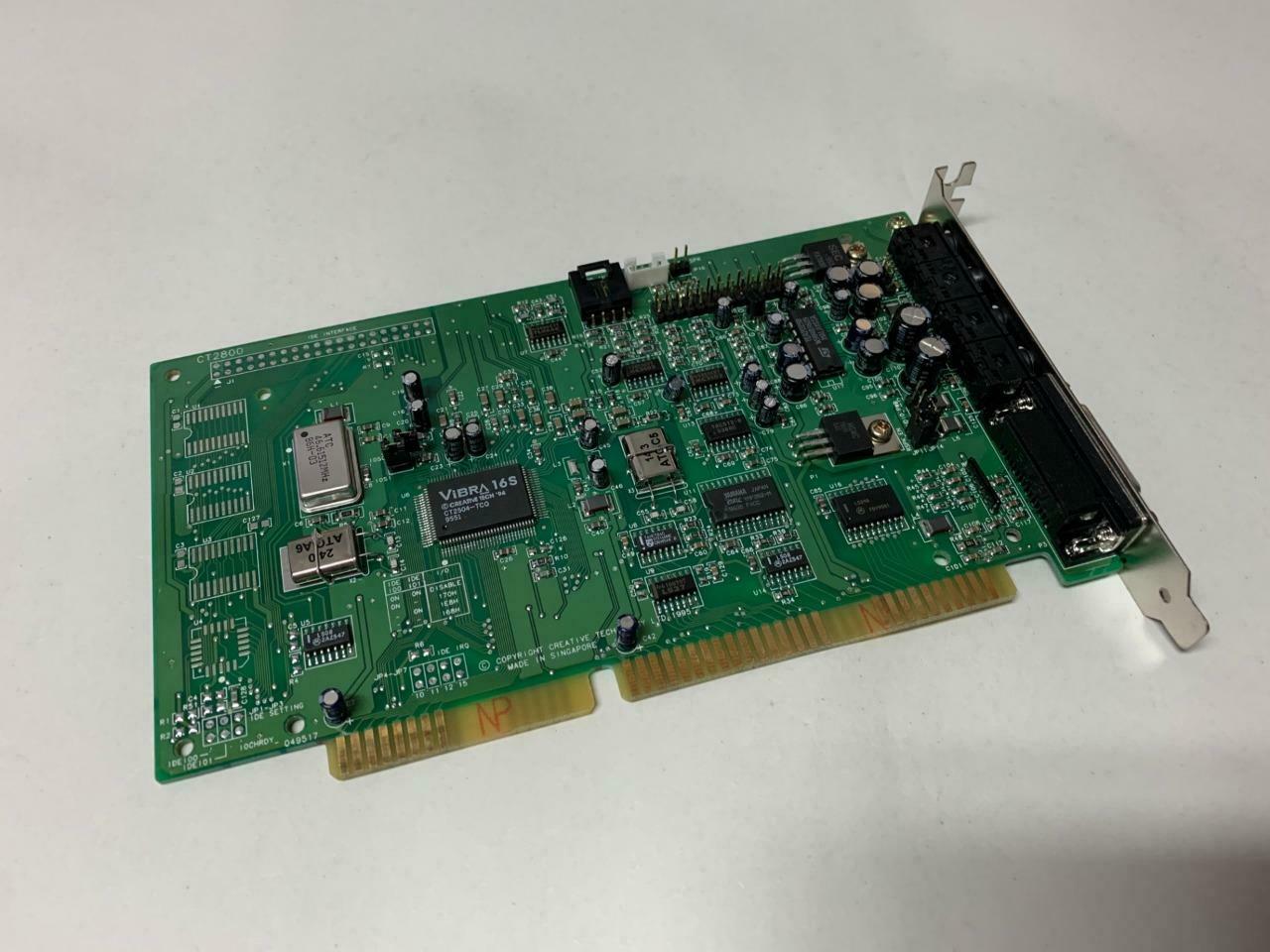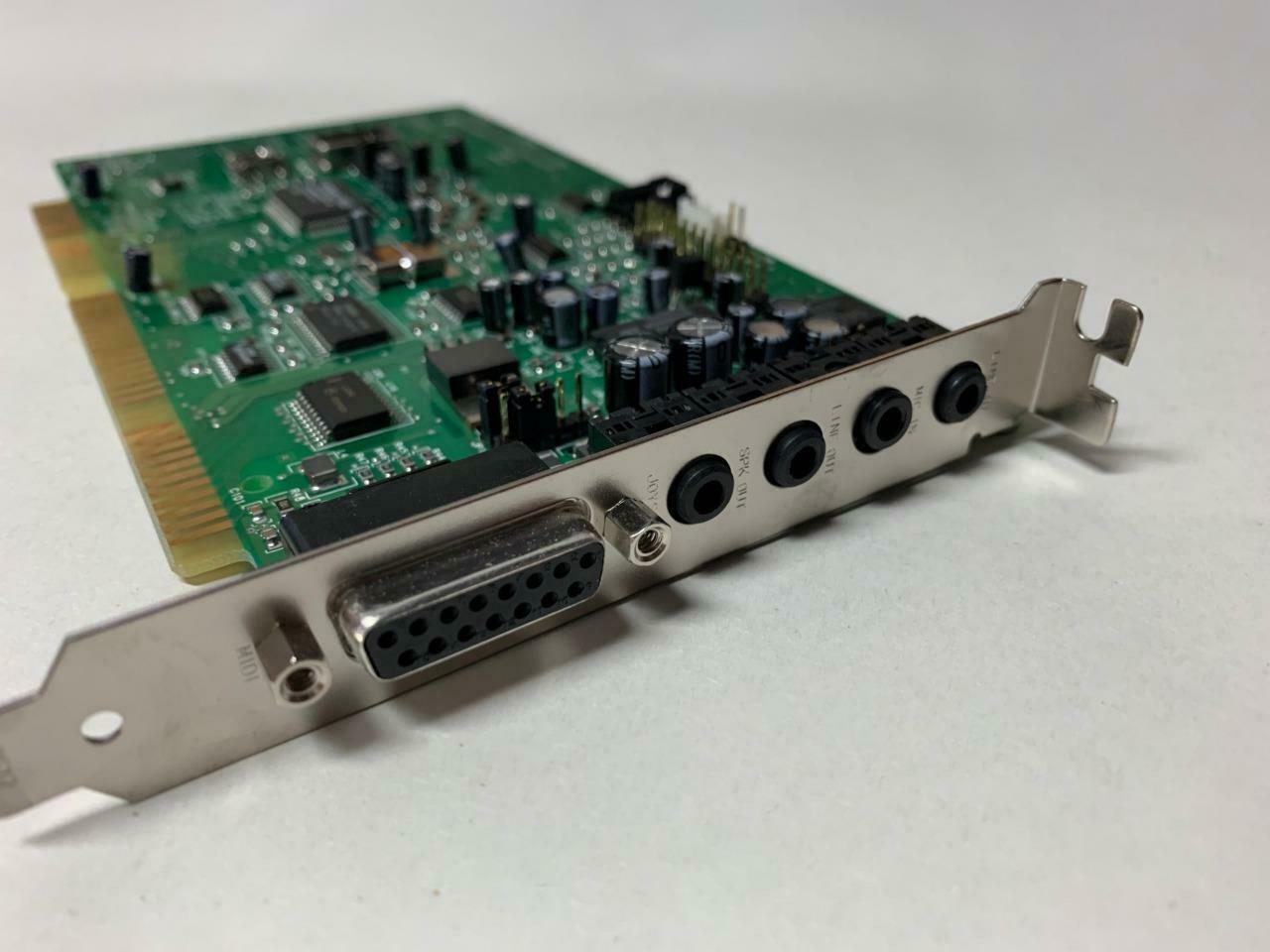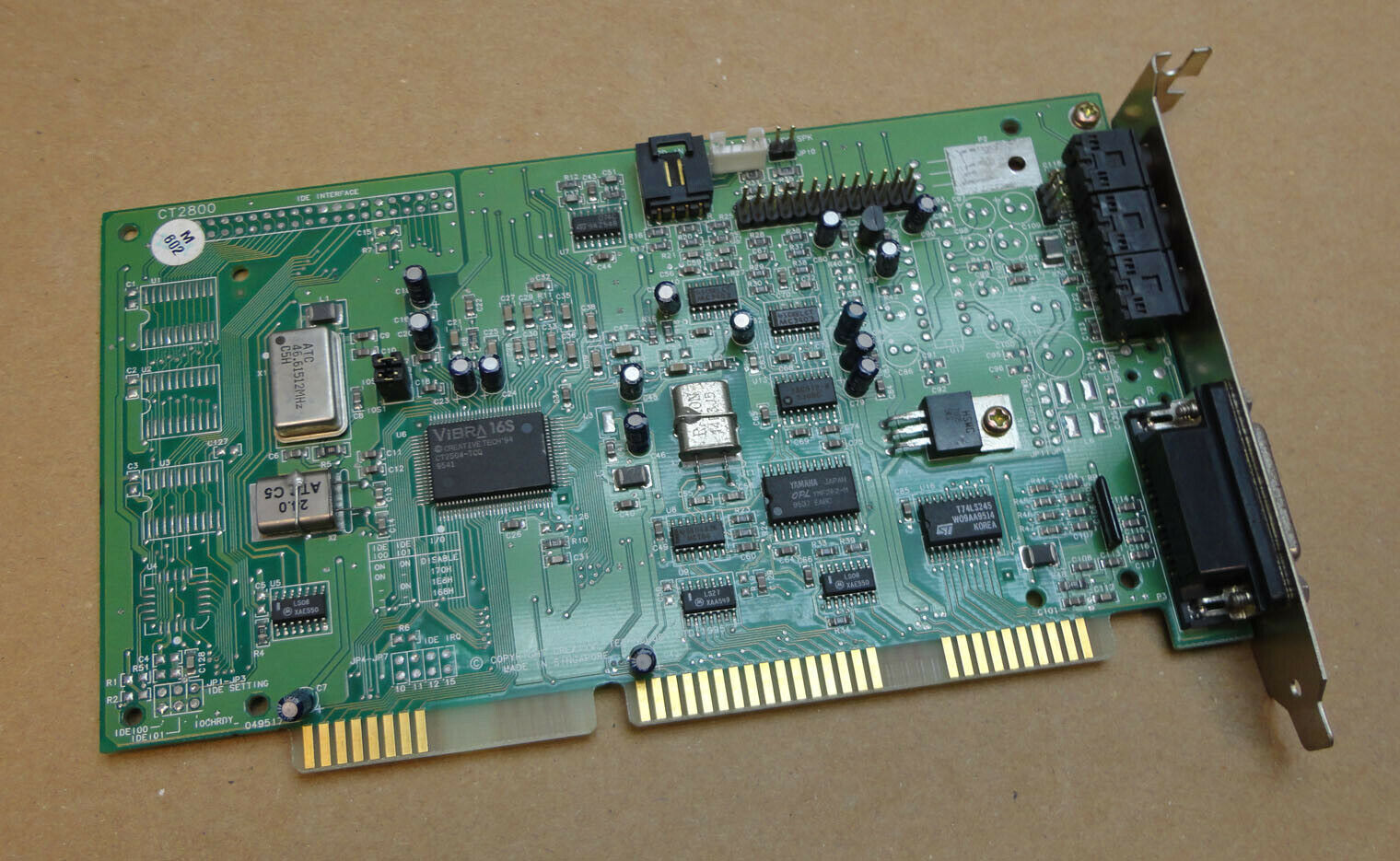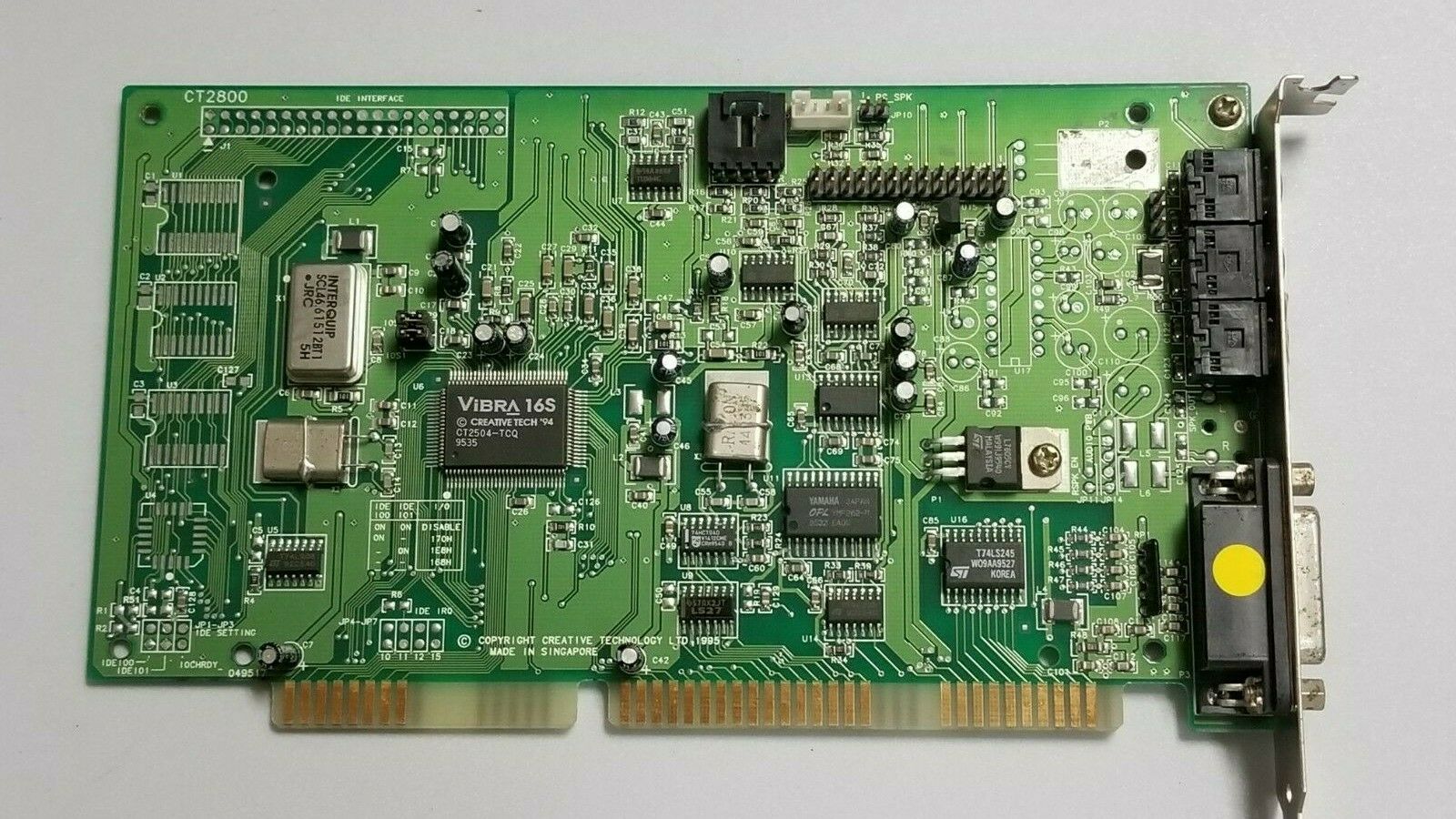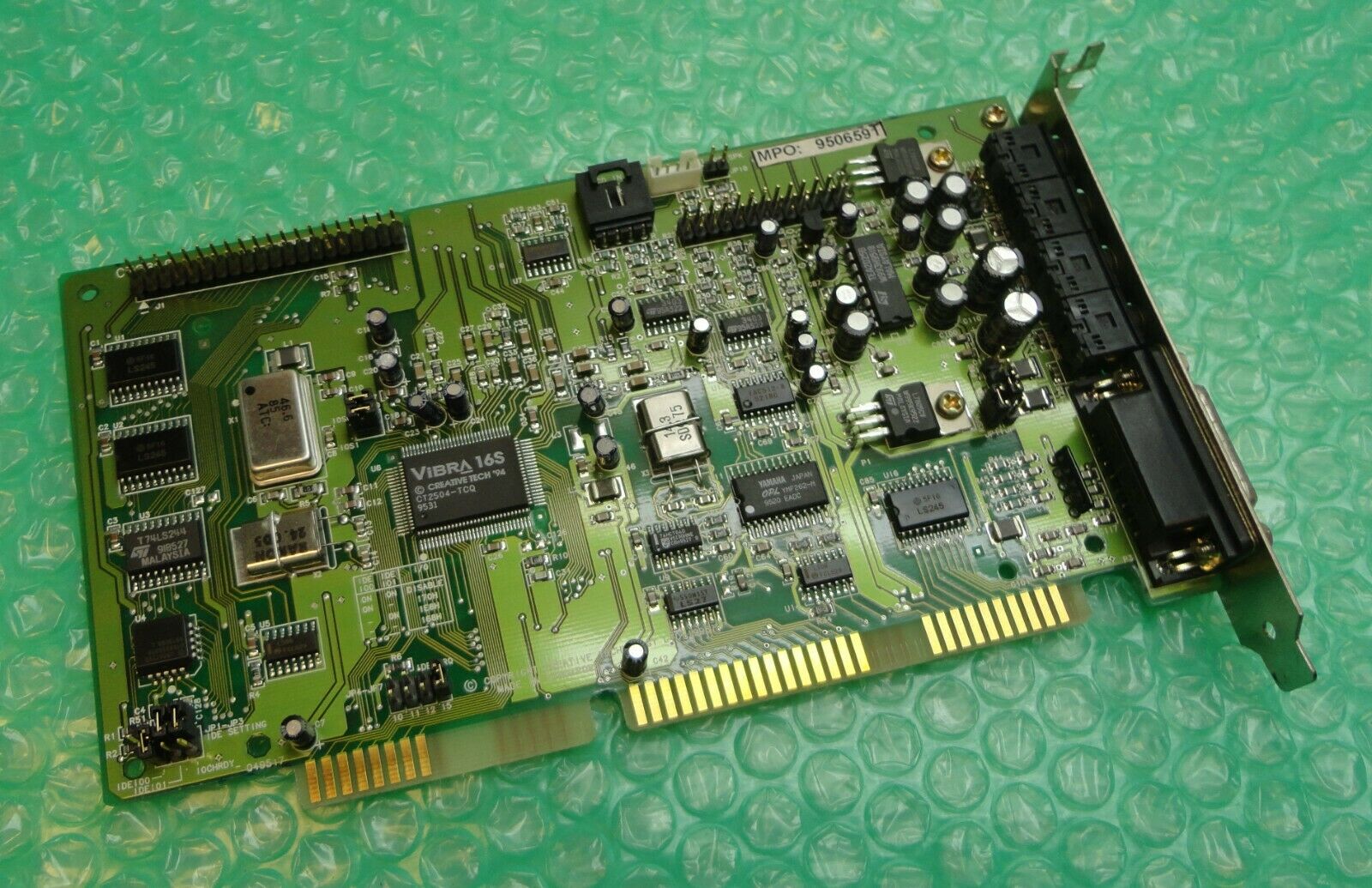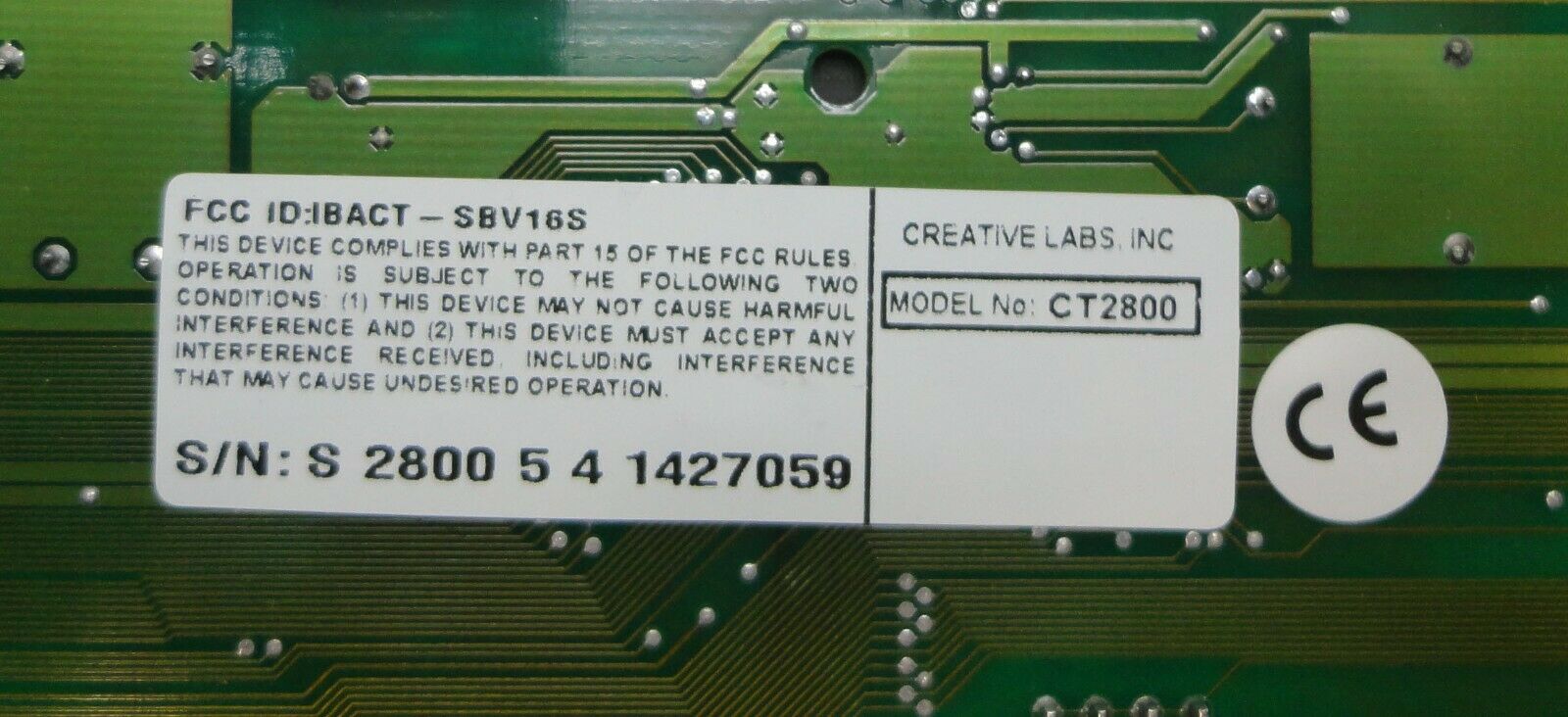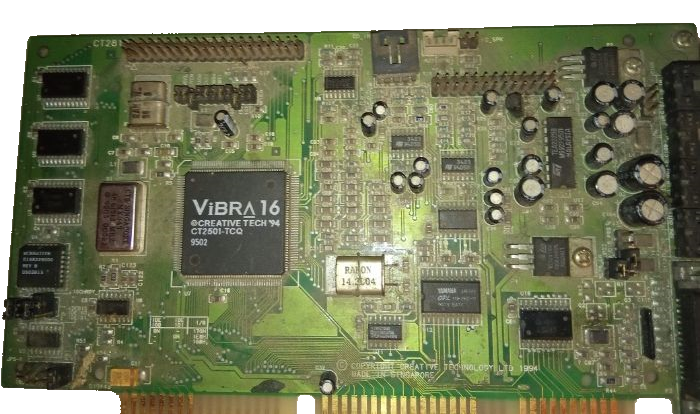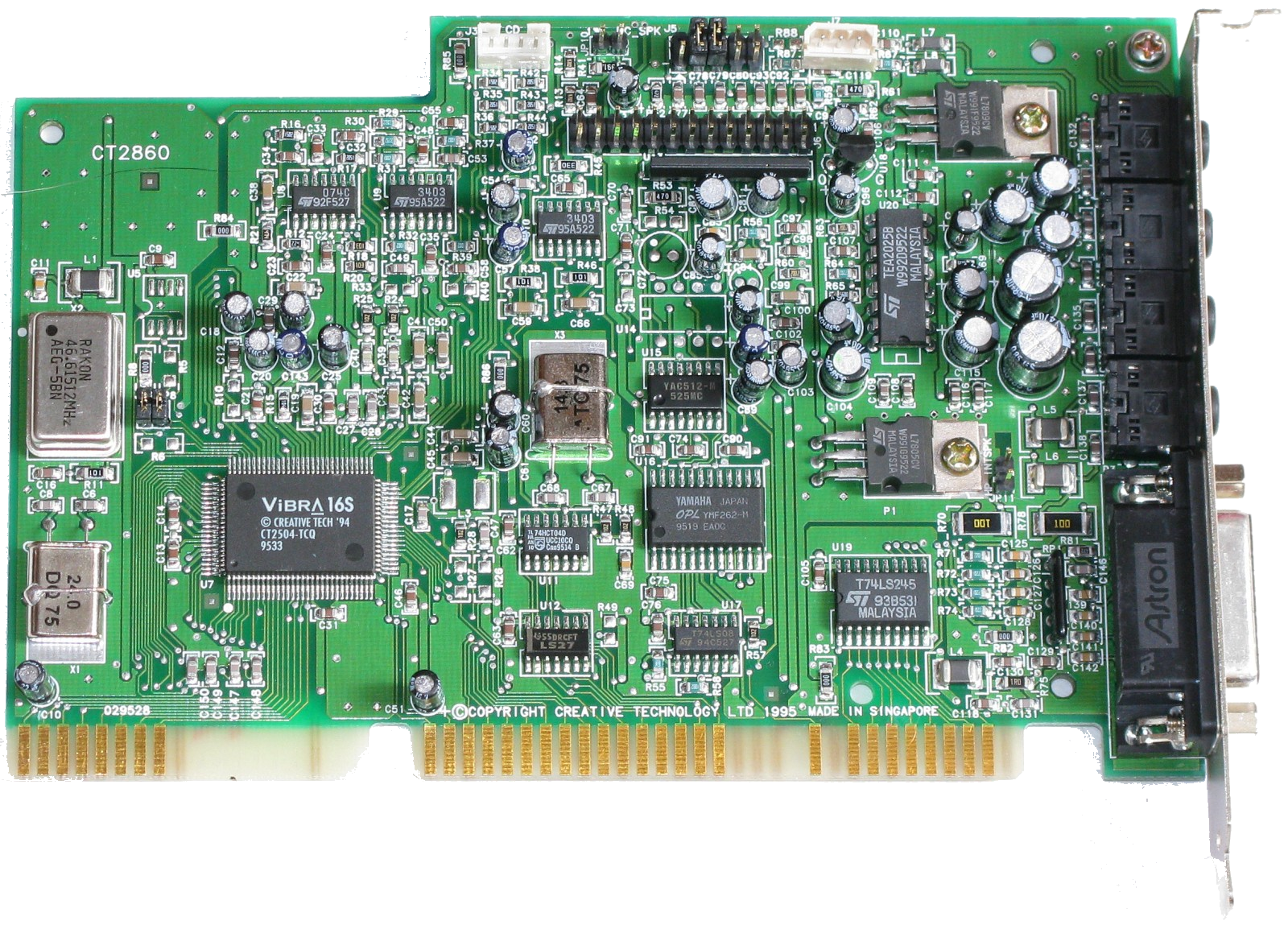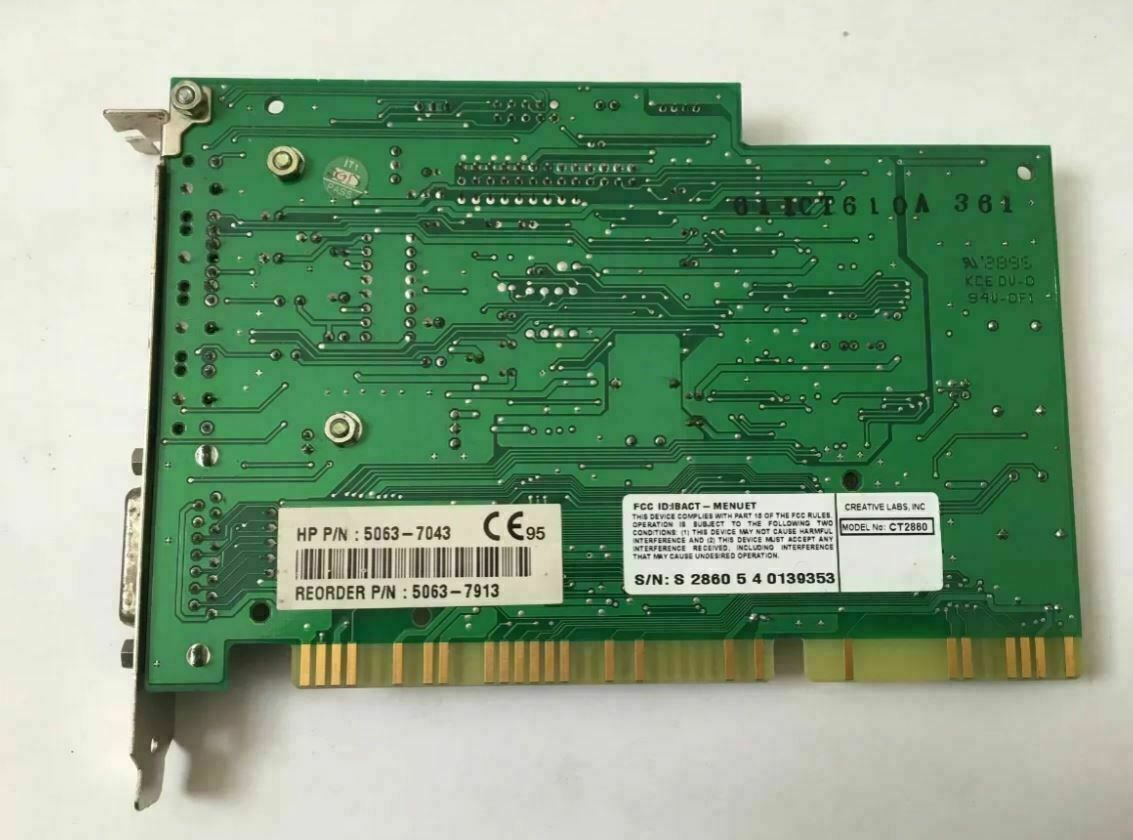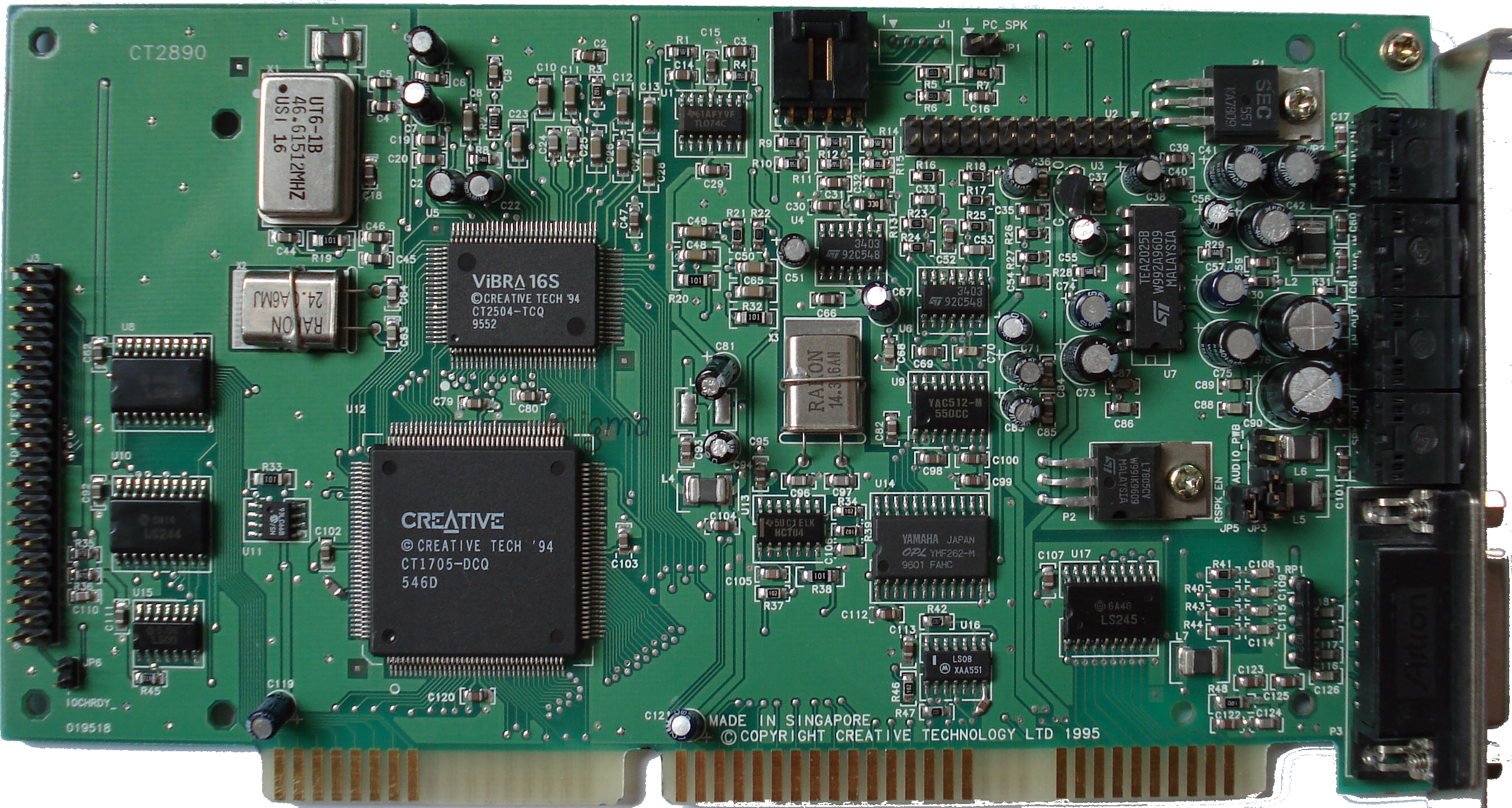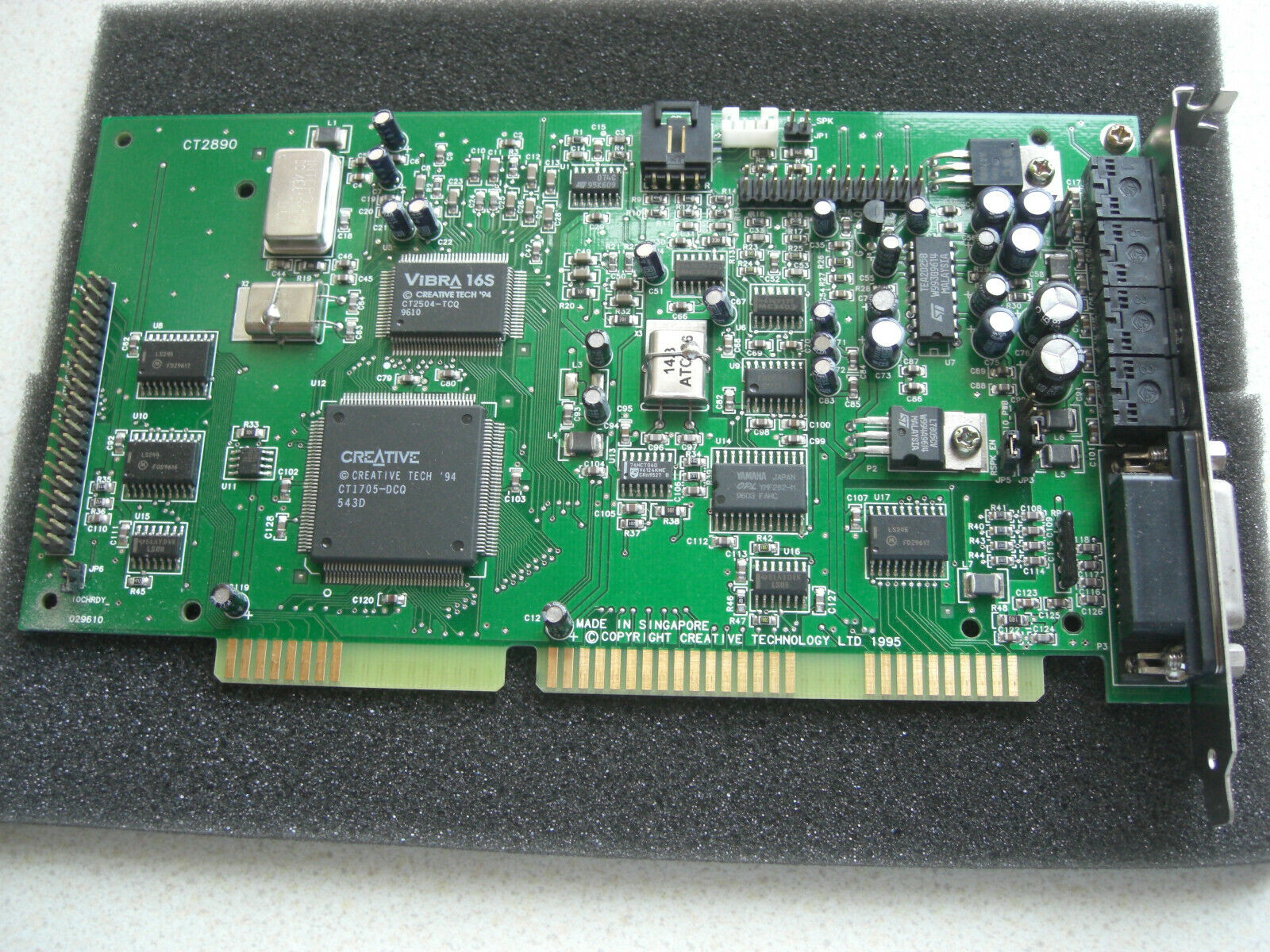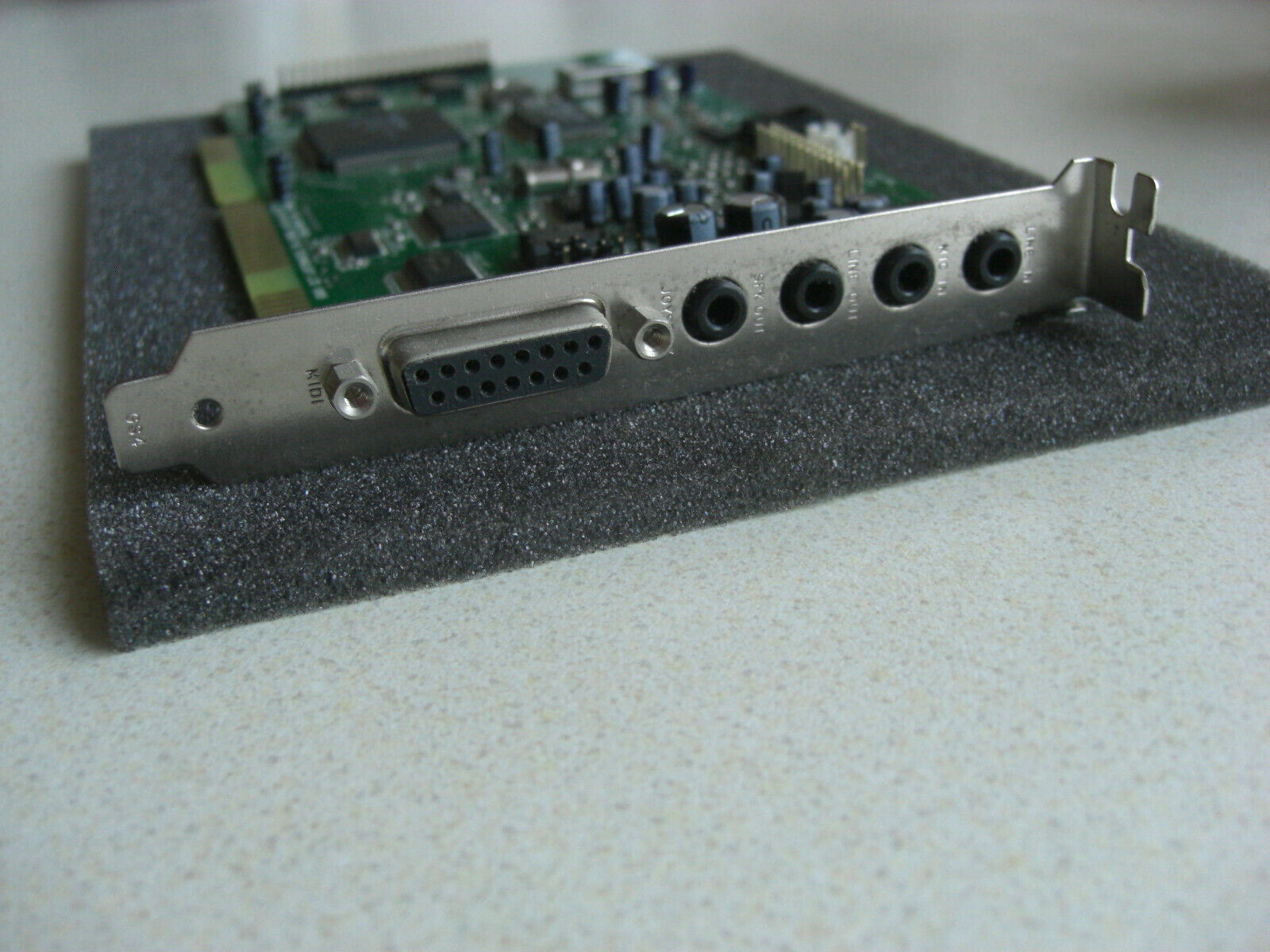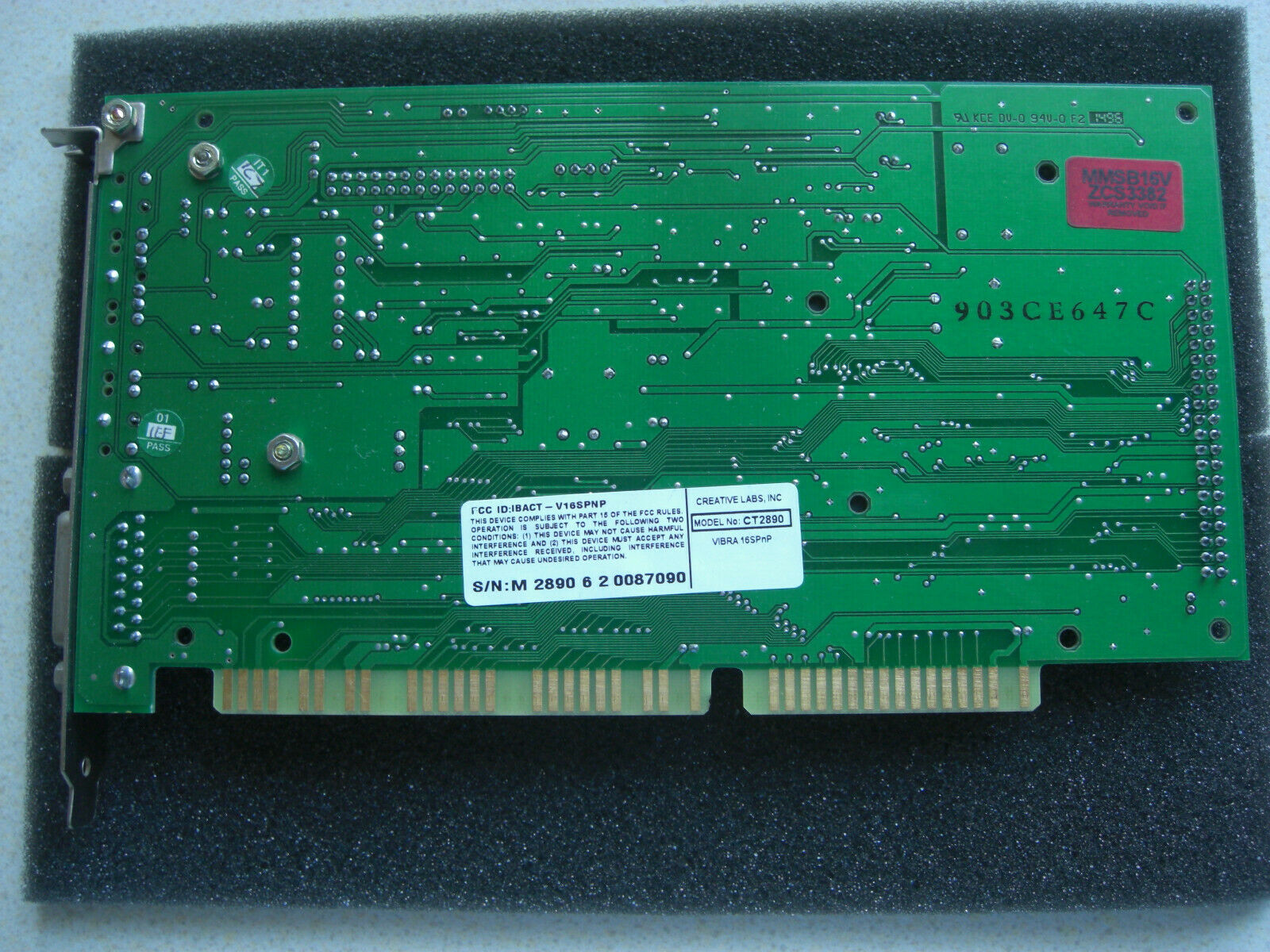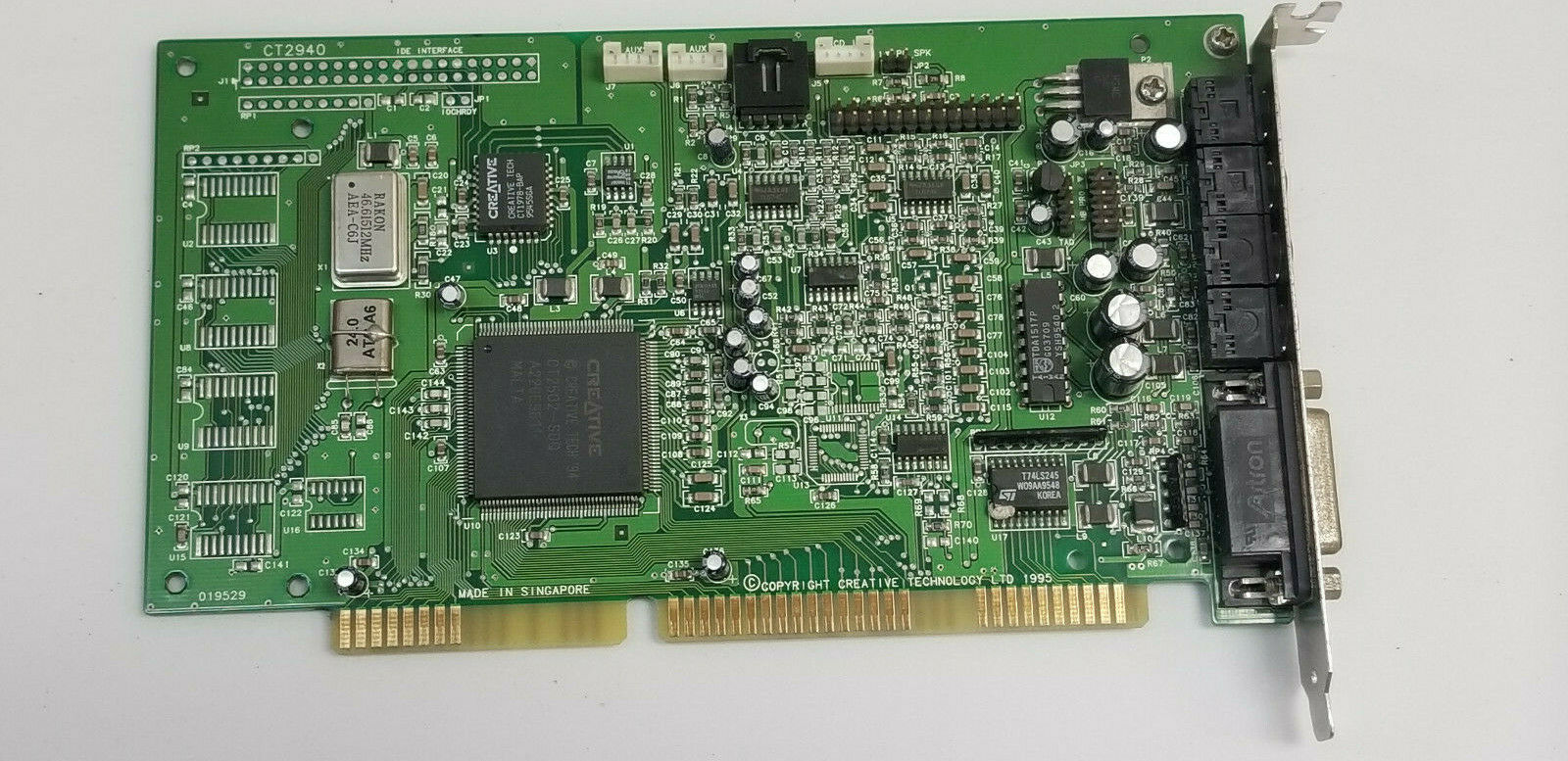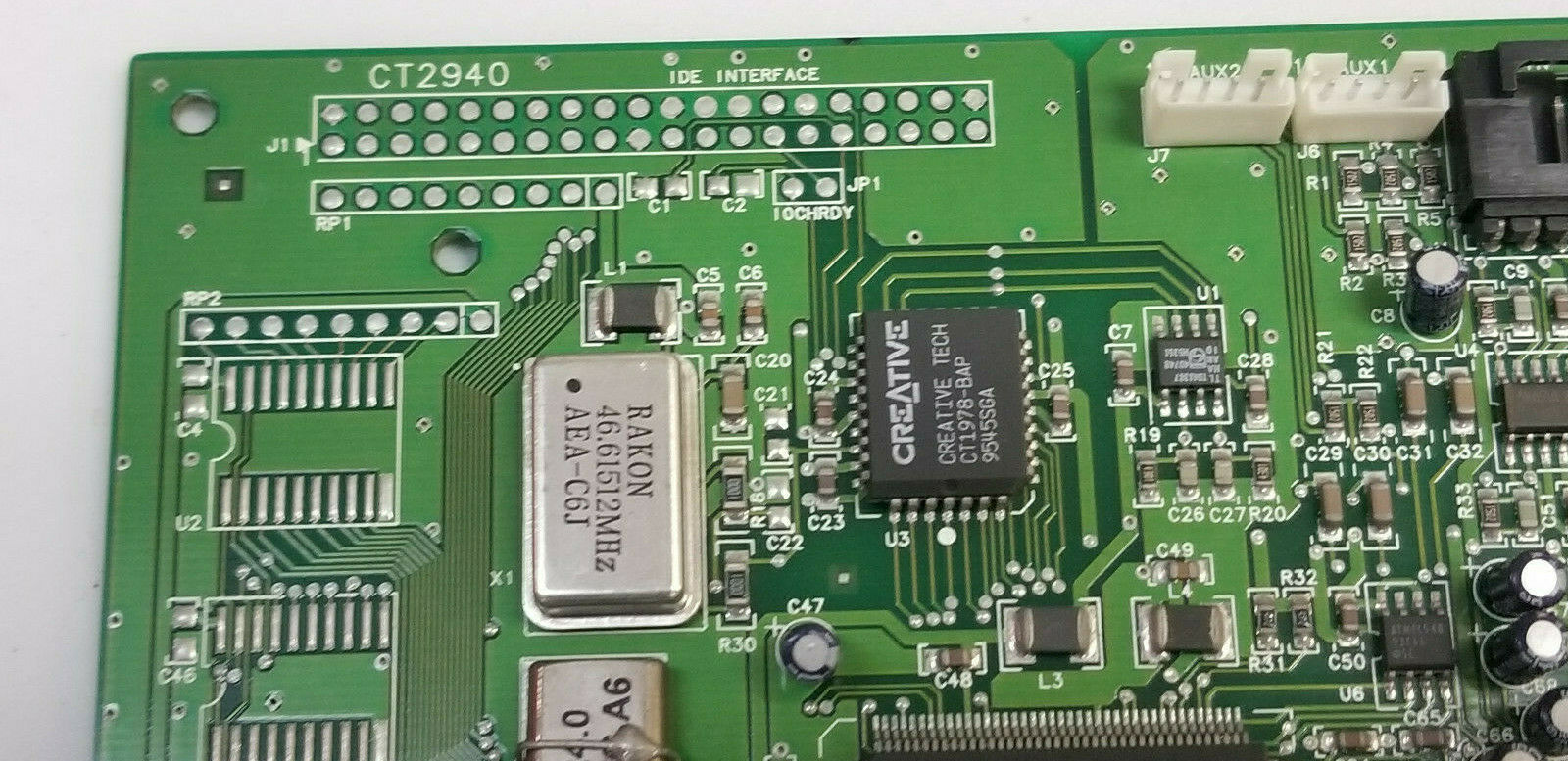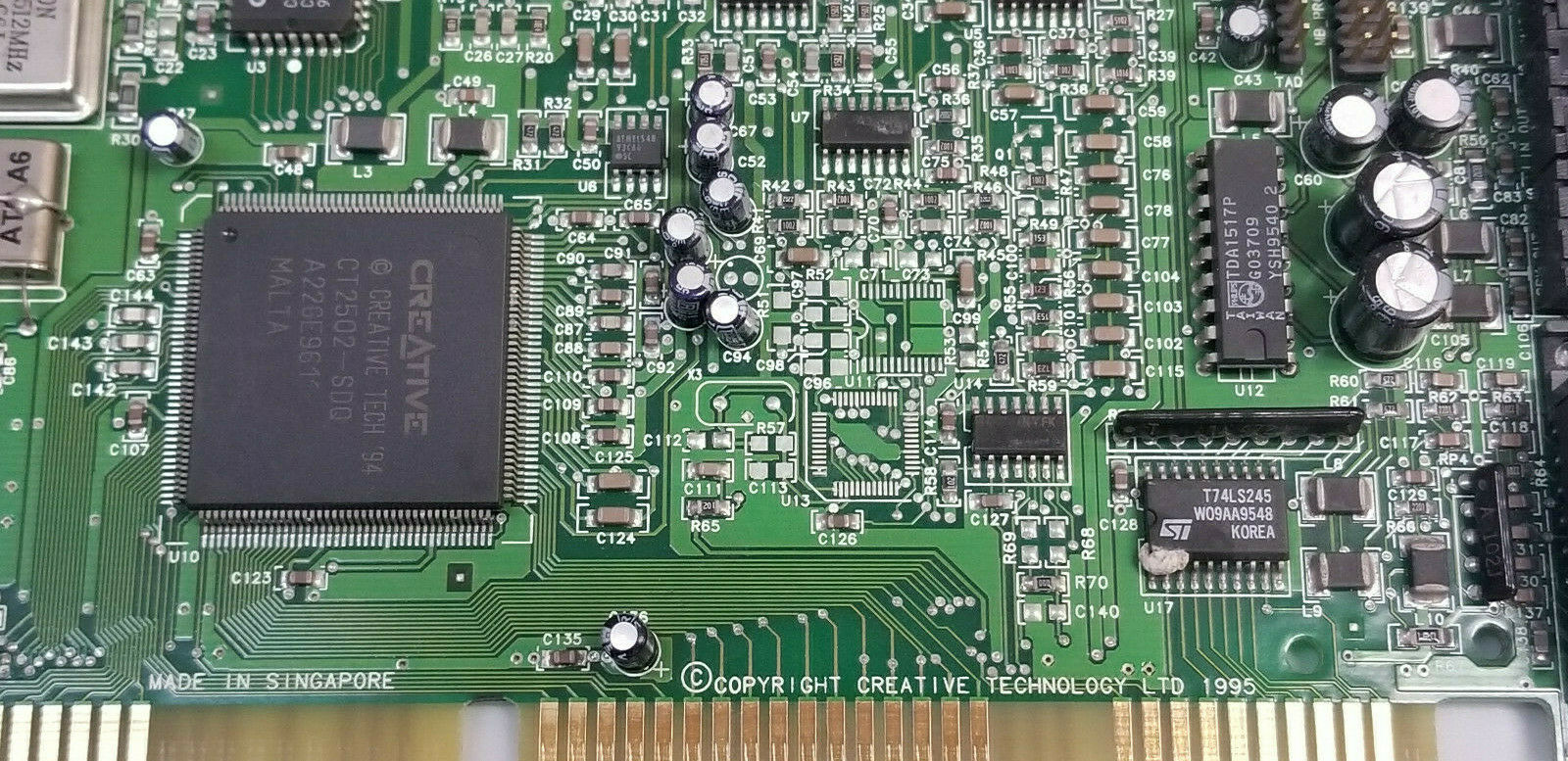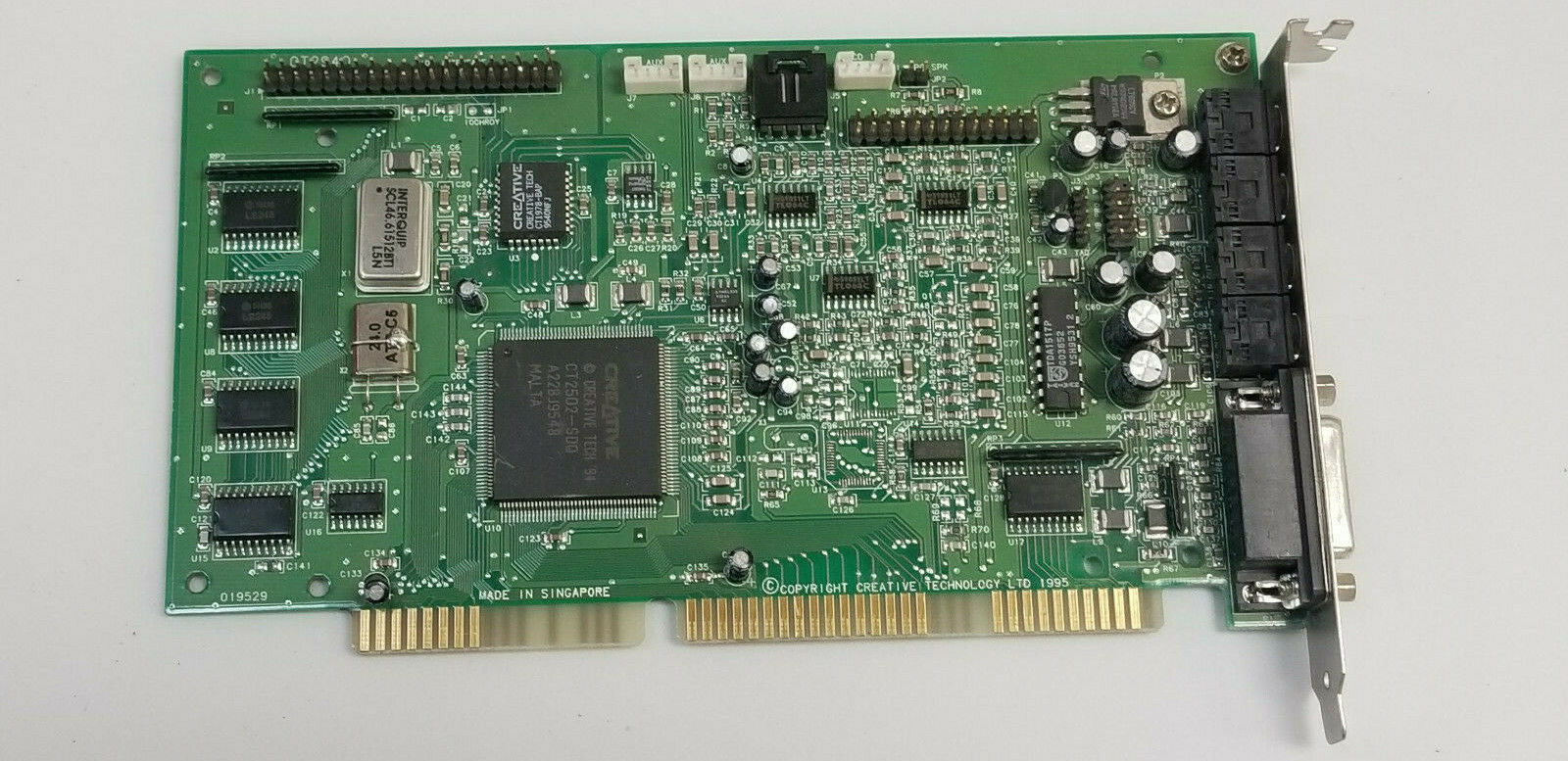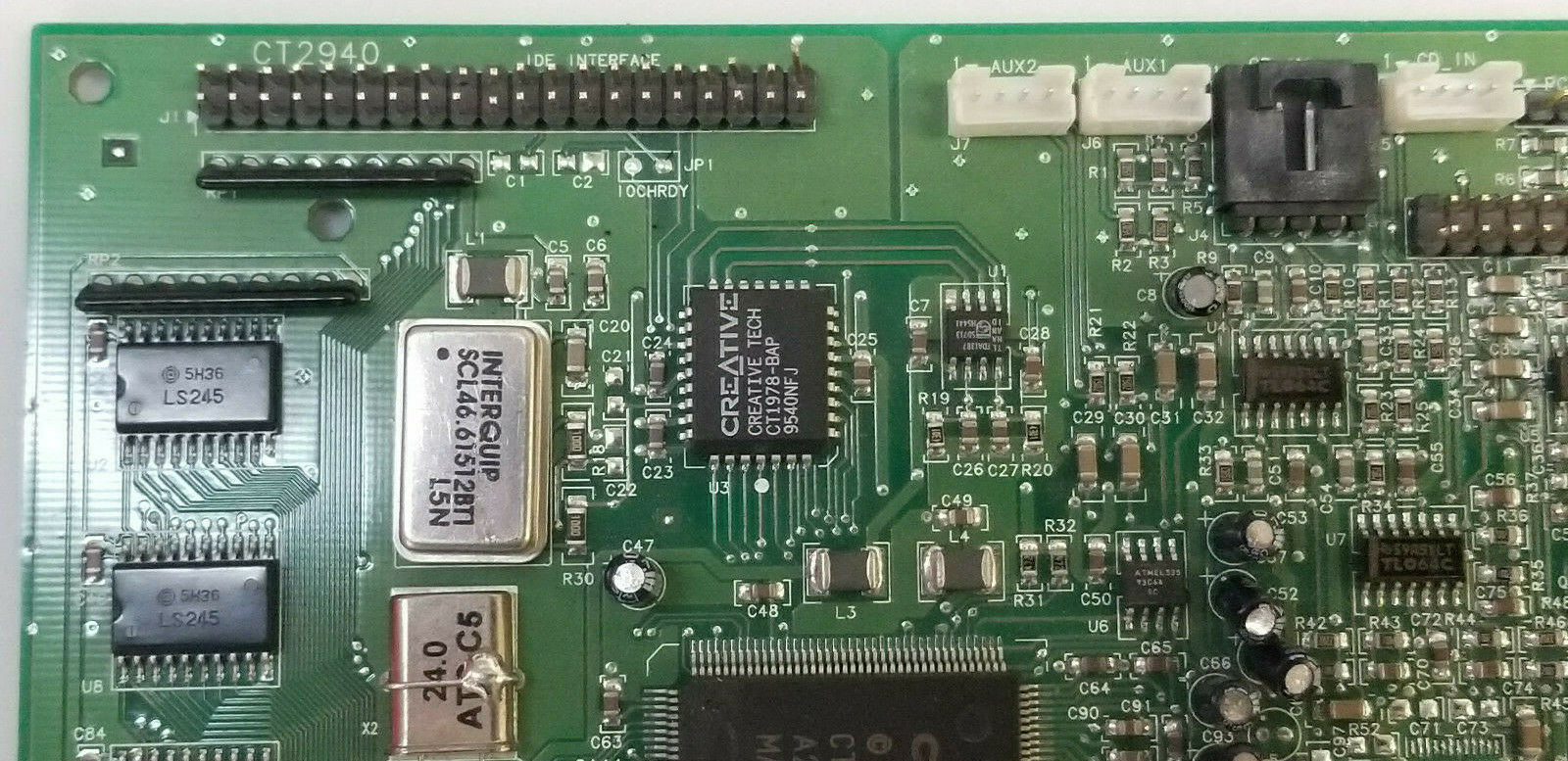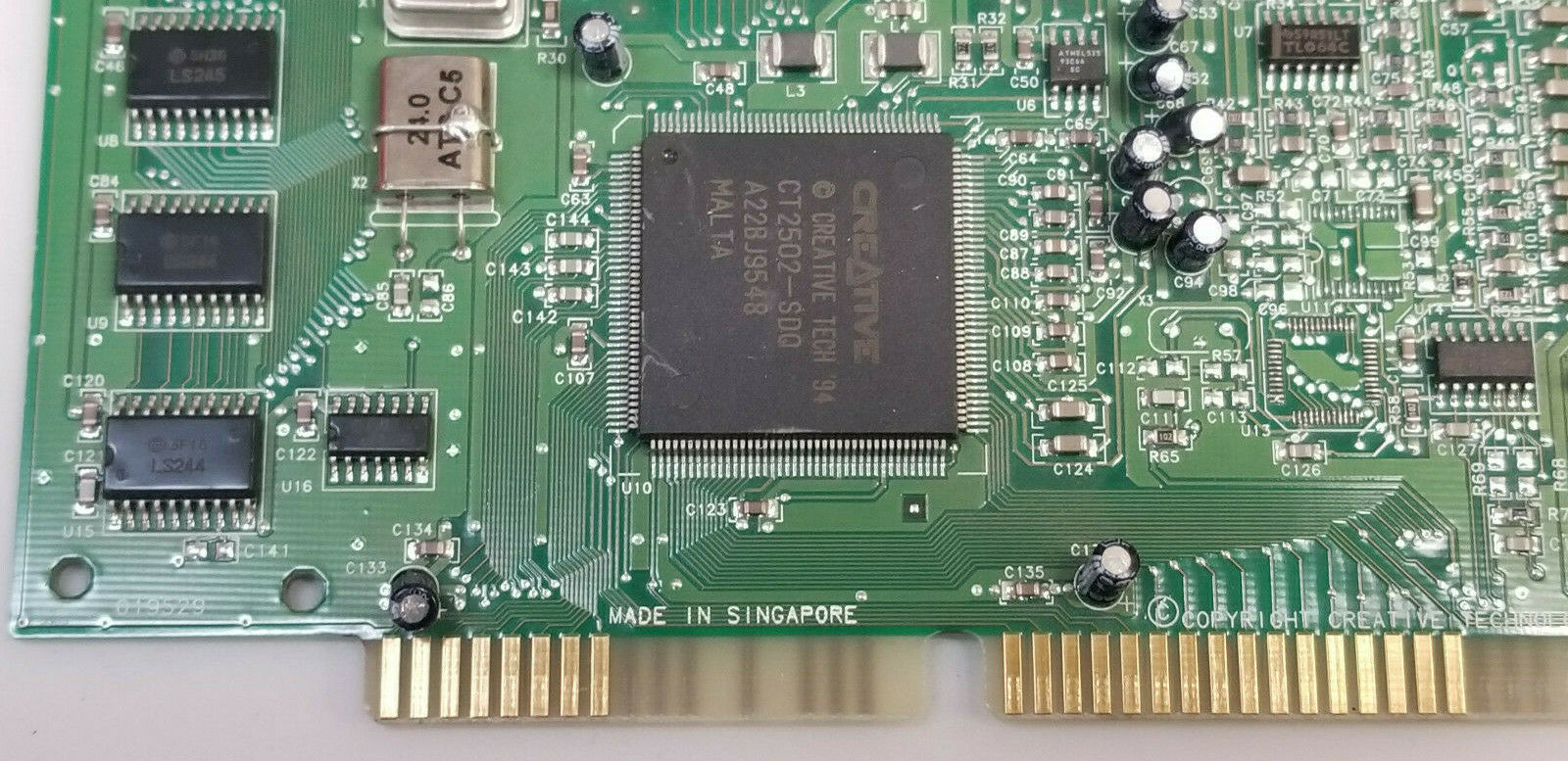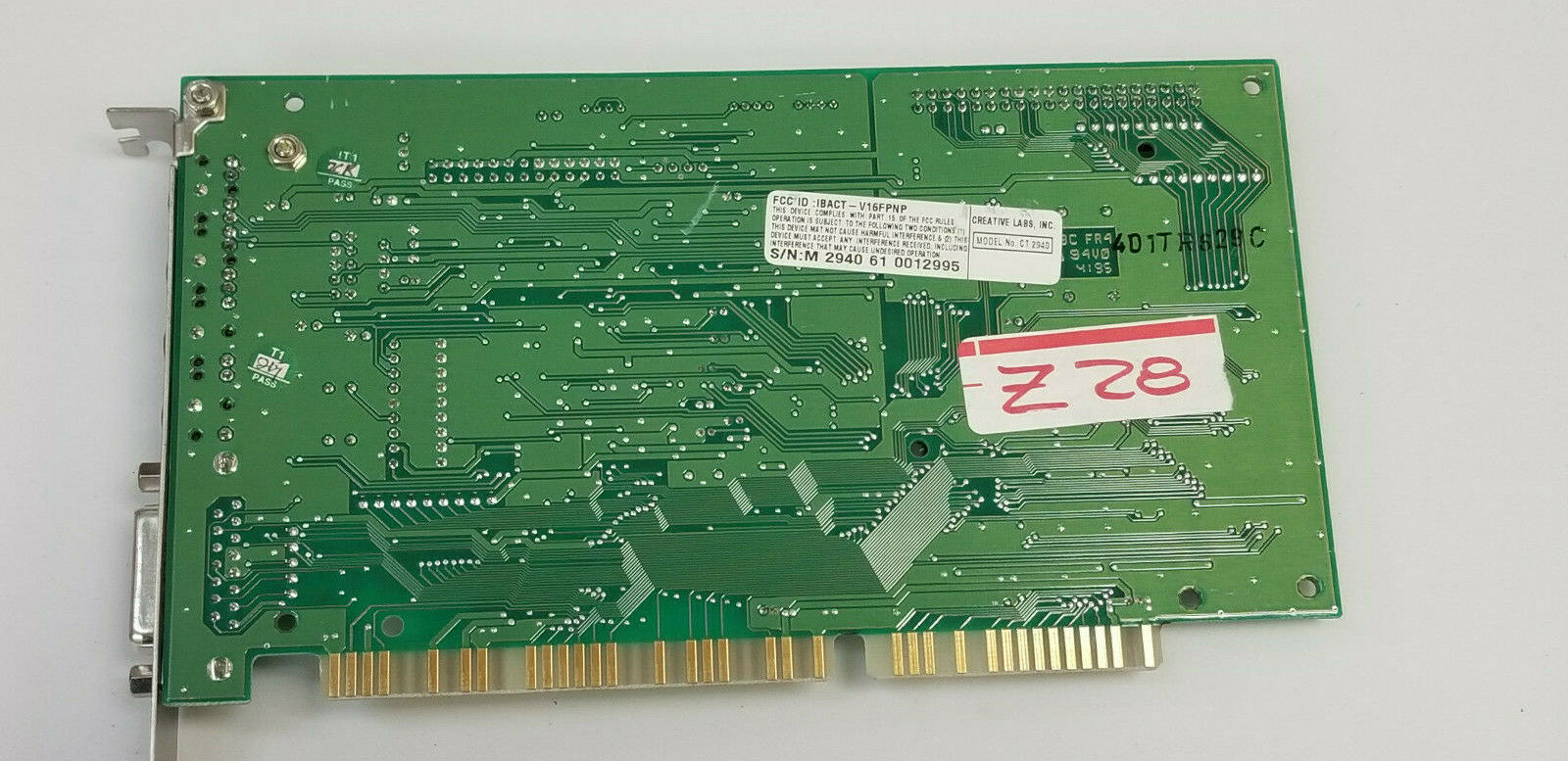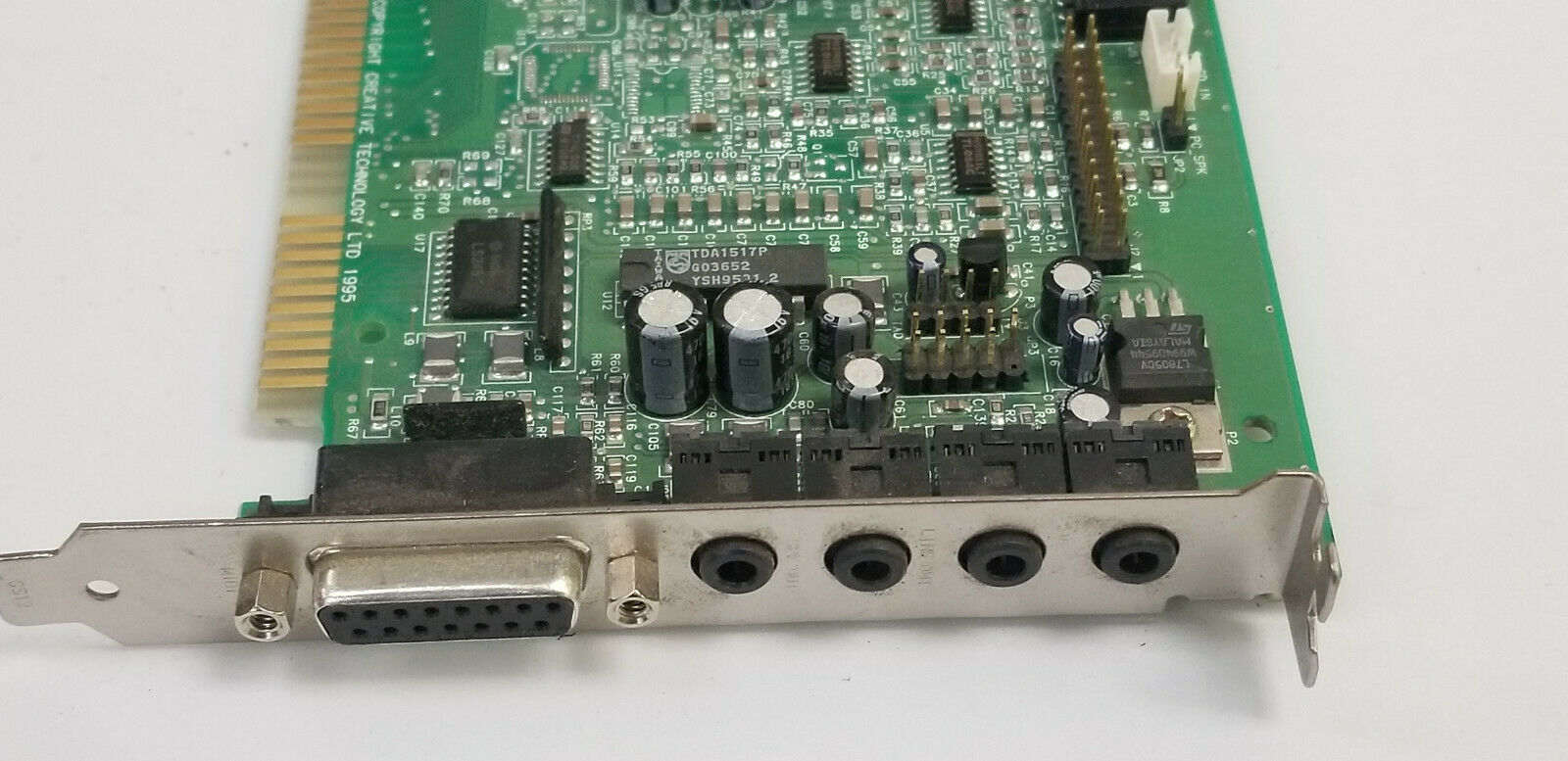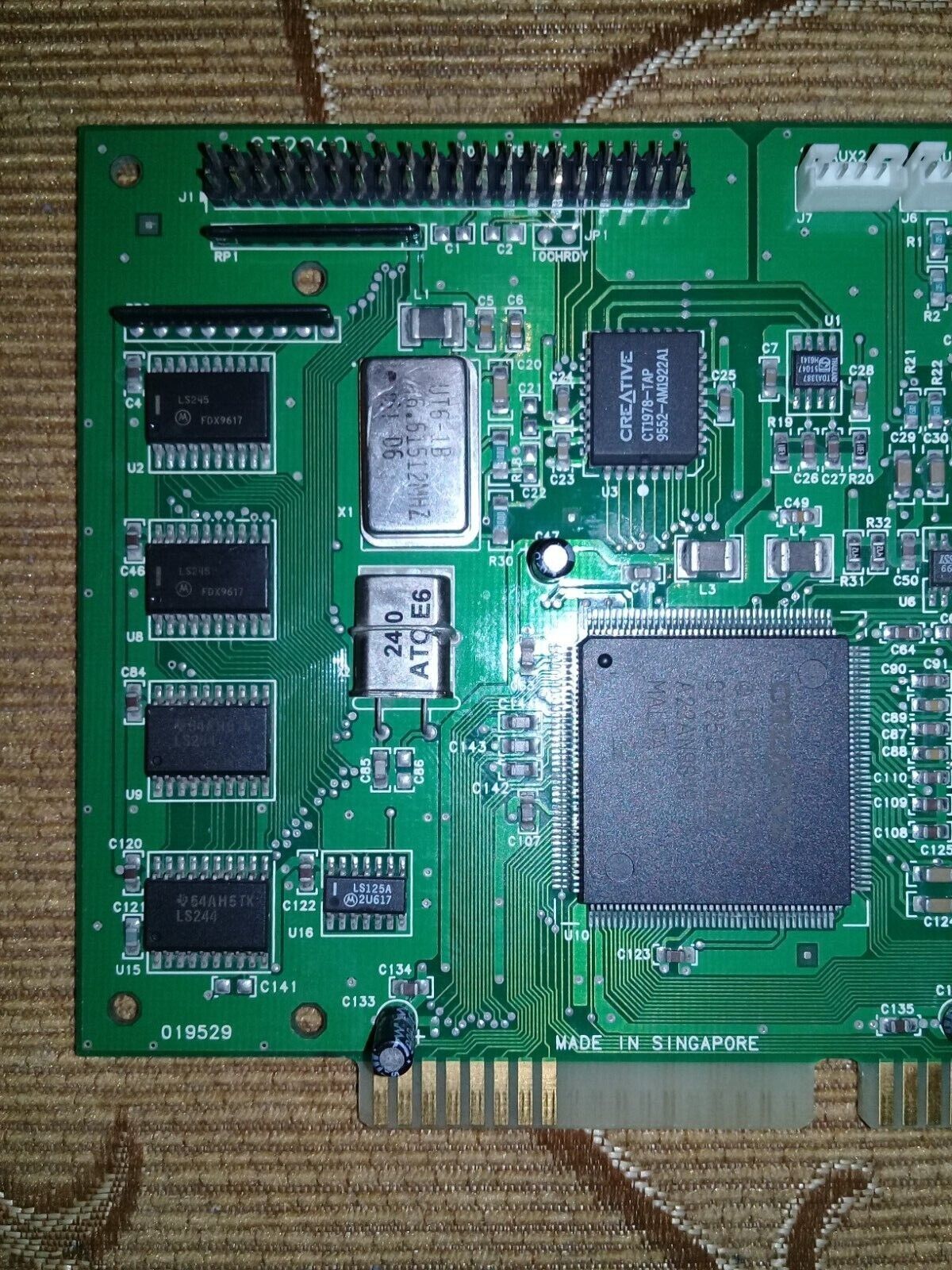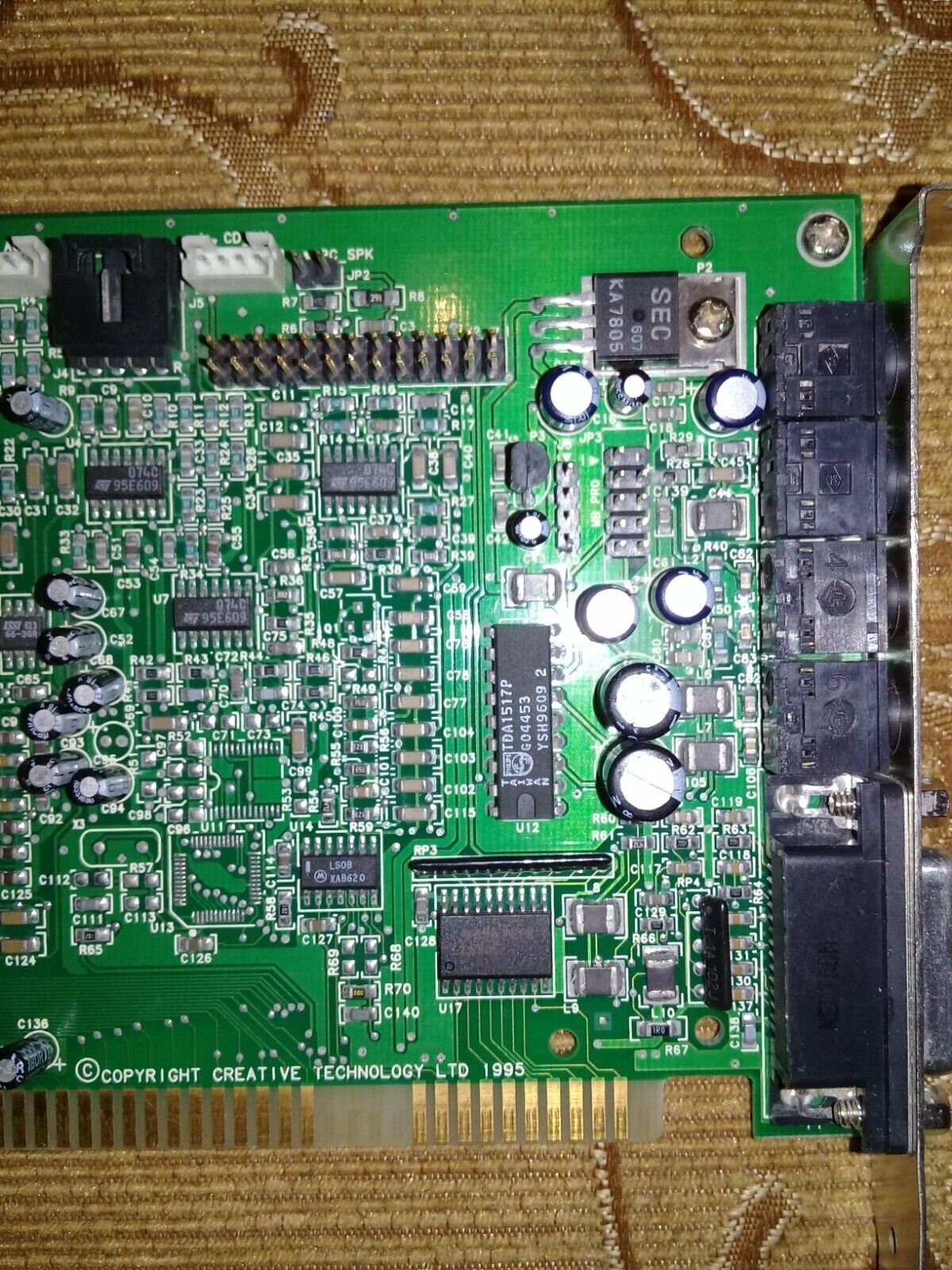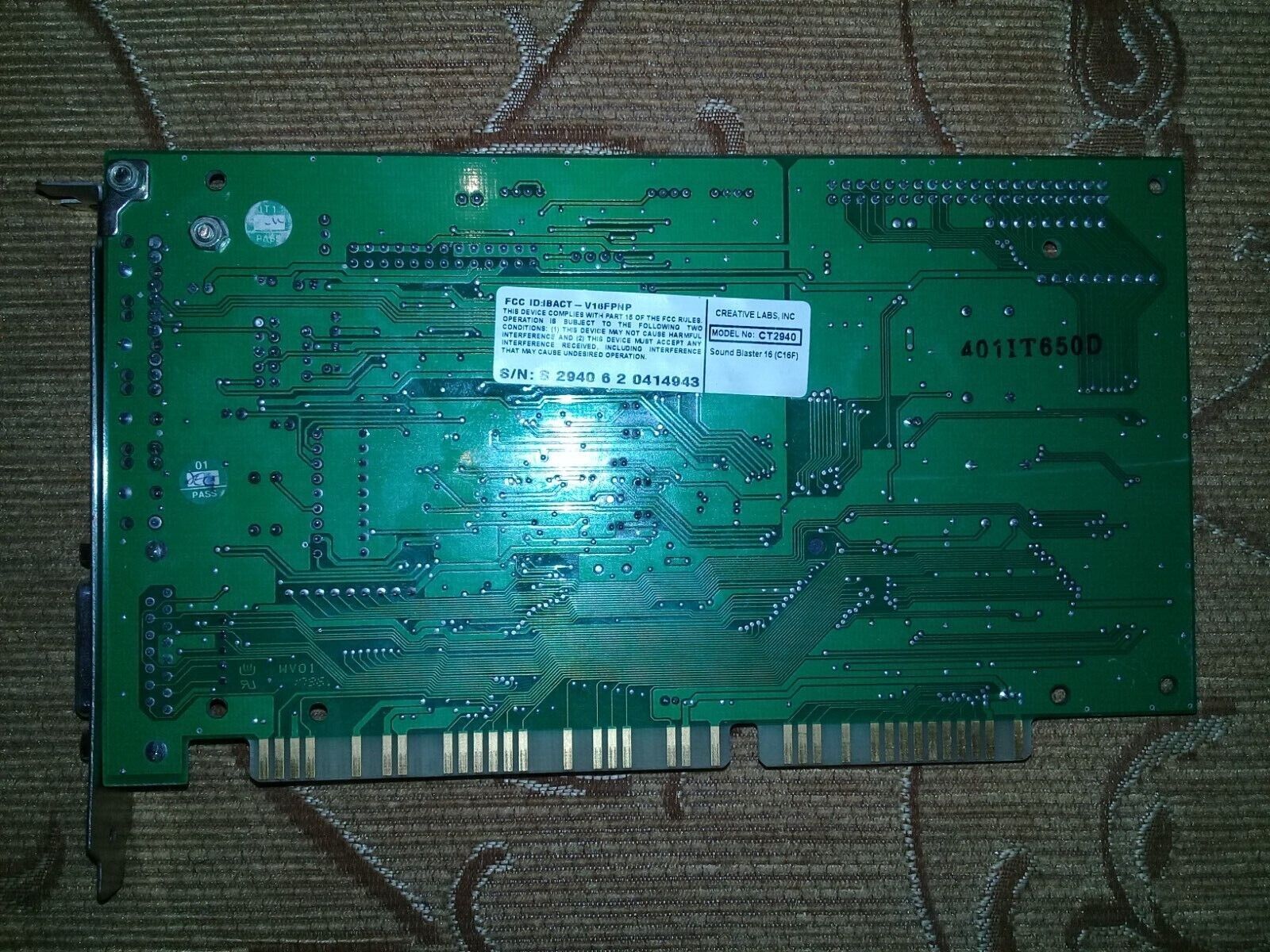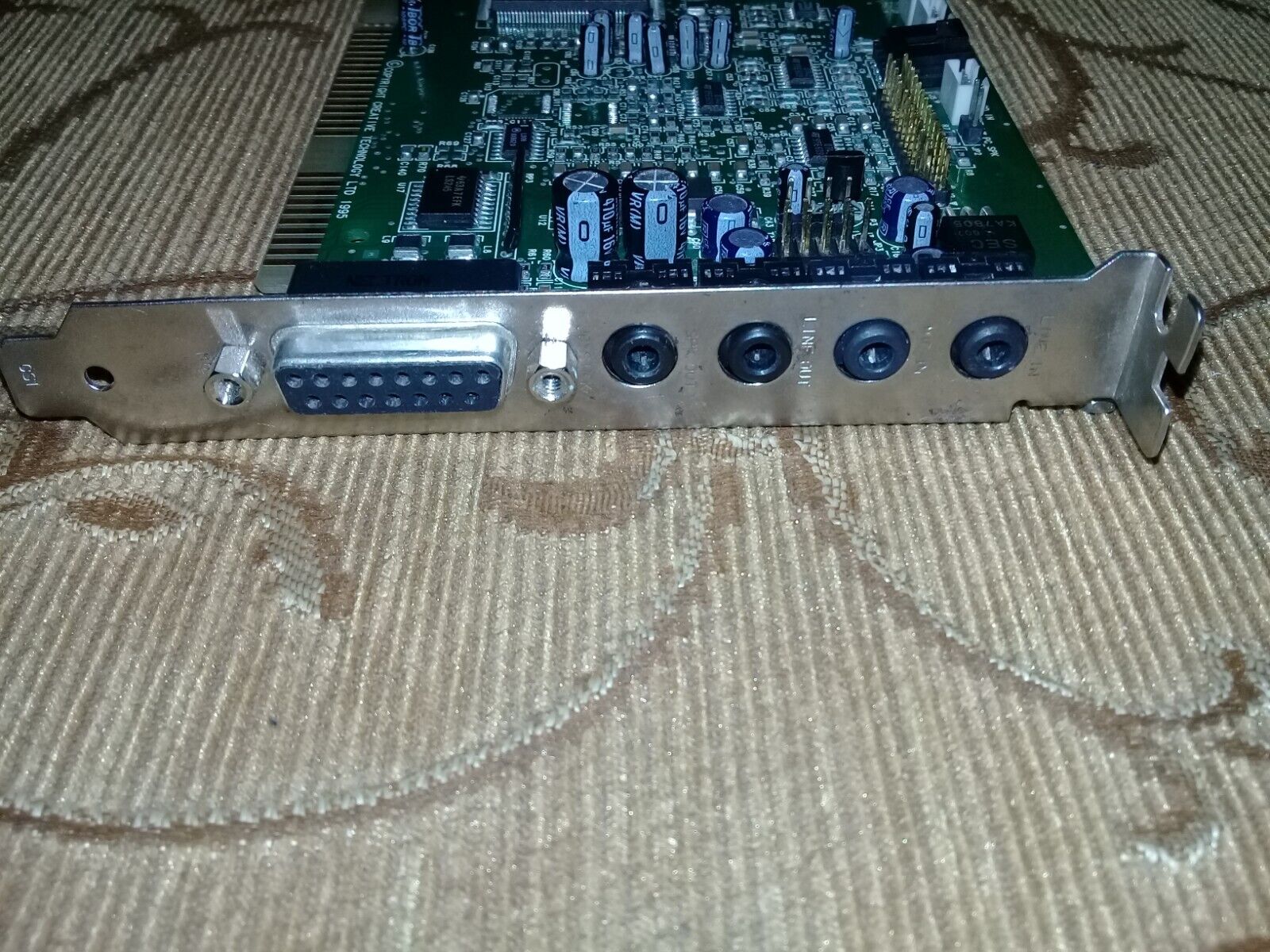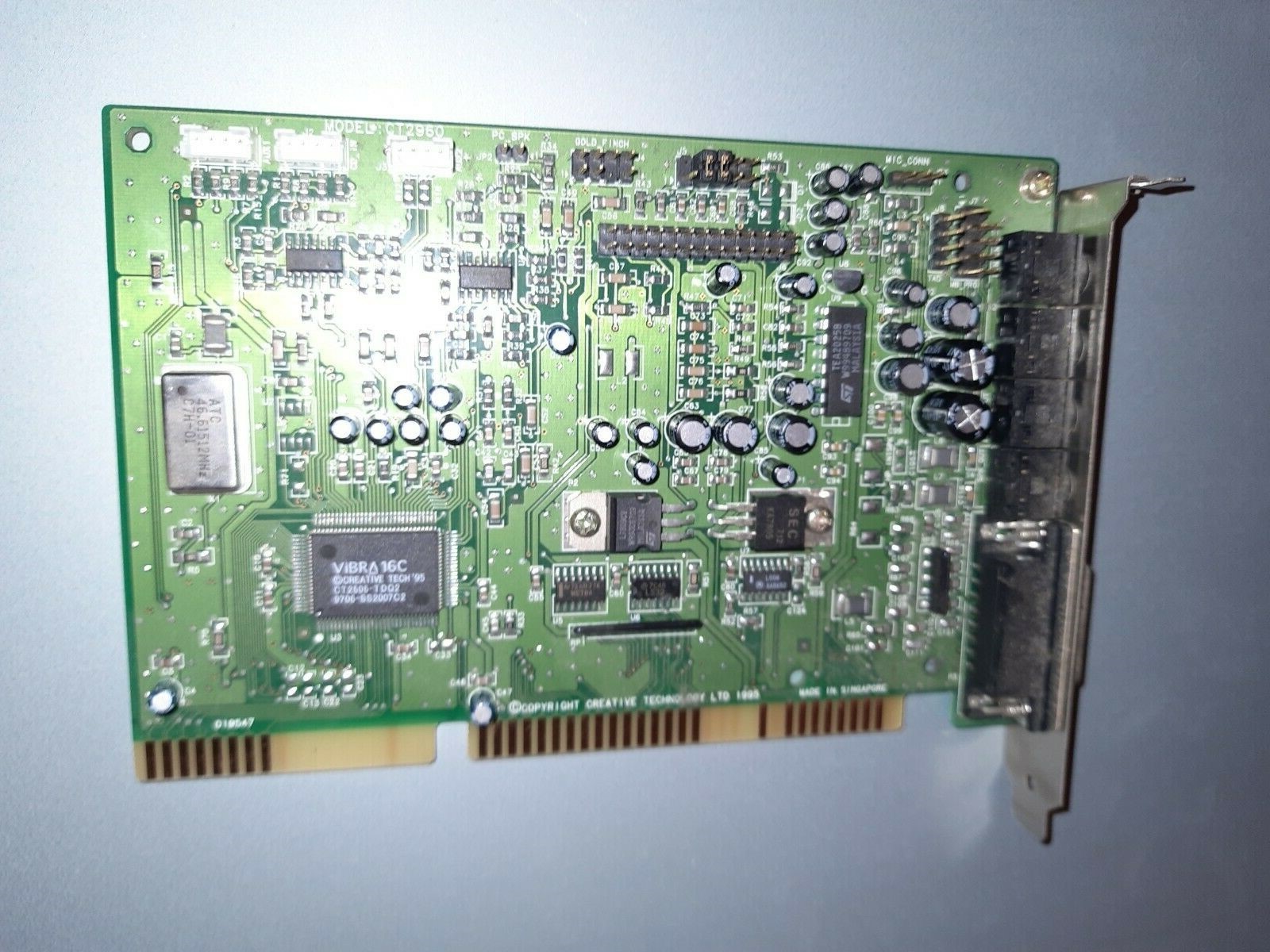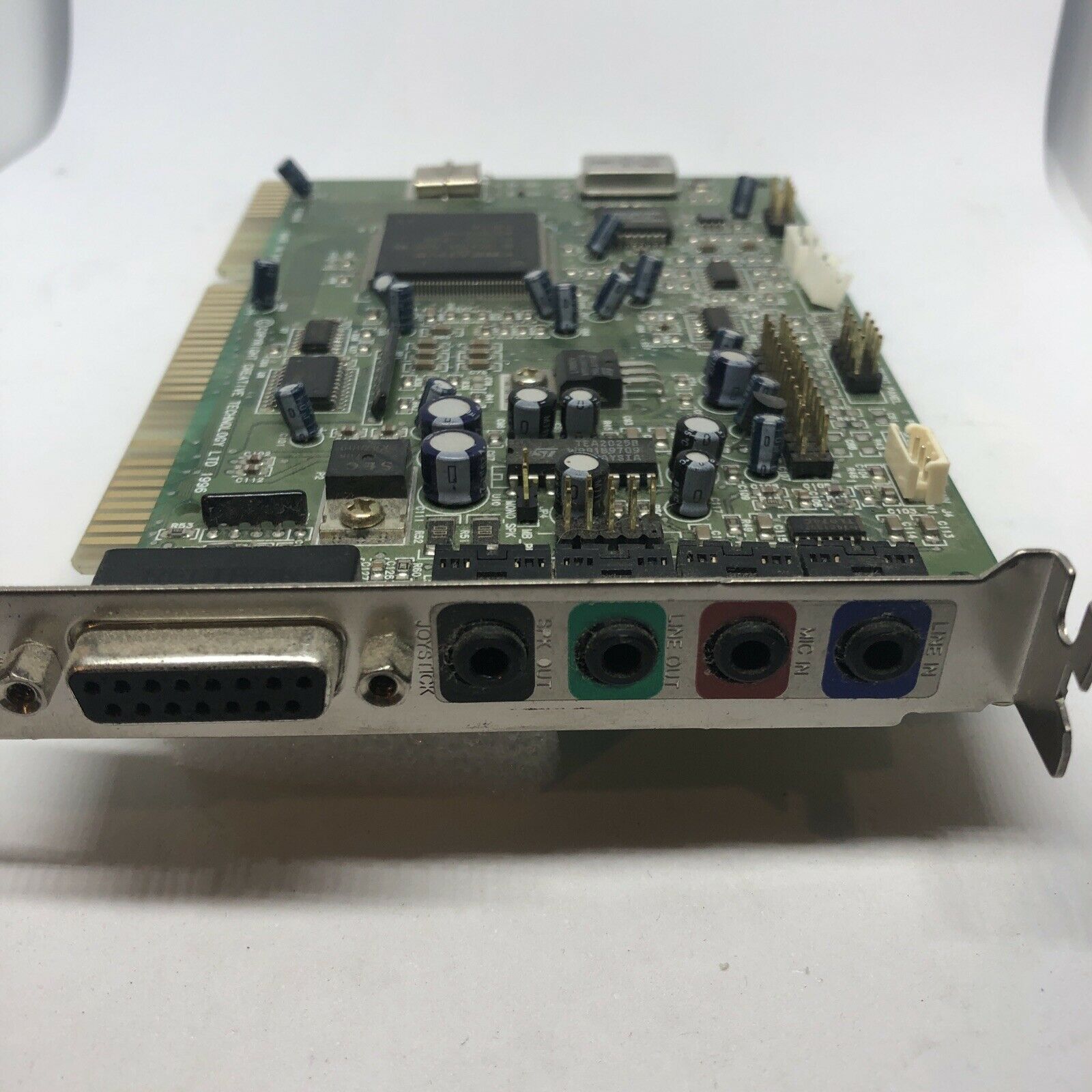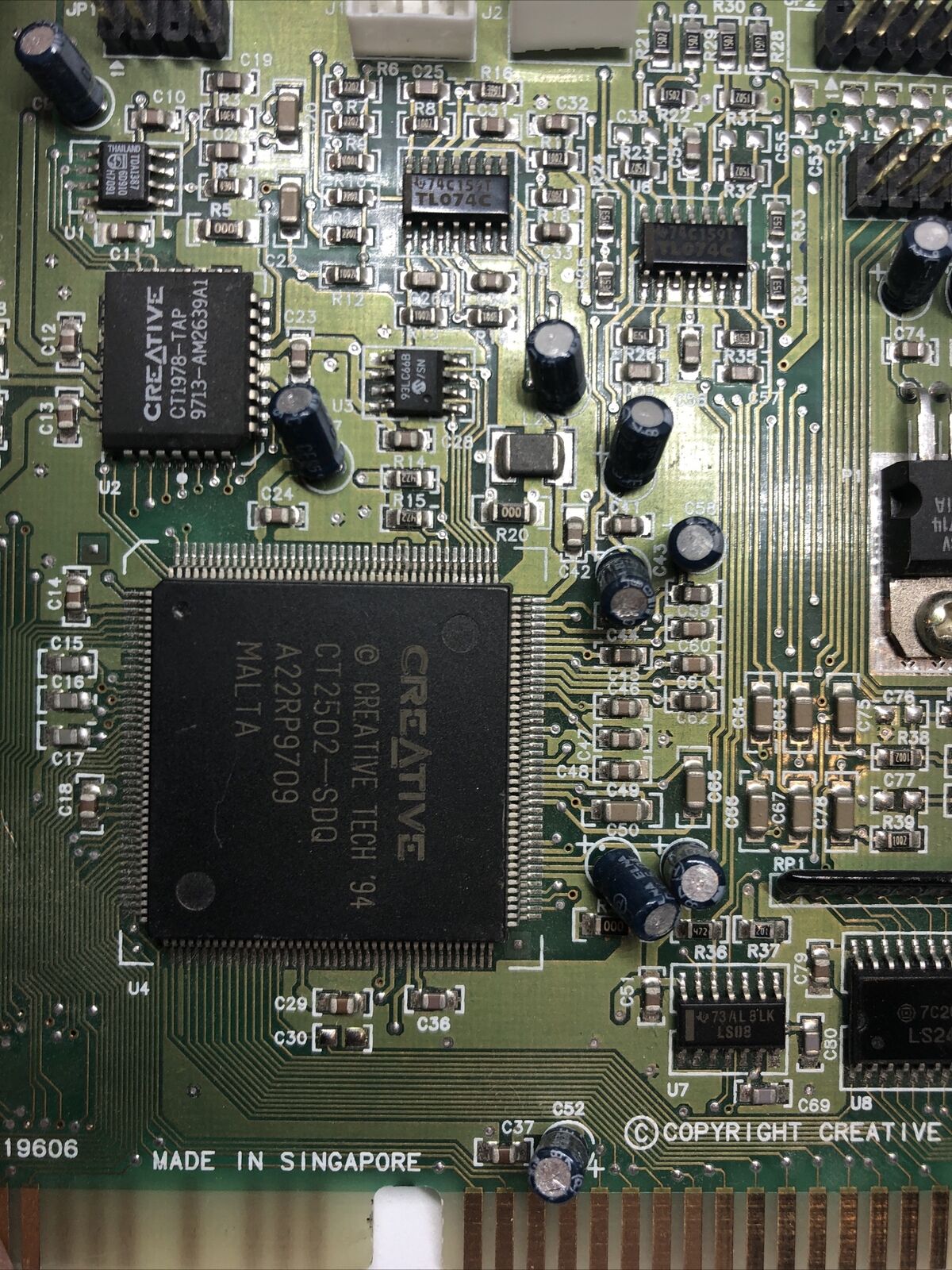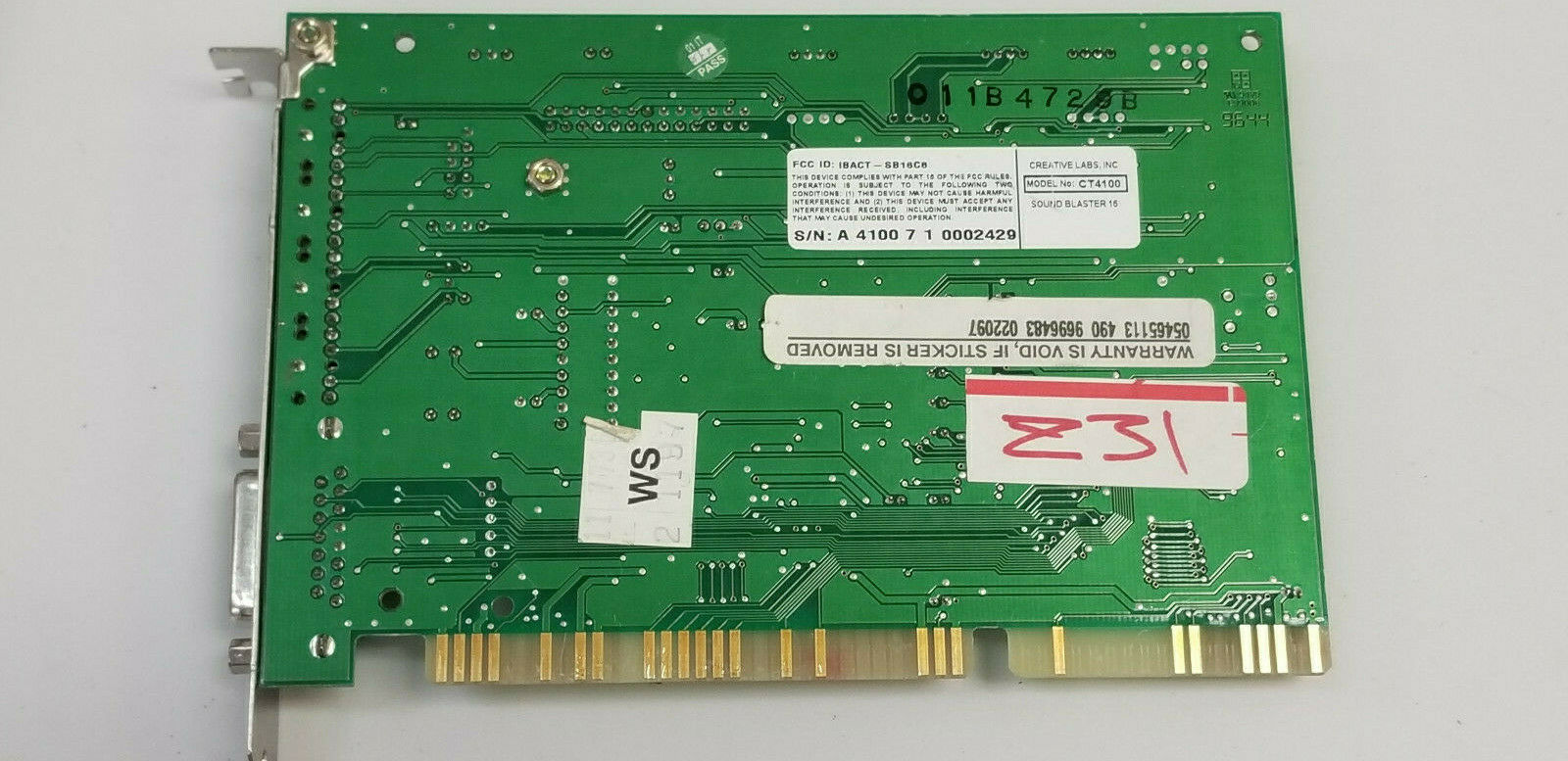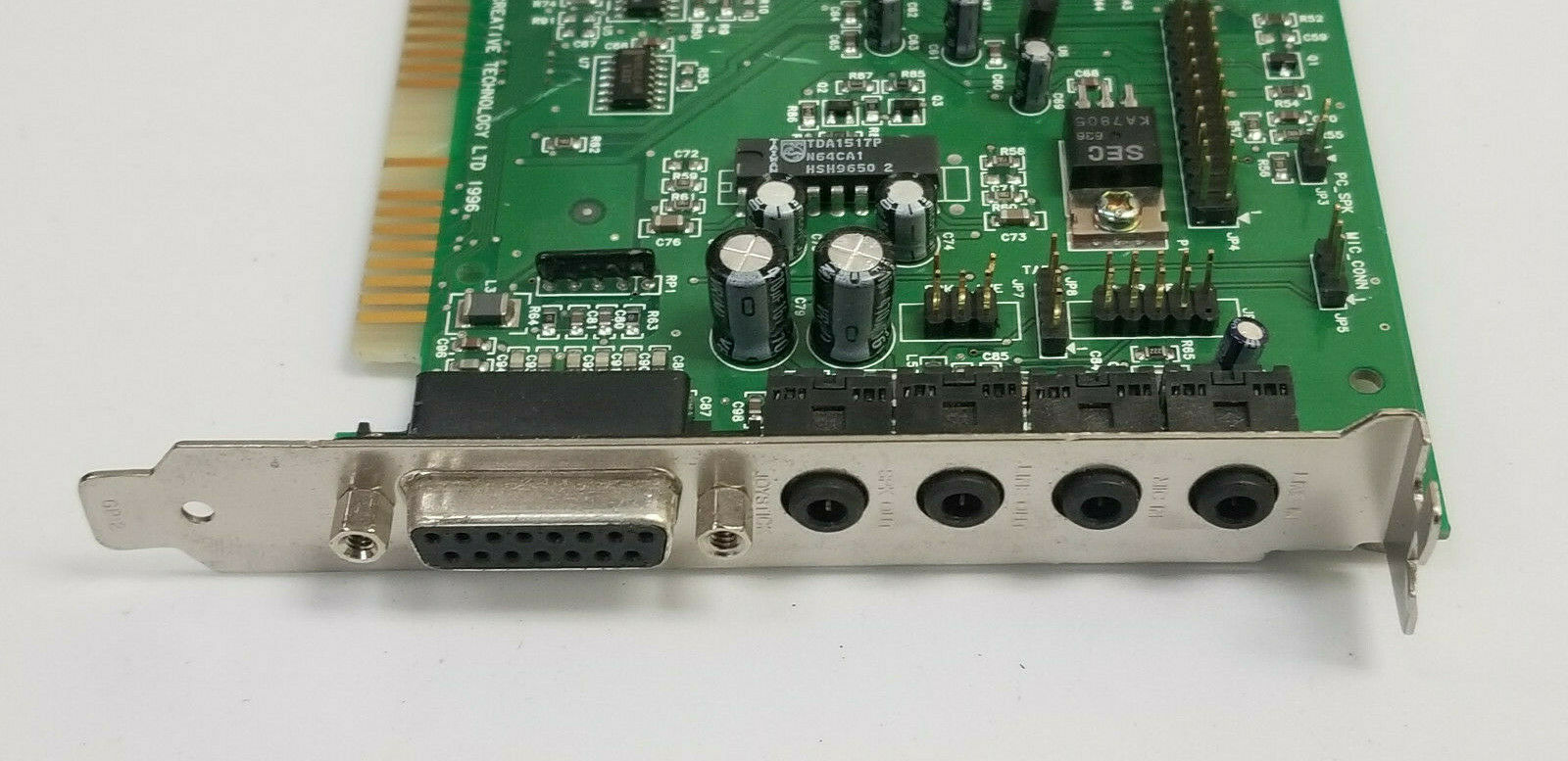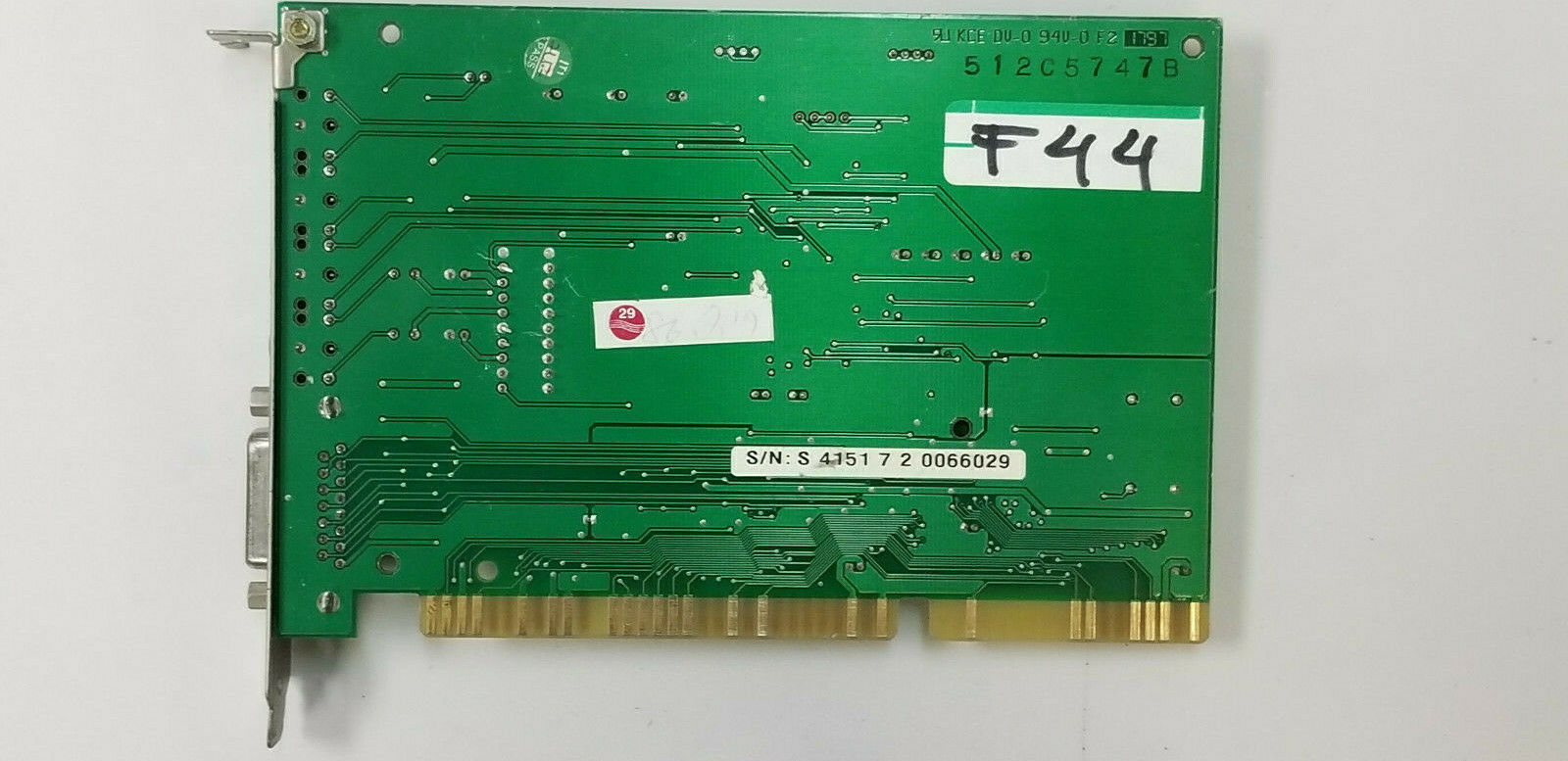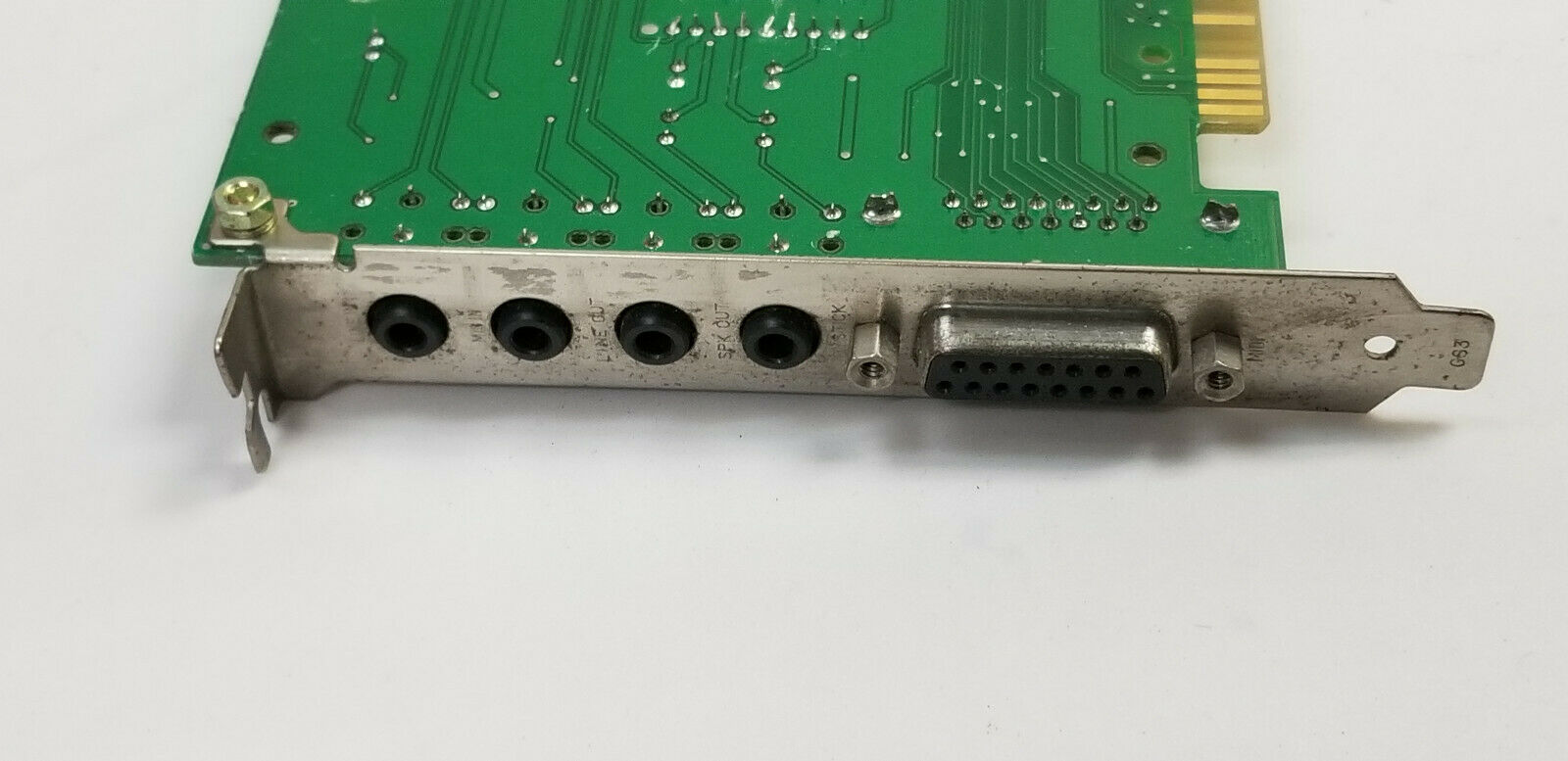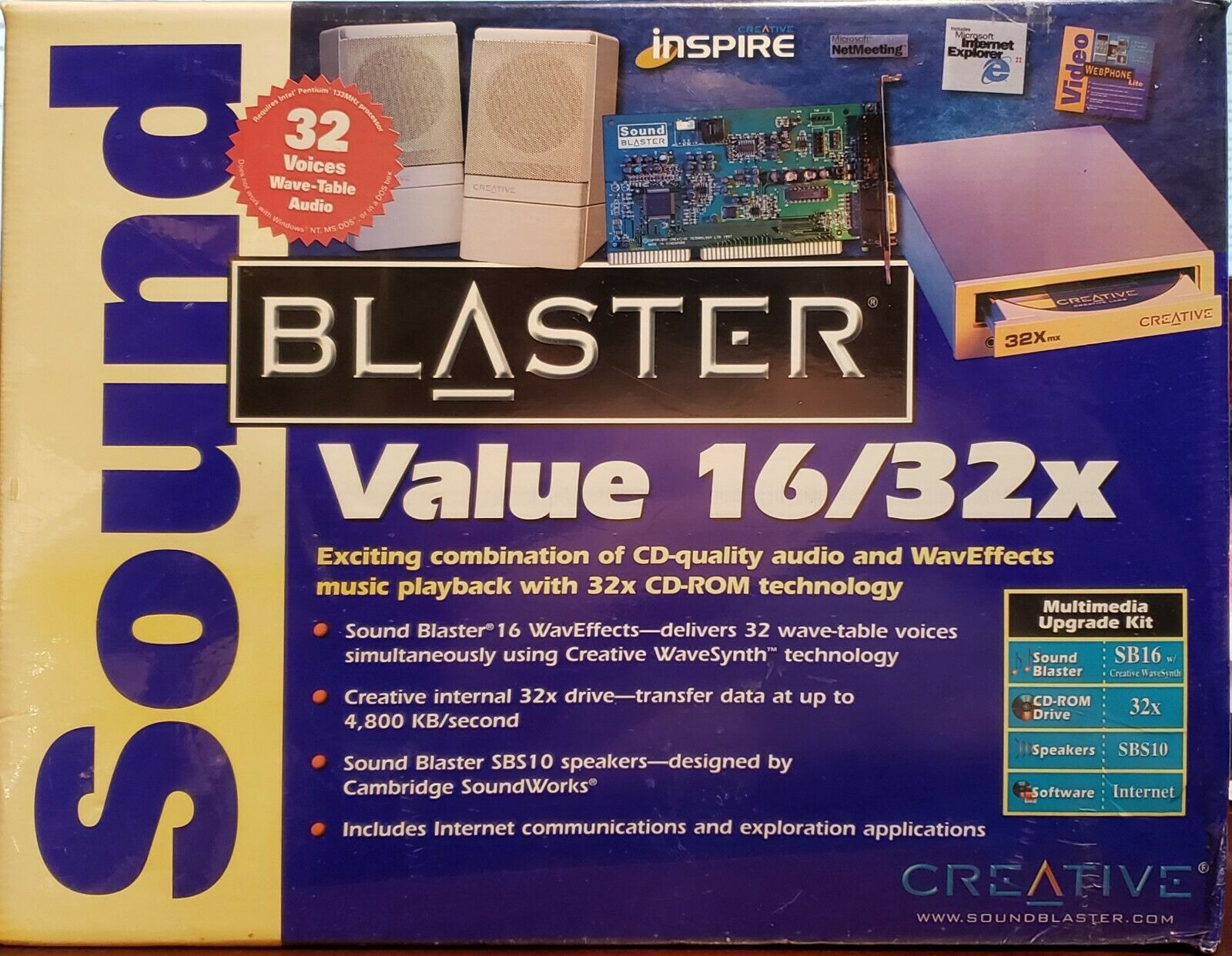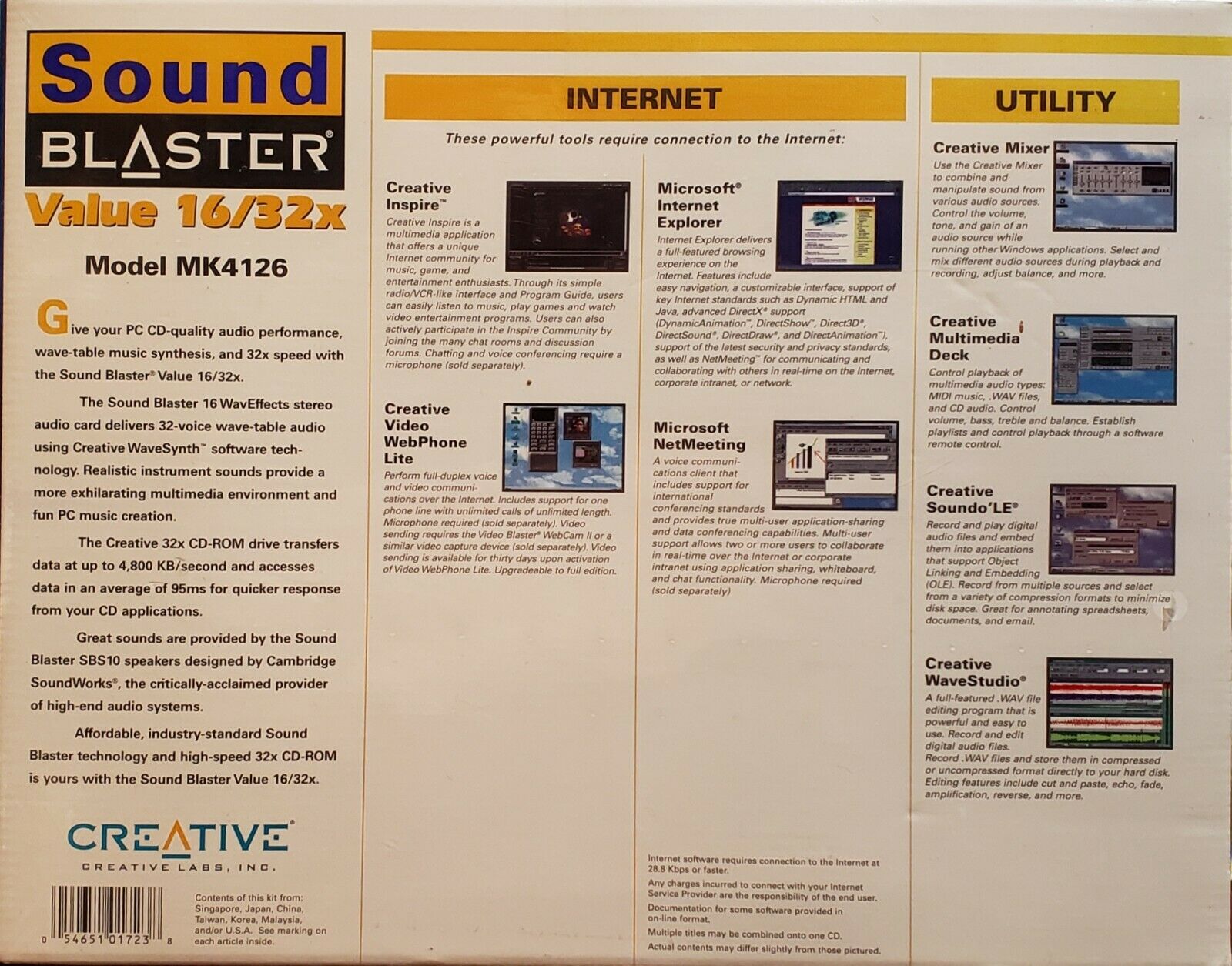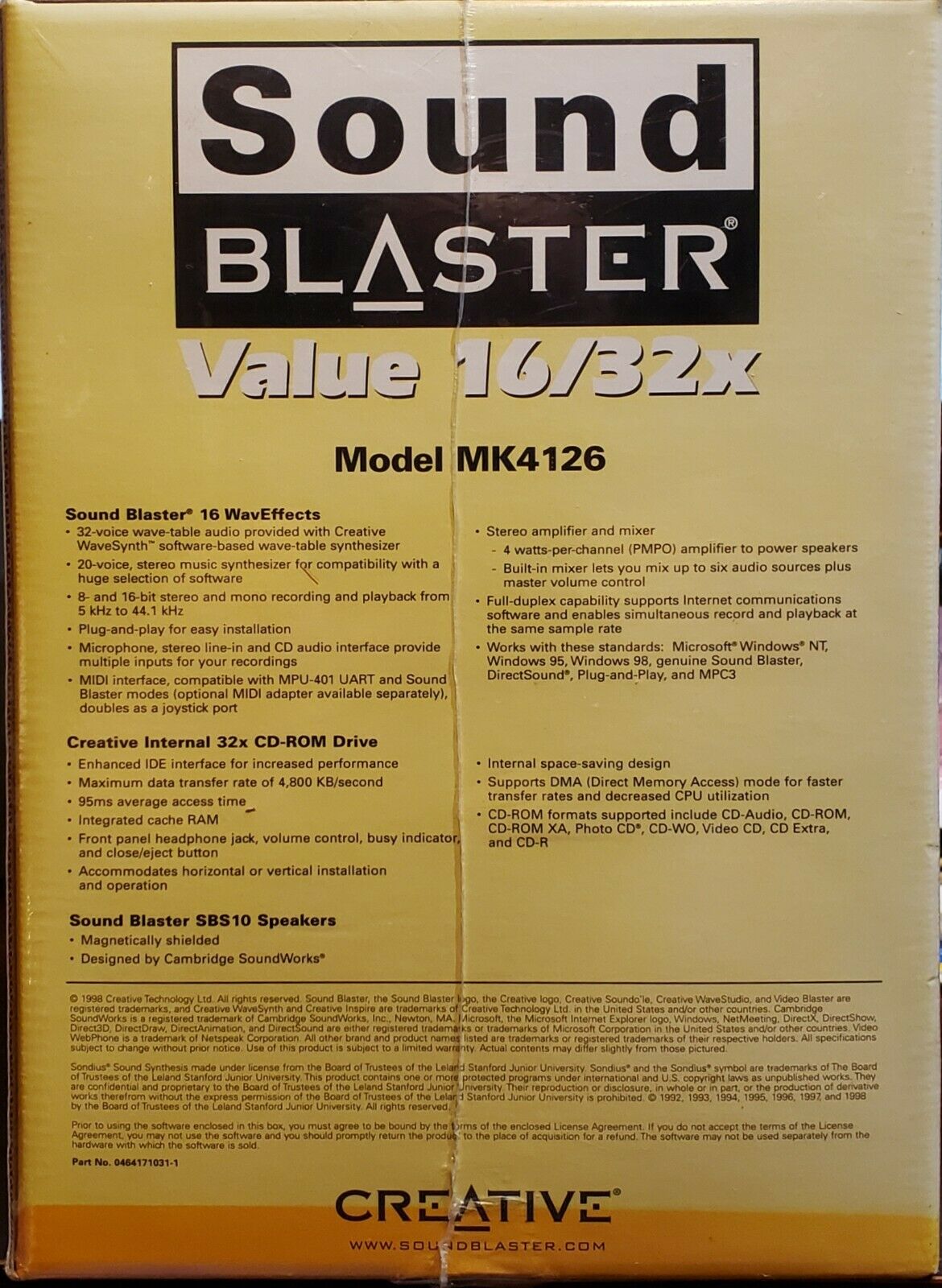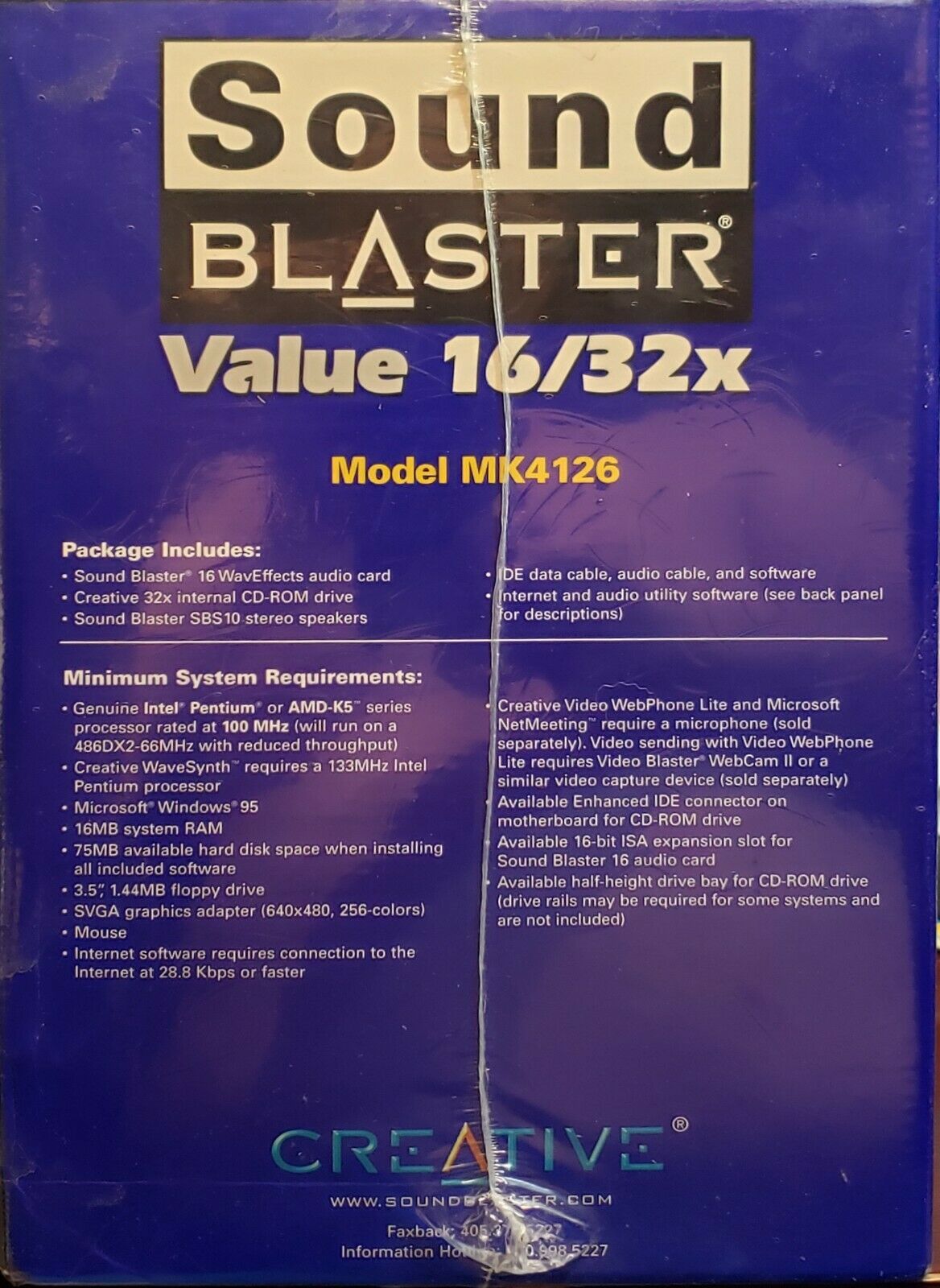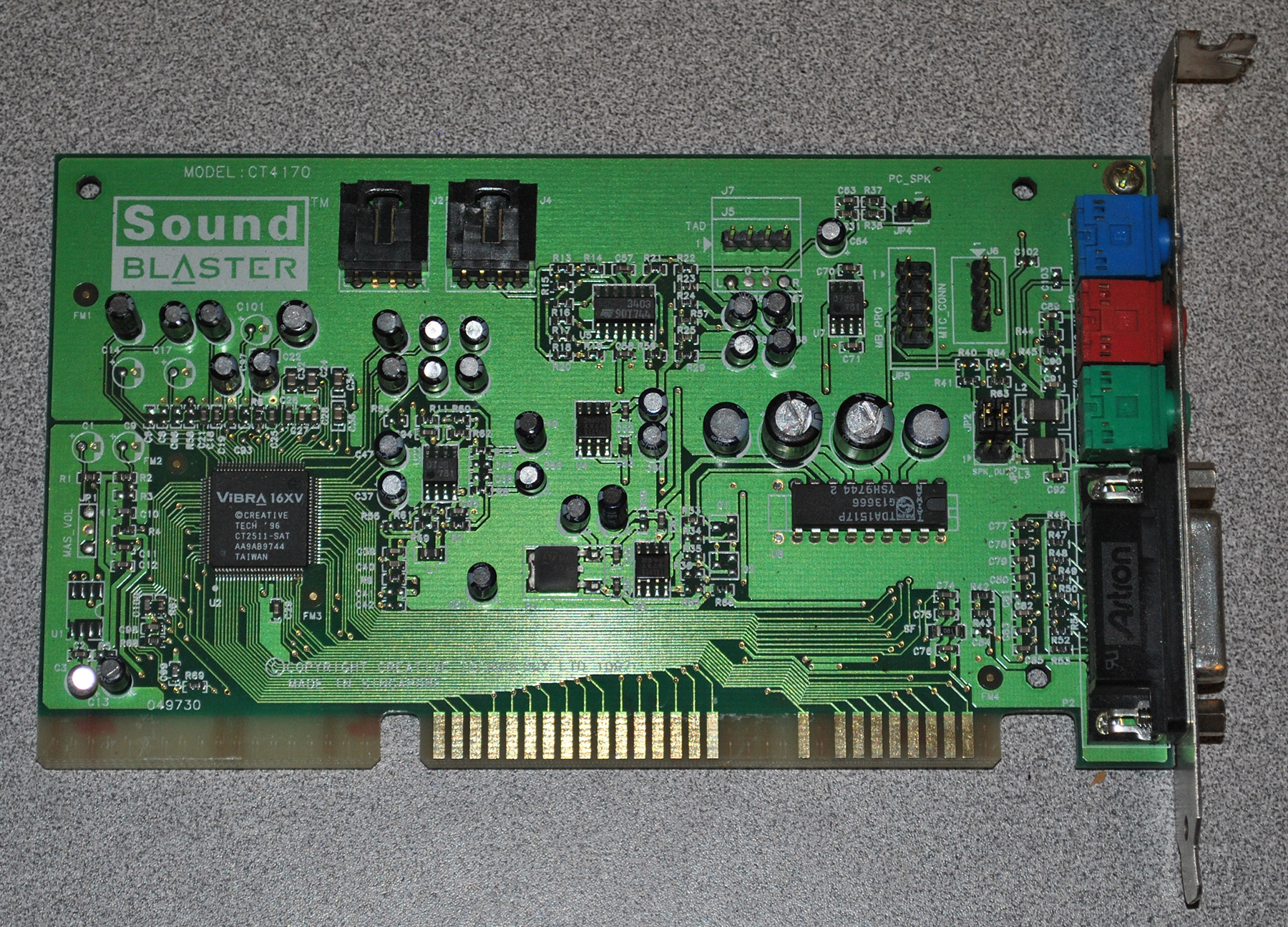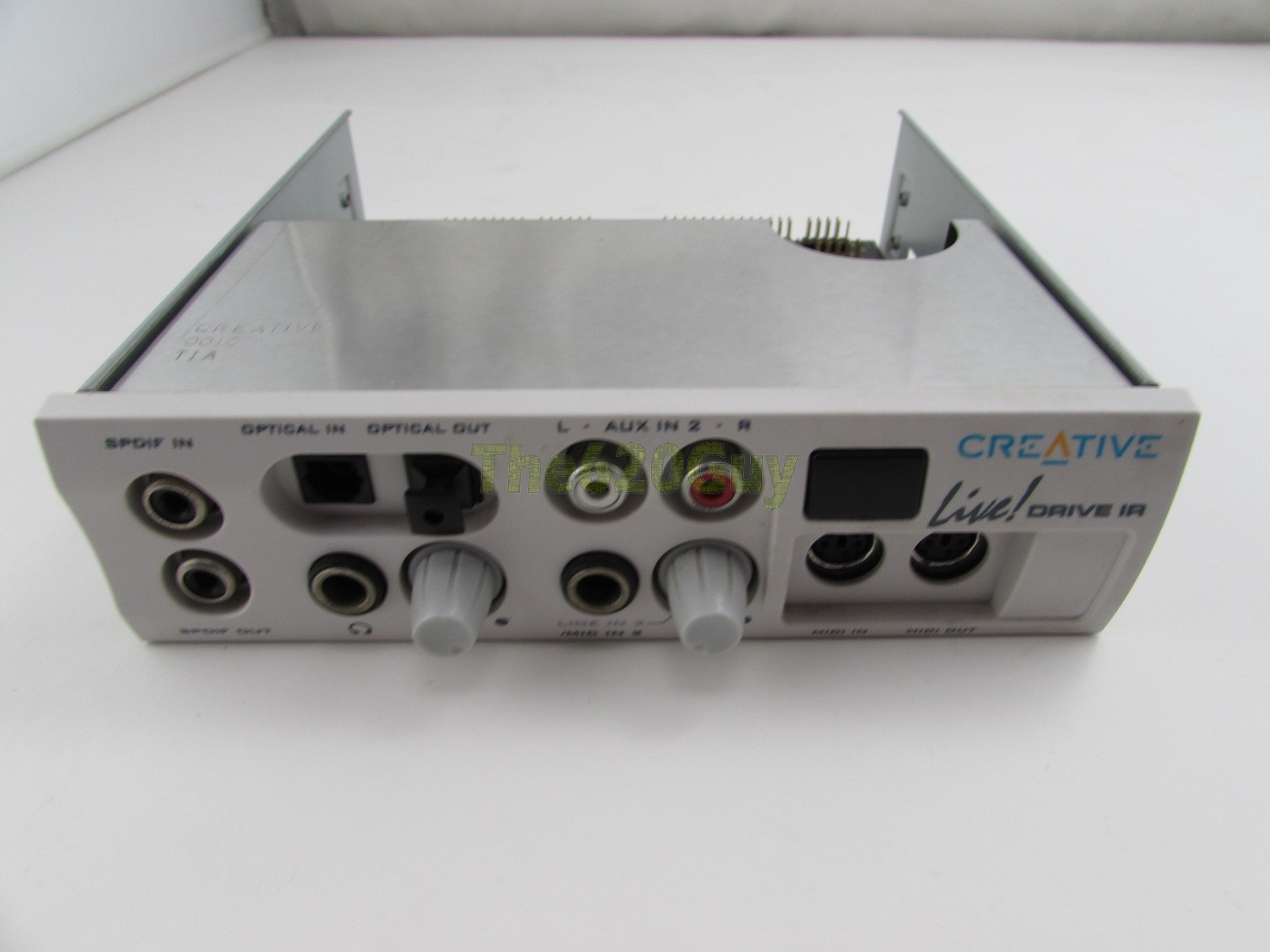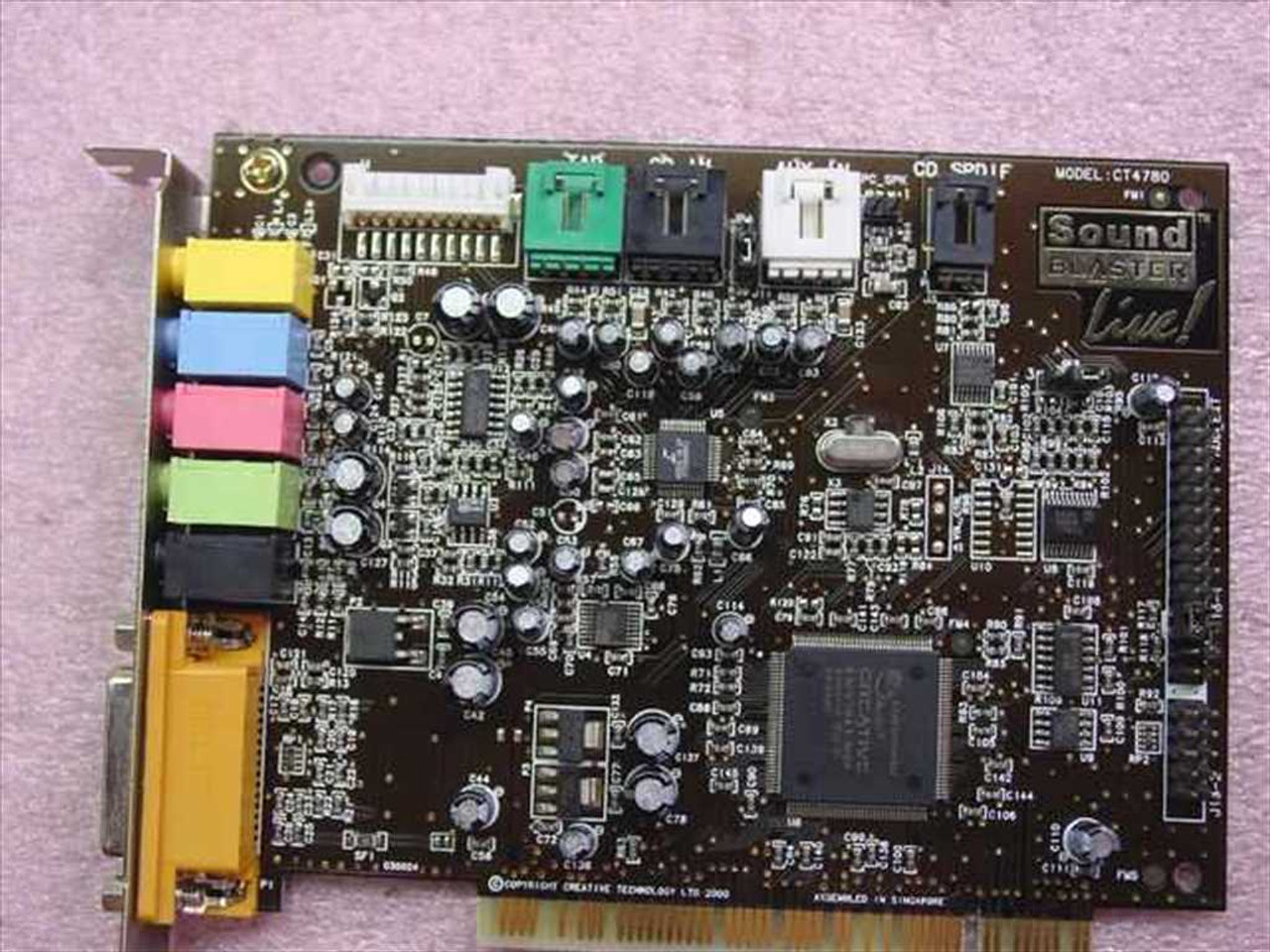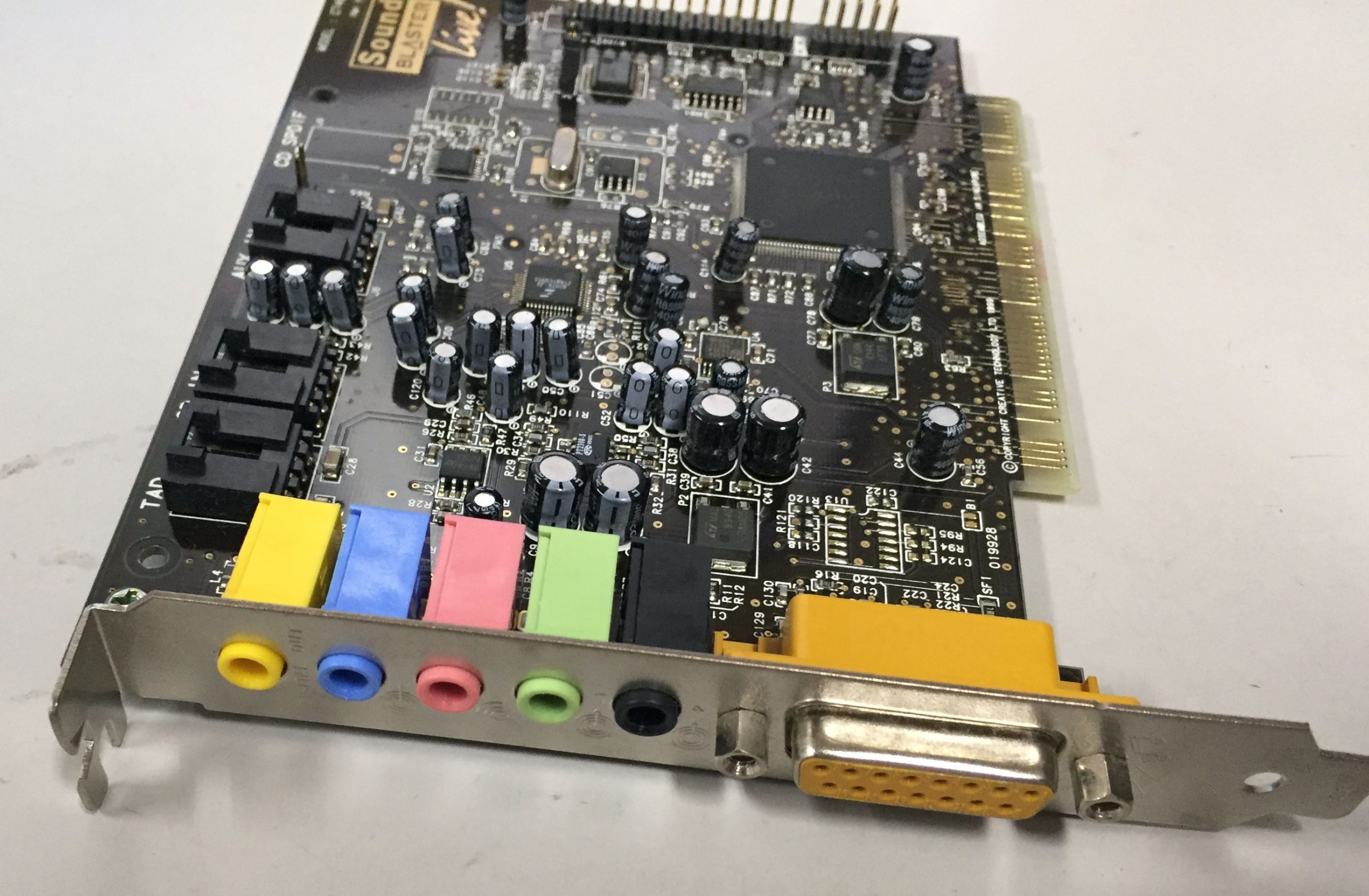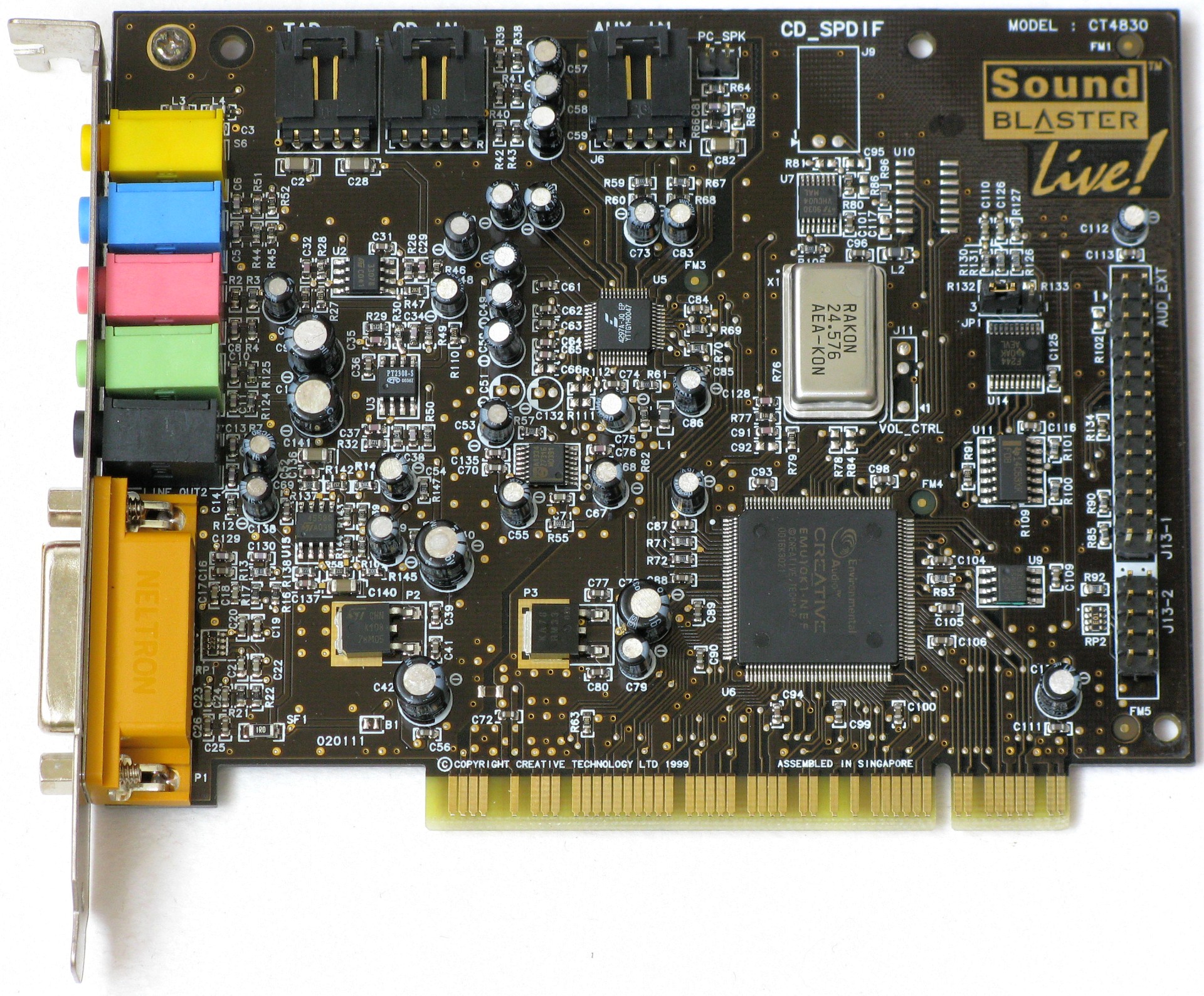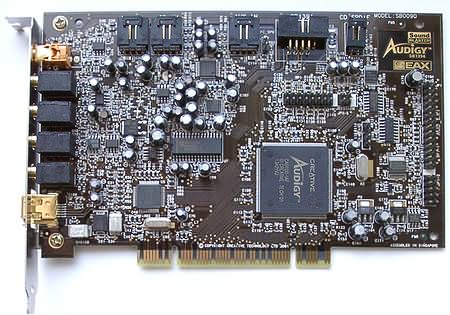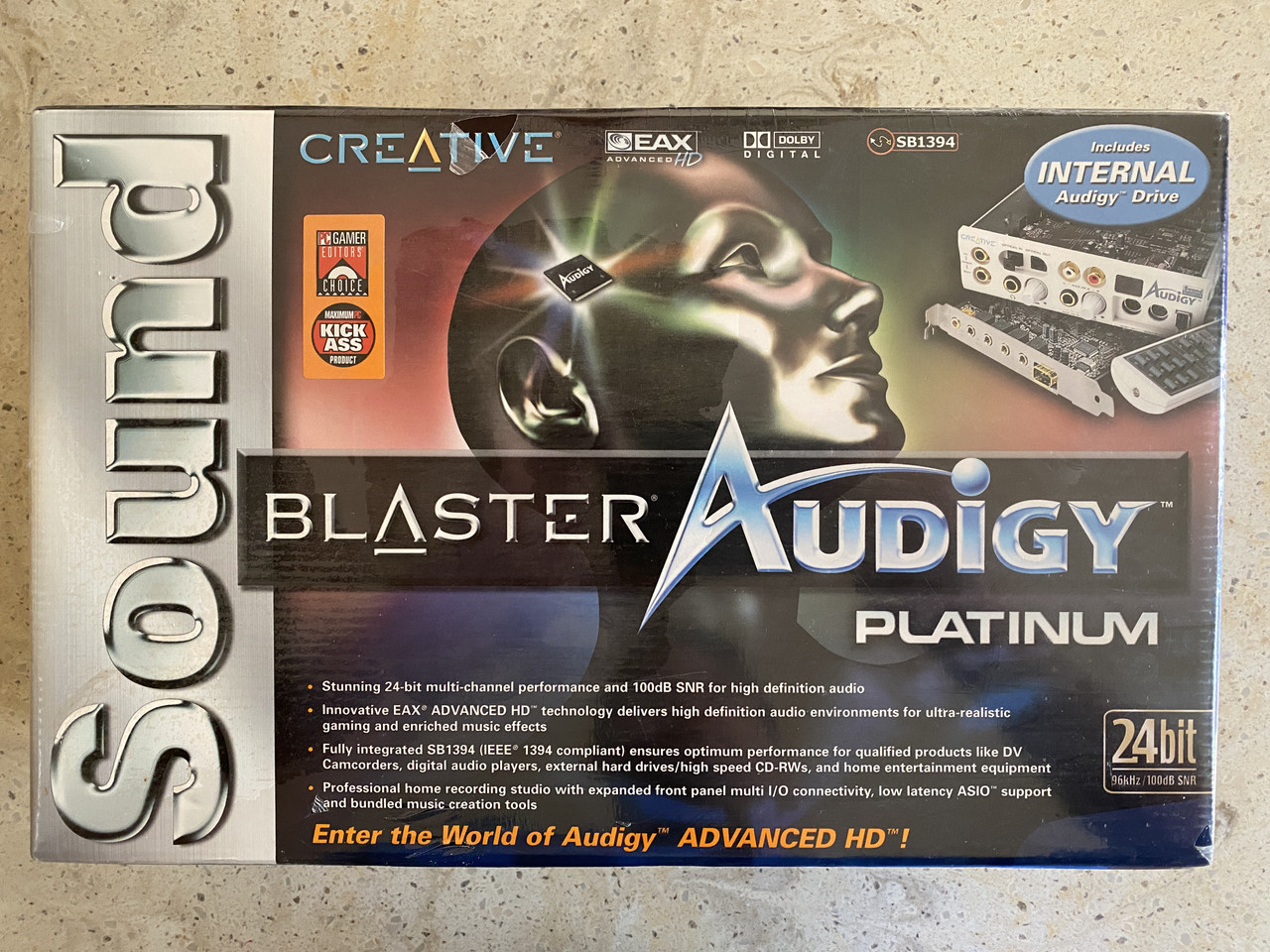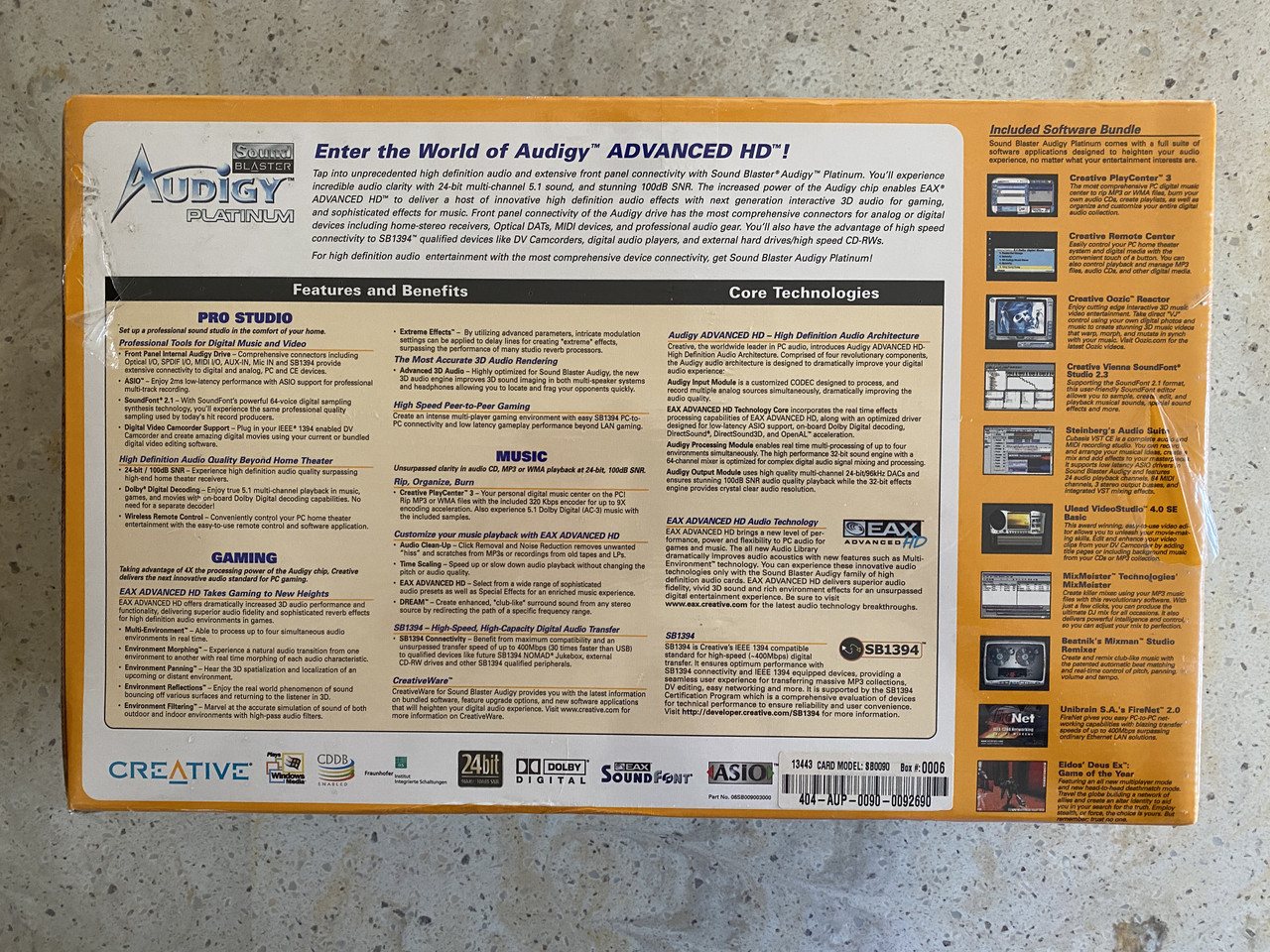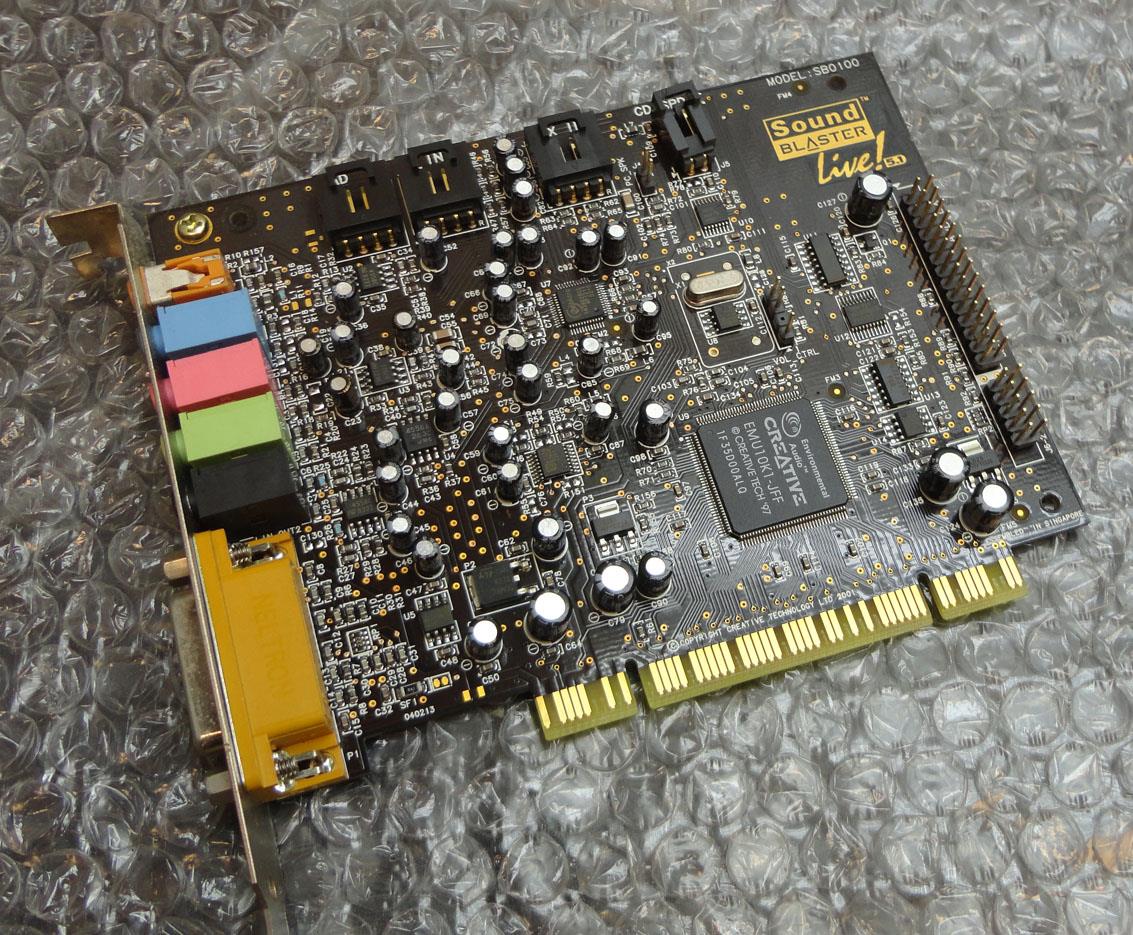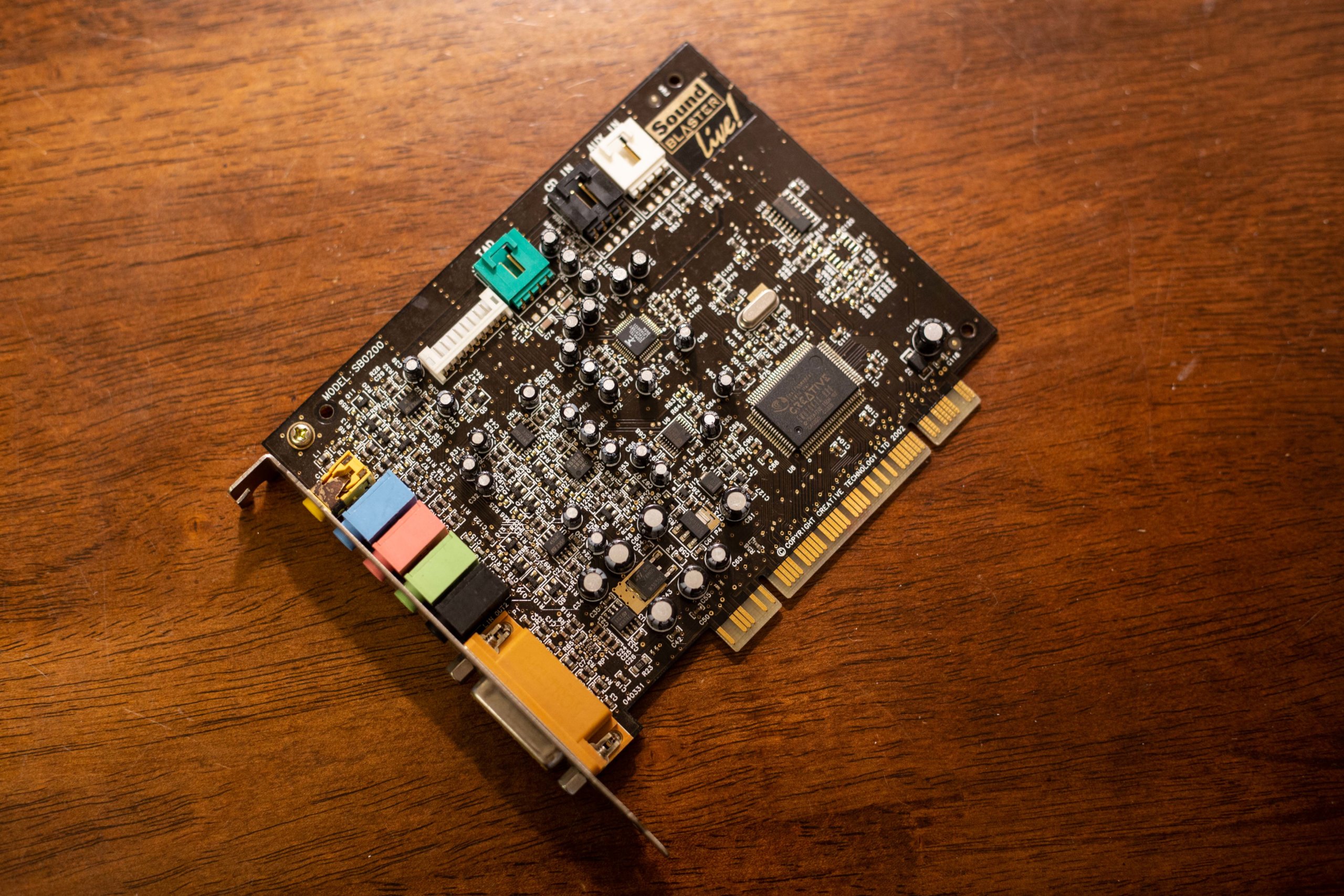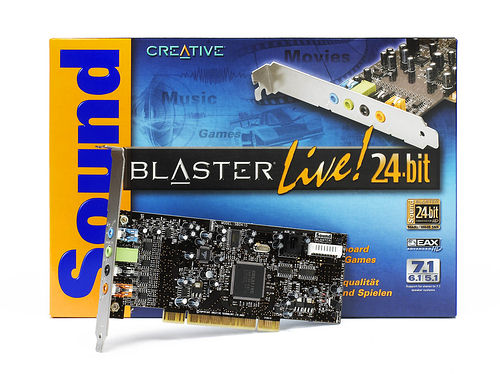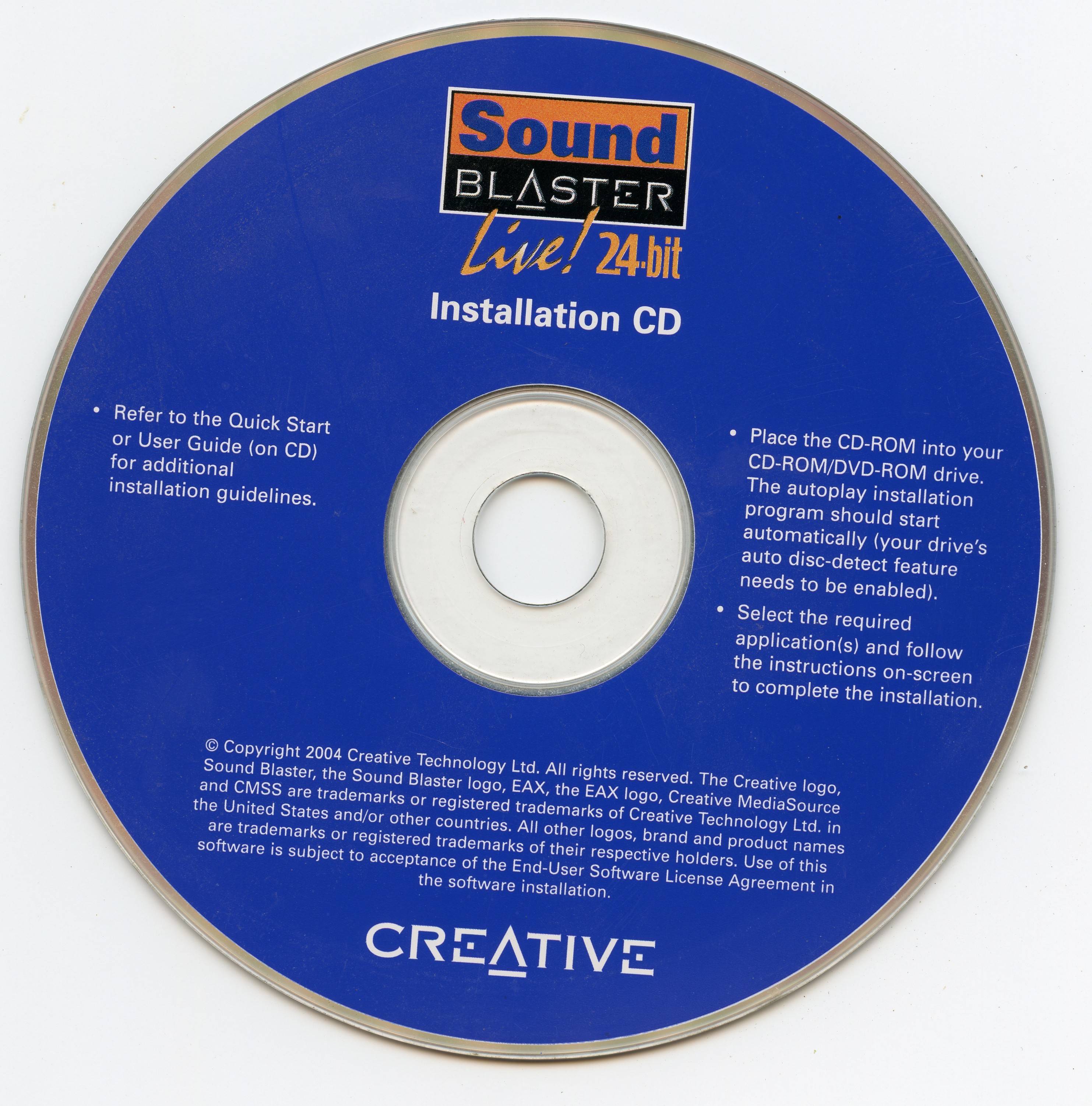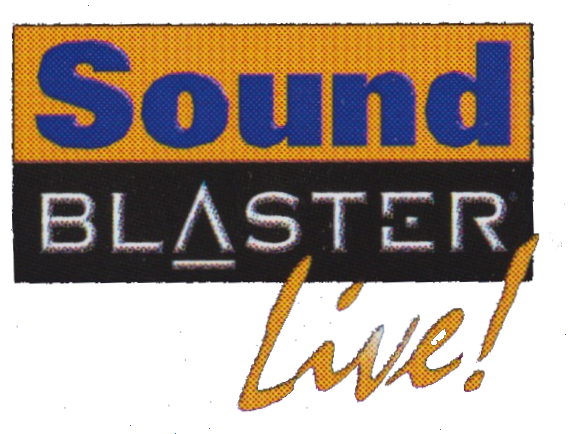 Sound Blaster Live!
Sound Blaster Live!
The Live! range was the successor to the ViBRA range of Creative's sound cards. The first Live! card launched in August 1998, and was the first to sport the E-Mu EMU10K1 audio processor.
With the EMU10K1, the Live! supported DirectSound and EAX (Environmental Audio Extensions) 1.0 and 2.0 3D positional audio in addition to having an onboard 64-voice wavetable synthesizer that used main memory for its sample storage instead of a dedicated ROM.
All Sound Blaster Live! cards were on the PCI bus, which allowed much faster data transfer rates between the card and system RAM to retrieve audio samples. The first cards supported up to 4 speakers plus a subwoofer, also referred to as 4.1 or quadraphonic sound, but in 2000 the Live! 5.1 was released.
DOS support on Live! cards was provided through the use of Ensoniq-developed AudioPCI and its TSR utility, who Creative had acquired that same year. This emulated legacy Ad Lib/OPL 3 and Sound Blaster 16 cards in addition to General MIDI.
Live! cards with the EMU10K1 have a special PCI game port, which, though it doesn't provide "Enhanced Game Port" features like the 4DWave or Aureal Vortex/Vortex 2 chips, is quite a bit faster than traditional game ports running on the ISA bus. It does require its own driver though.
Creative Labs produced several cards specifically for Dell to OEM with their desktop computers. These are best avoided, as their specs can be slightly different and their drivers for Windows are different.
|
||
|
||
|
||
|
||
|
||
|
More Images
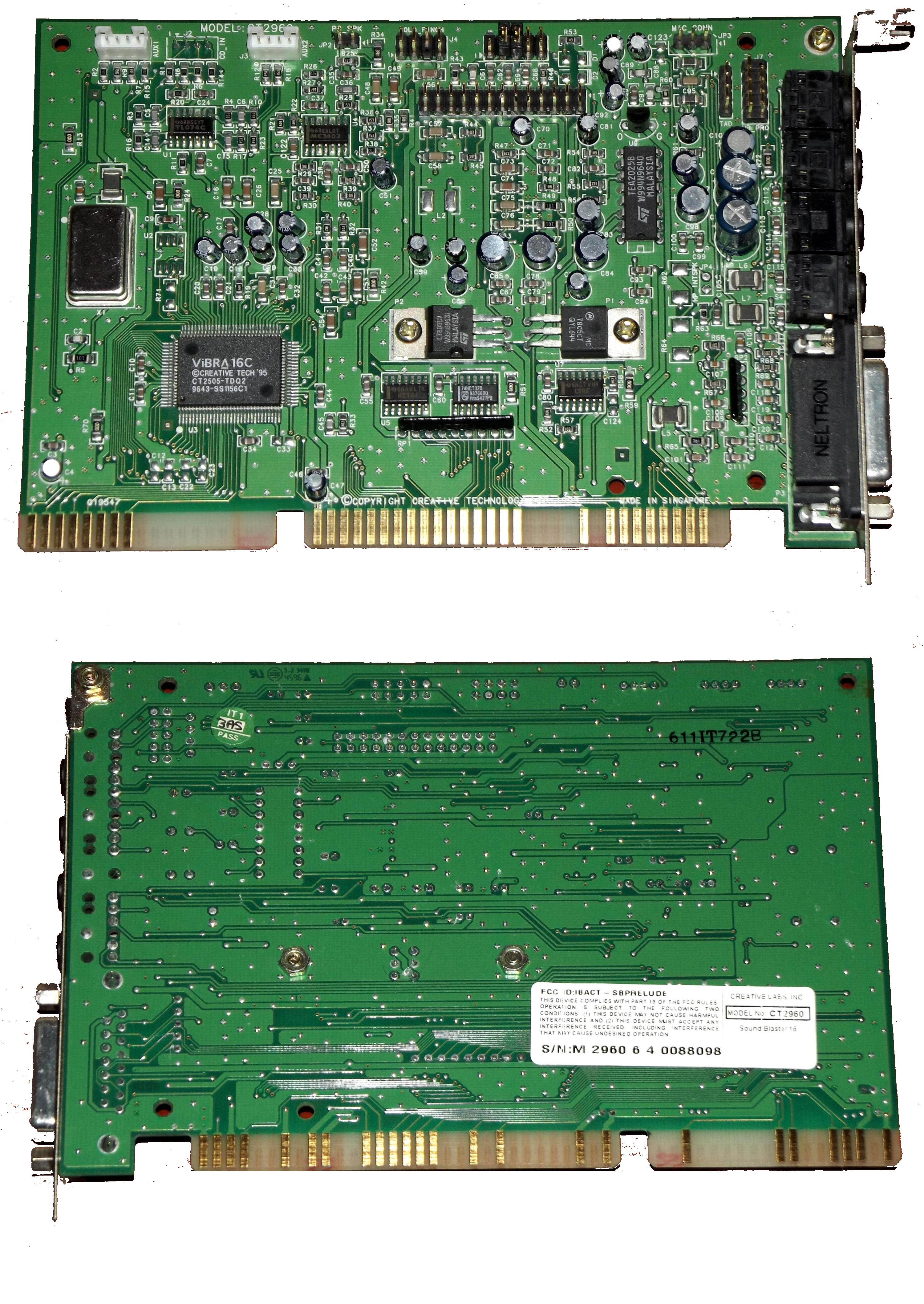 CT2960
CT2960
Introduced: 1995
Plug & Play: Yes
FM Synth Chip: CT2505
with integrated Creative CT1978 (CQM)
DSP Versions: 4.16
Known Board Revisions: 19547
FCC ID: IBACT-SBPRELUDE
Value edition. OEM version.
The ViBRA 16C chip was more commonly used on motherboards to provide embedded audio.
This card has been reported to have the hanging note bug, but the only cards I have seen have DSP v4.16 which does not suffer this.
More Images
CT2961
Basic edition.
PnP.
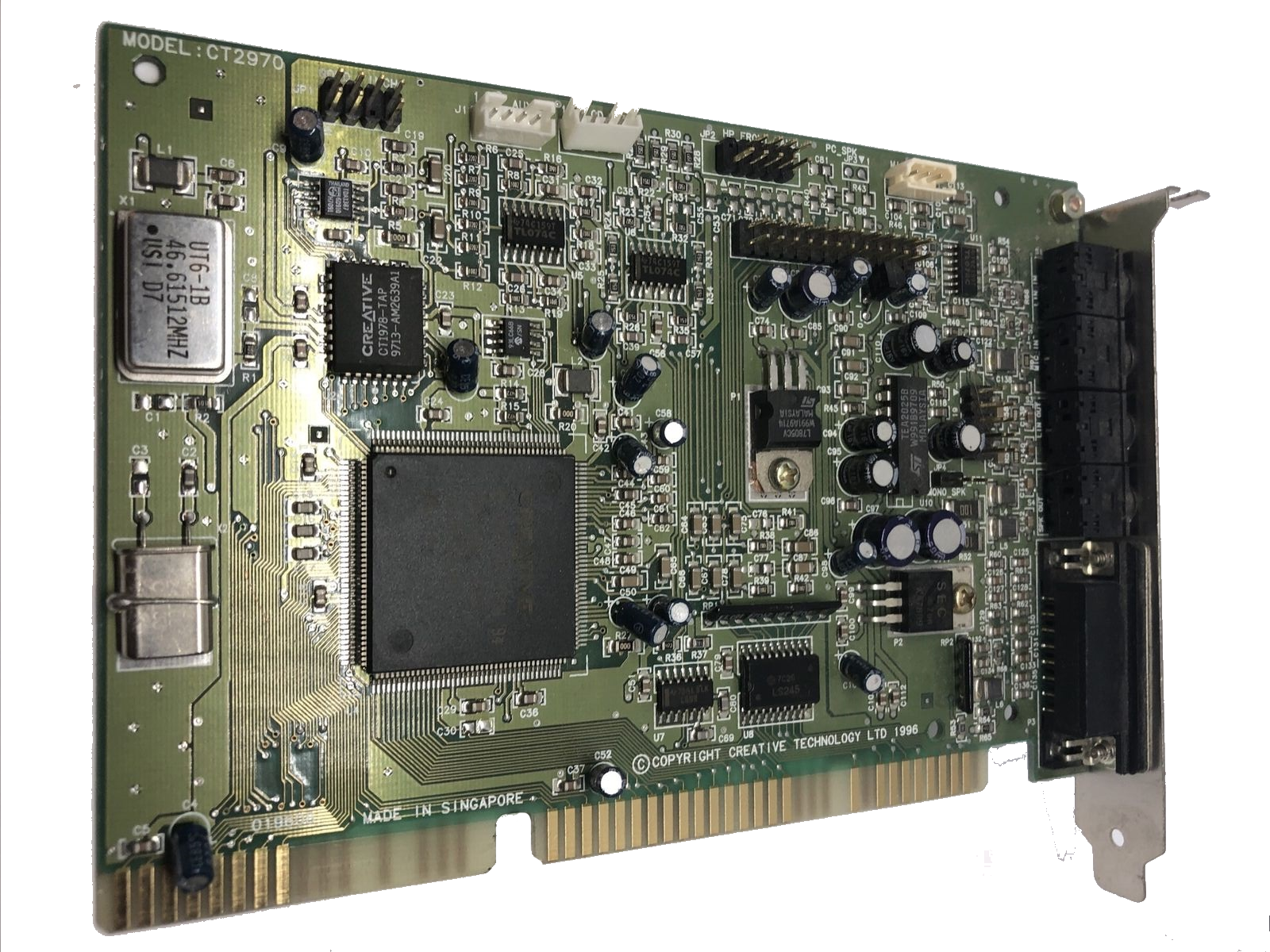 CT2970
CT2970
Introduced: 1996
FM Synth: Creative CT1978-TAP (CQM)
Plug & Play: Yes
Wavetable Header: Yes
CSP/ASP Chip: No
Known DSP Versions: (unknown)
Known Board Revisions: 19606
FCC ID: IBACT-SONATE
The CT2970 was an OEM version for Hewlett-Packard. These have the CT2502 (ViBRA) chips and are Plug & Play.
More Images
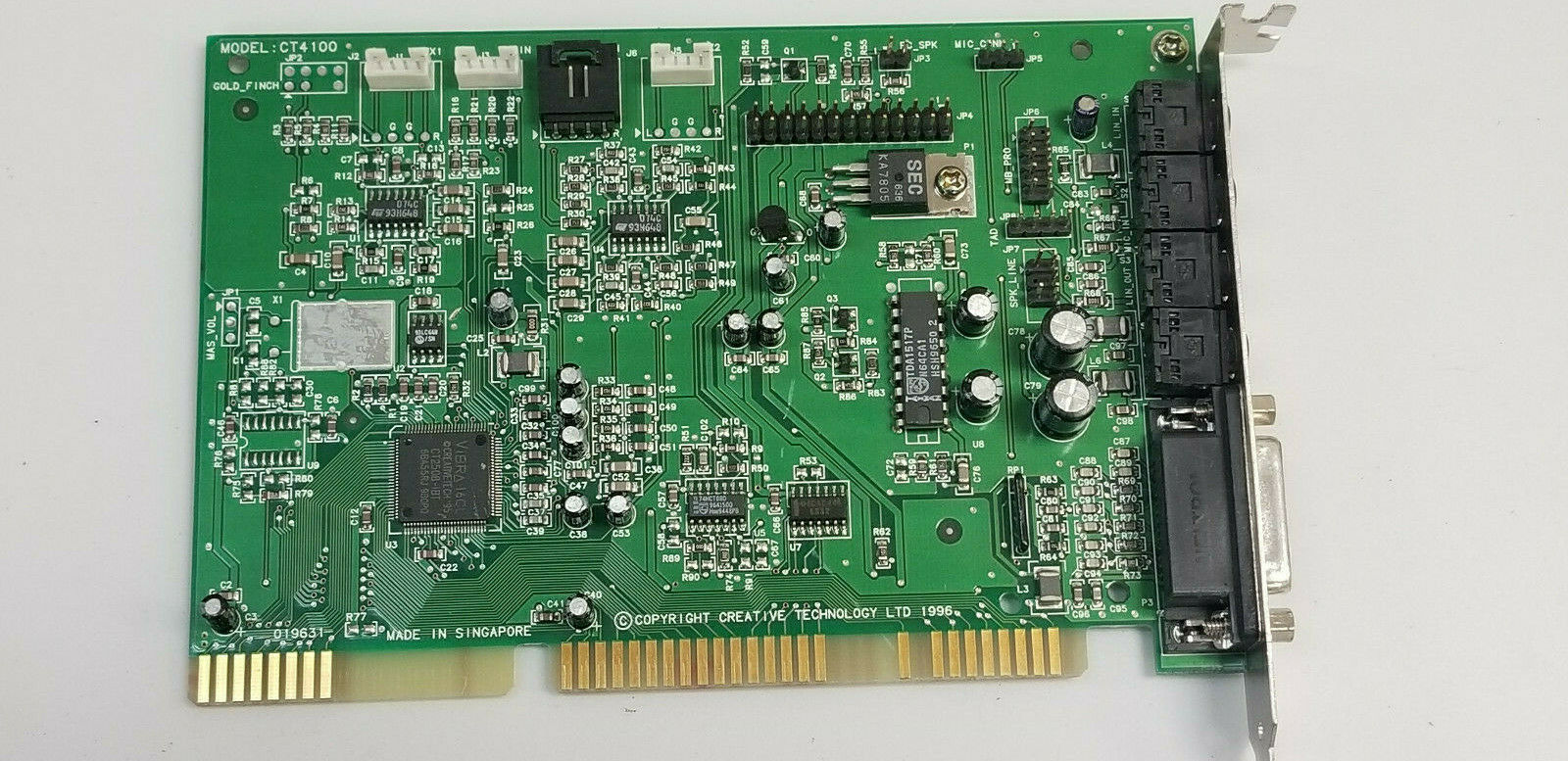 CT4100
CT4100
Launched: 1996
FM Synth: Creative ViBRA 16CL chipset (CT2508)
Plug & Play: Yes
Wavetable Header: No
CSP/ASP Chip: No
FCC ID: IBACT-SB16C6
Known DSP Versions: 4.13
Known Board Revisions: 19631
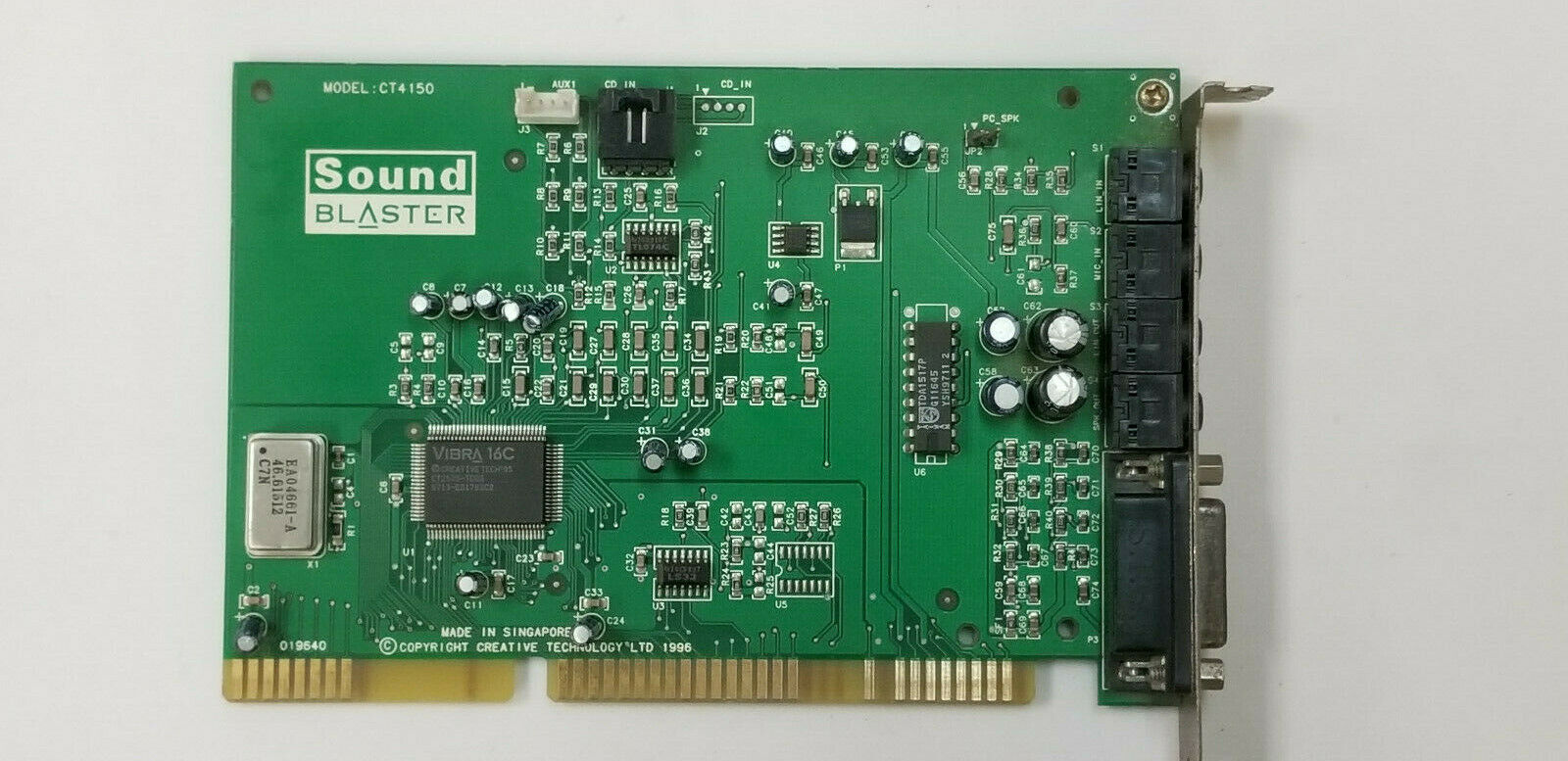 CT4150
CT4150
Launched: 1996
FM Synth: Creative ViBRA 16C chipset (CQM)
Plug & Play: Yes
Wavetable Header: No
CSP/ASP Chip: No
FCC ID: ?
Known DSP Versions: 4.13
Known Board Revisions: 19640
.jpg) CT4170
CT4170
Launched: 1997
FM Synth: Creative ViBRA 16XV chipset (CQM)
Plug & Play: Yes
Wavetable Header: No
CSP/ASP Chip: No
FCC ID: ?
Known DSP Versions: ?
Known Board Revisions: 19720, 49730
Called the Sound Blaster 16 WavEffects edition, or Sound Blaster 16 Value PnP. It has the Vibra-16XV chip with CQM.
The CT4170 was sold as a bundle with a pair of SBS10 speakers and a 32x CD-ROM drive, called the Sound Blaster Value 16/32X.
More Images
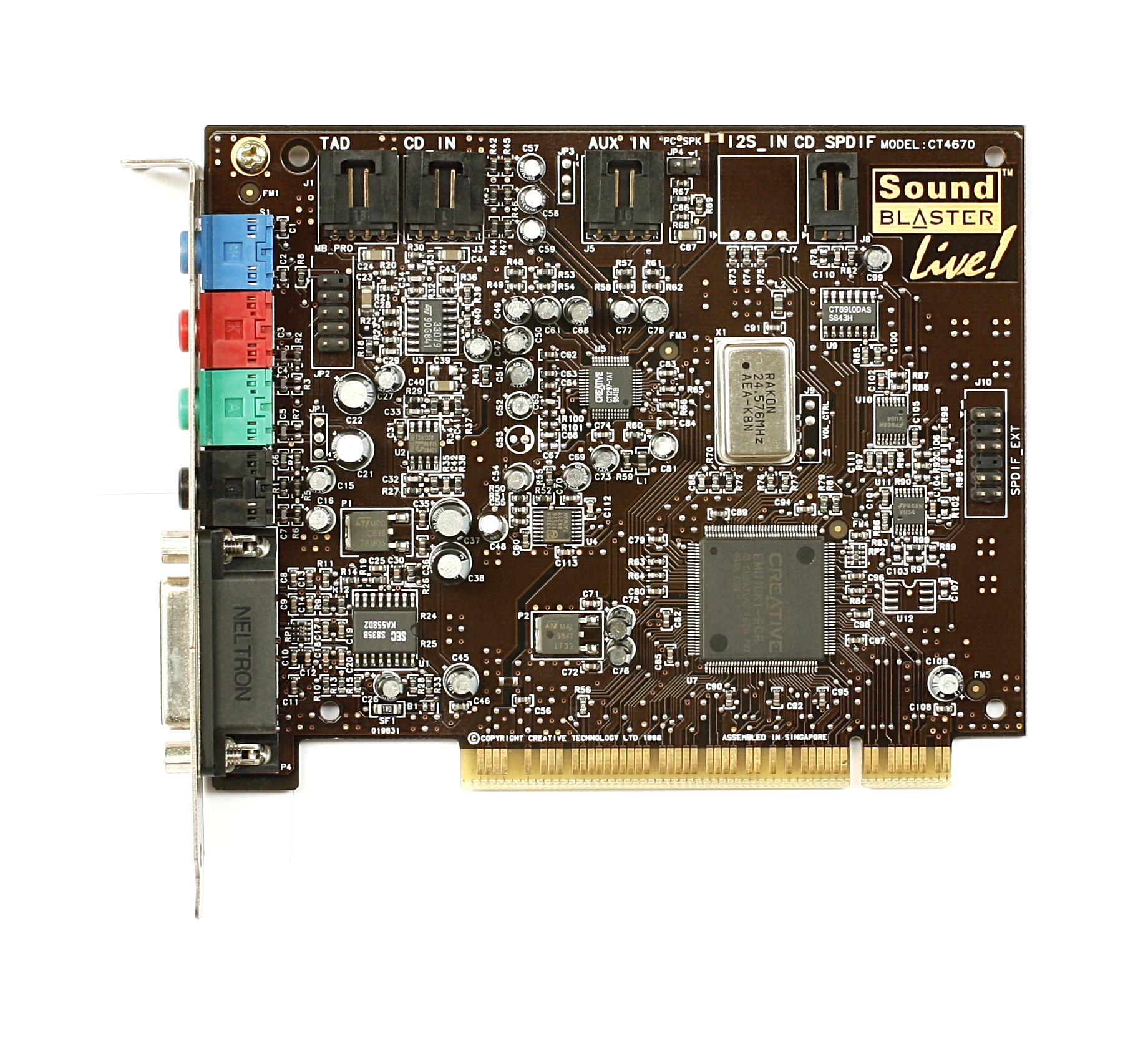 CT4670
CT4670
Introduced in 1998.
FM Synthesizer: Embedded AudioPCI in EMU10K1
CD-ROM Headers: None
Known Board Revisions: 19831
FCC ID:
The CT4670 was the initial budget offering, so was called the Sound Blaster Live! Value but was sometimes sold as Sound Blaster Live! 1024. It came with a header for S/PDIF external digital audio output.
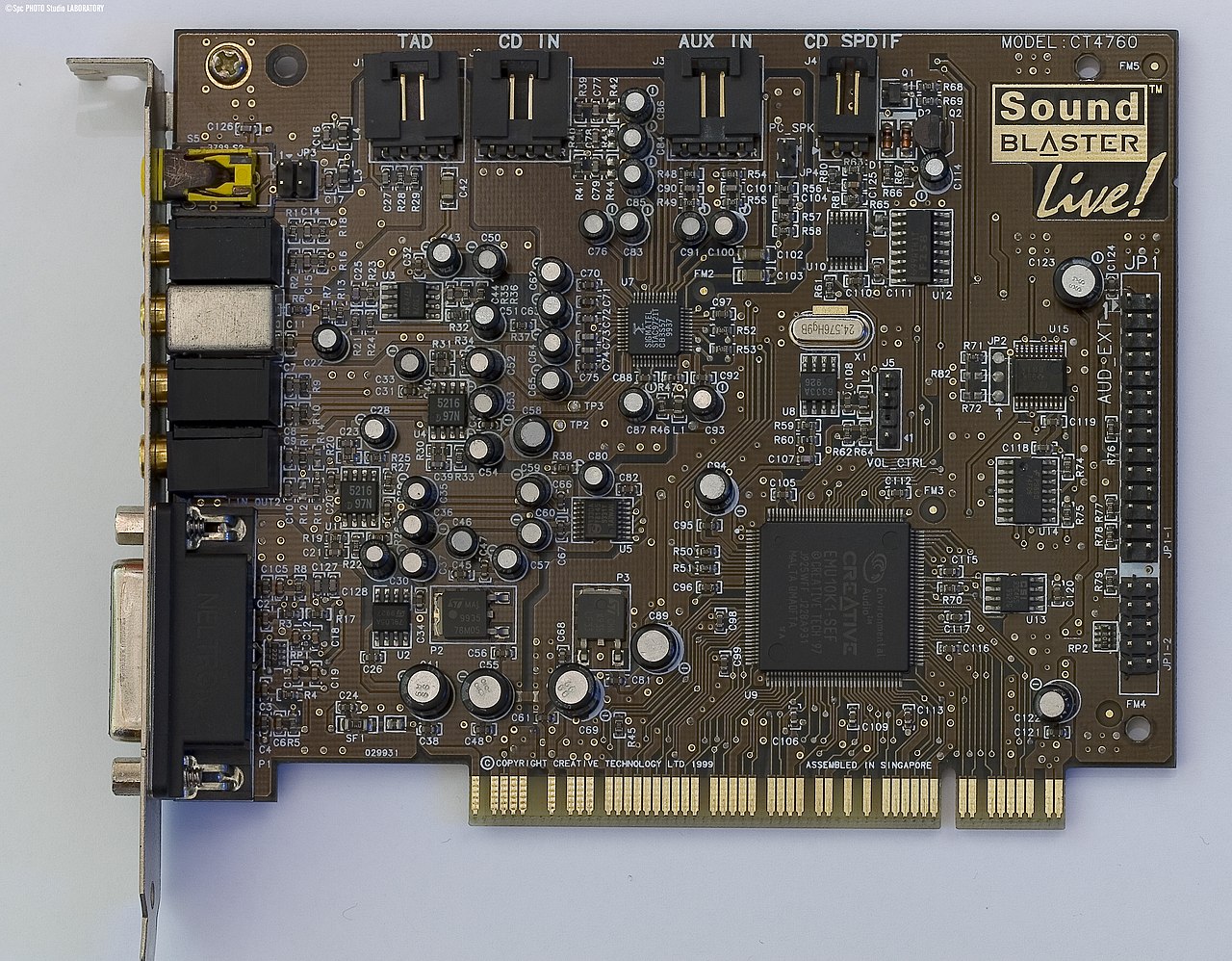 CT4760
CT4760
Introduced in 1999.
FM Synthesizer: Embedded AudioPCI in EMU10K1
CD-ROM Headers: None
Known Board Revisions: 29931
FCC ID:
Several variants of CT4760 exist: Sound Blaster Live! X-Gamer, Sound Blaster Live! X-Gamer 5.1, Sound Blaster Live! Platinum and Sound Blaster Live! MP3+.
The X-Gamer 5.1 variant supports 5.1 surround sound via a combined analog / digital-out jack on the faceplate (yellow, at the very top). For analog purposes, the jack is used to provide the front centre and subwoofer channels. For digital purposes it's a compressed AC-3 S/PDIF output. The X-Gamer variant does not have this jack.
The CT4760 came bundled with what Creative called Live!Ware 3.0 CD-ROM, in addition to a number of full release games.
The Platinum and MP3+ variants were similar to other Live! cards, but came bundled with Live! Drive IR, a 5.25" drive bay module and infra-red remote control featuring inputs and control dials for the front of your desktop PC (see pic below). These two variants did not support 5.1 surround sound, but did support a 4-speaker (quadraphonic) setup: 2 front and 2 rear.
More Images
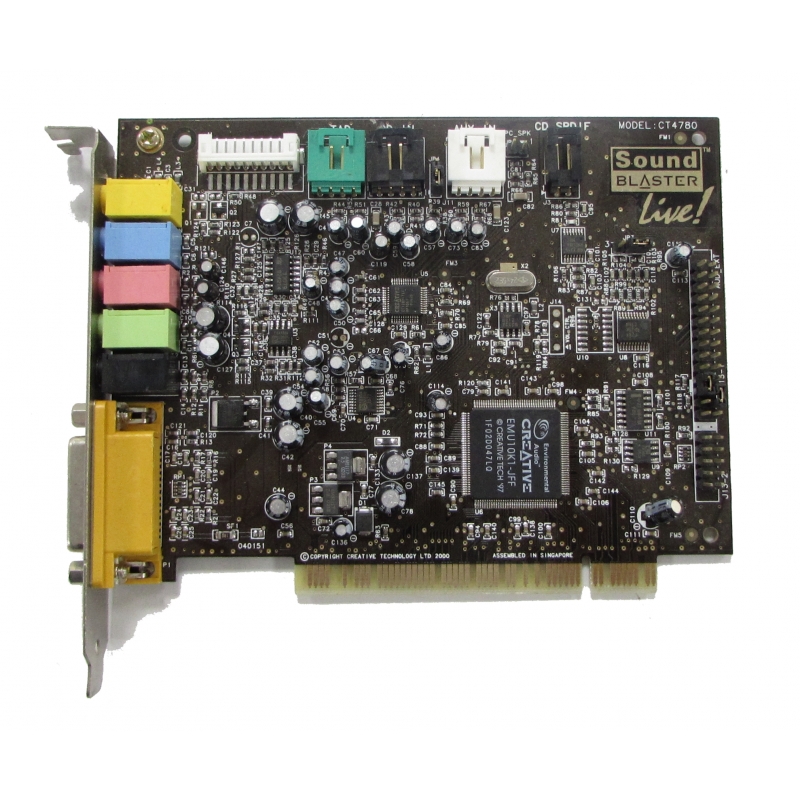 CT4780
CT4780
Introduced in 2000.
FM Synthesizer: Embedded AudioPCI in EMU10K1
CD-ROM Headers: None
Known Board Revisions: 30024, 40151
FCC ID:
The CT4780 was designed for the Dell Computers OEM market.
More Images
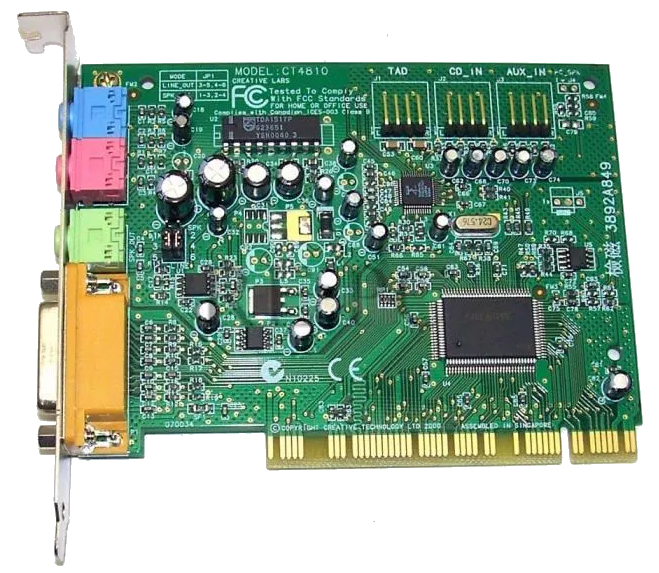 CT4810
CT4810
Introduced: 2000
Interface: PCI
FM Synthesizer: Embedded AudioPCI in ES1373
CD-ROM Headers: None
Known Board Revisions: -
FCC ID: -
The CT4810, or to give it its full title, Sound Blaster ViBRA 128, was based around the Ensoniq AudioPCI chip, ES1373. ES1373 was a slightly updated version of their earlier ES1371, adding I2S In or S/PDIF Output (the blue Line-In and green Line-Out sockets double up to support these respectively).
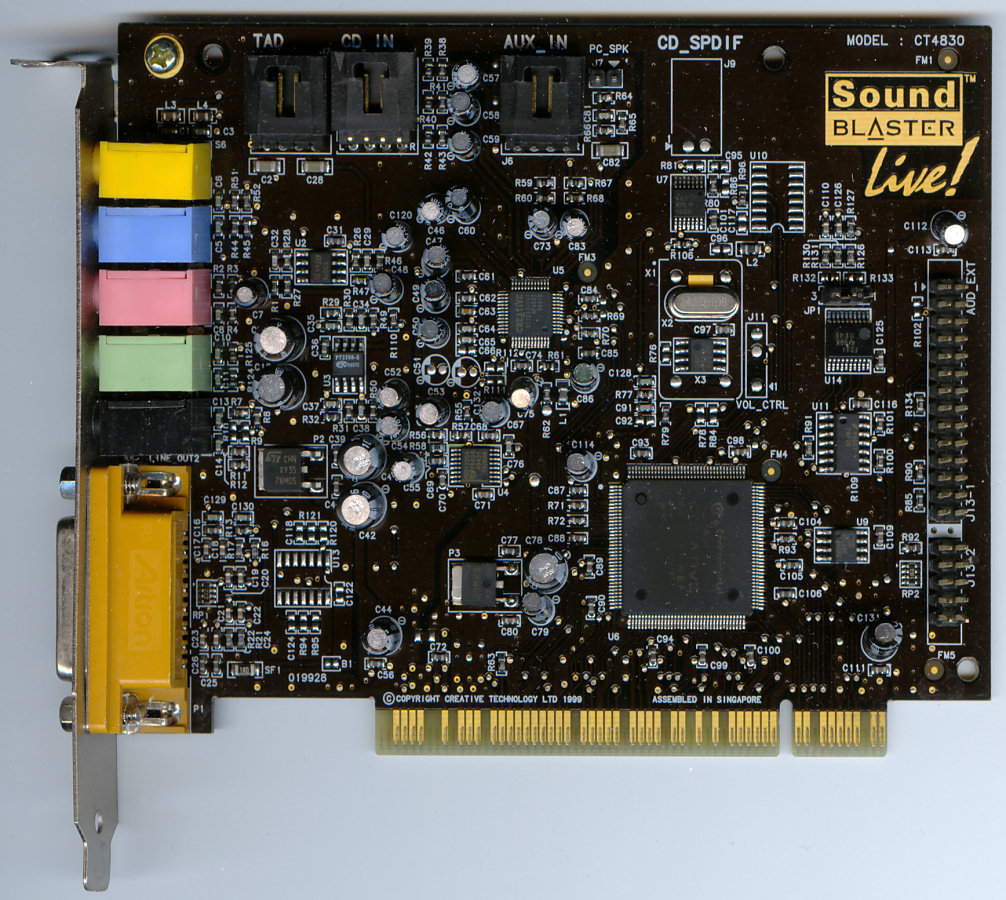 CT4830
CT4830
Introduced in 1999.
FM Synthesizer: Embedded AudioPCI in EMU10K1
CD-ROM Headers: None
Known Board Revisions: 19928, 20111
FCC ID:
The CT4830 is a "Value" card, and like the CT4670 was also sold with the moniker of Sound Blaster Live! 1024. All "Value" cards including this one got plastic-covered 3.5mm jacks instead of gold ones seen on the non-Value cards.
More Images
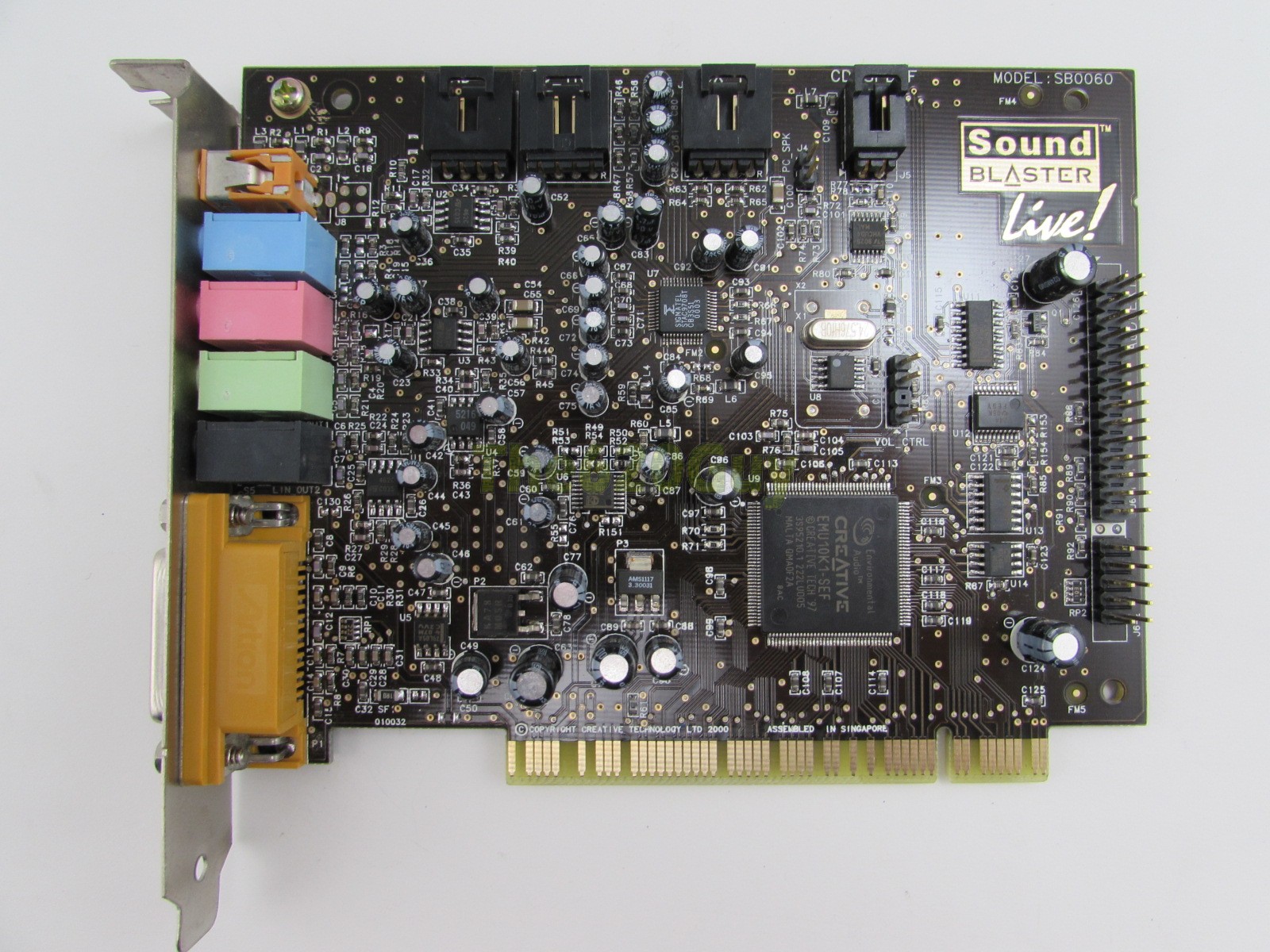 SB0060
SB0060
Introduced in 2000
FM Synthesizer: Embedded AudioPCI in EMU10K1
CD-ROM Headers: None
Known Board Revisions: 10032
FCC ID:
The SB0060, also known as Sound Blaster Live! 5.1 was the first card from Creative Labs to support 5.1 surround sound comprising 2 left & right front speakers, a centre front speaker, 2 rear left & right speakers, and a subwoofer.
Similar to the CT4760, several variants of SB0060 were released, entitled Sound Blaster Live! 5.1 Platinum, Sound Blaster Live! 5.1 X-Gamer, and Sound Blaster Live! 5.1 MP3+. The only difference between these variants was what else was bundled with the same sound card.
On cards with the designation SB0060, the subwoofer channel output doubles up as the S/PDIF coaxial digital out. Other designations do not support this feature.
The Live! 5.1 competed with the Philips Acoustic Edge and Turtle Beach Santa Cruz.
 SB0090
SB0090
Introduced in 2000
FM Synthesizer: Creative Audigy
CD-ROM Headers: None
Known Board Revisions: 10032
FCC ID:
The SB0090 was also known as Sound Blaster Audigy Platinum. It boasted 24-bit multi-channel audio and a 100 dB signal-to-noise ratio.
Like the SB0060 and SB0100 it featured 5.1 surround sound support but incorporated the newer Creative EAX Advanced HD technology.
It also included a fully-integrated SB1395 (IEEE1394) port for connectivity to a DV camcorder, digital audio player, high-speed CD/RW drives and other home entertainment devices.
More Images
 SB0100
SB0100
Introduced in 2002
FM Synthesizer: Embedded AudioPCI in EMU10K1
CD-ROM Headers: None
Known Board Revisions: 20112, 40213
FCC ID:
The oddly named SB0100, aka Sound Blaster Live! 5.1, was similar to the SB0060 in that it featured 5.1 surround sound support. It got the full EMU10K1 chip.
More Images
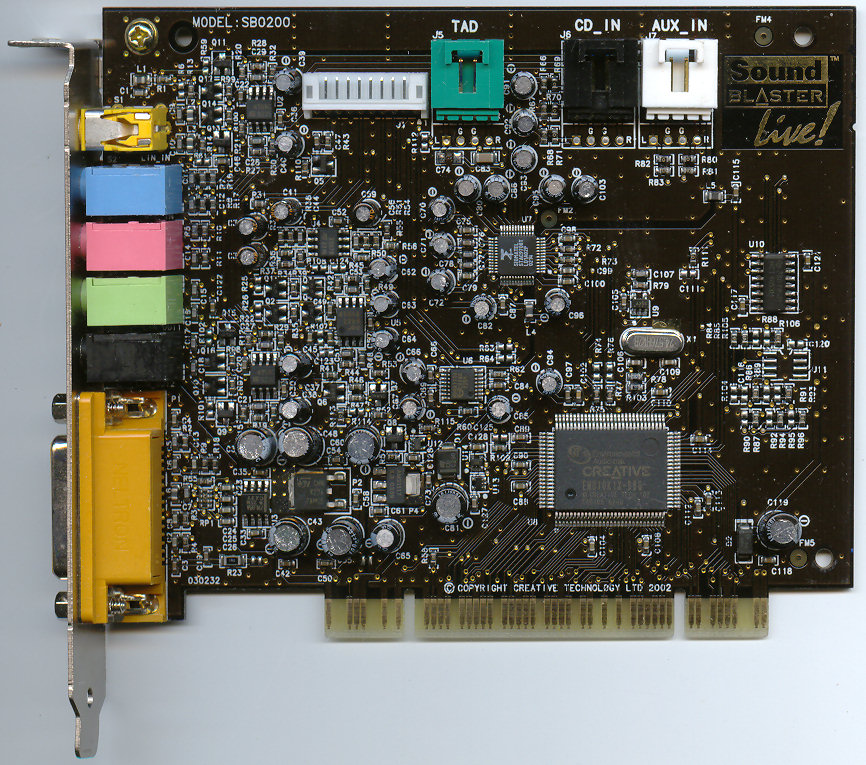 SB0200 / SB0203
SB0200 / SB0203
Introduced in 2003
FM Synthesizer: Embedded AudioPCI in EMU10K1X
CD-ROM Headers: None
Known Board Revisions: 30232, 40331
FCC ID:
Also oddly named cards SB0200 and SB0203, these were specifically manufactured for Dell Computers to install into their PCs. Unlike other Sound Blaster Live! cards, these got a cut-down version of the EMU10K1, called EMU10K1X. This omitted the DirectSound and EAX hardware acceleration features of the EMU10K1.
The cards were criticised for not being overtly marketed as inferior to the former Live! cards.
More Images
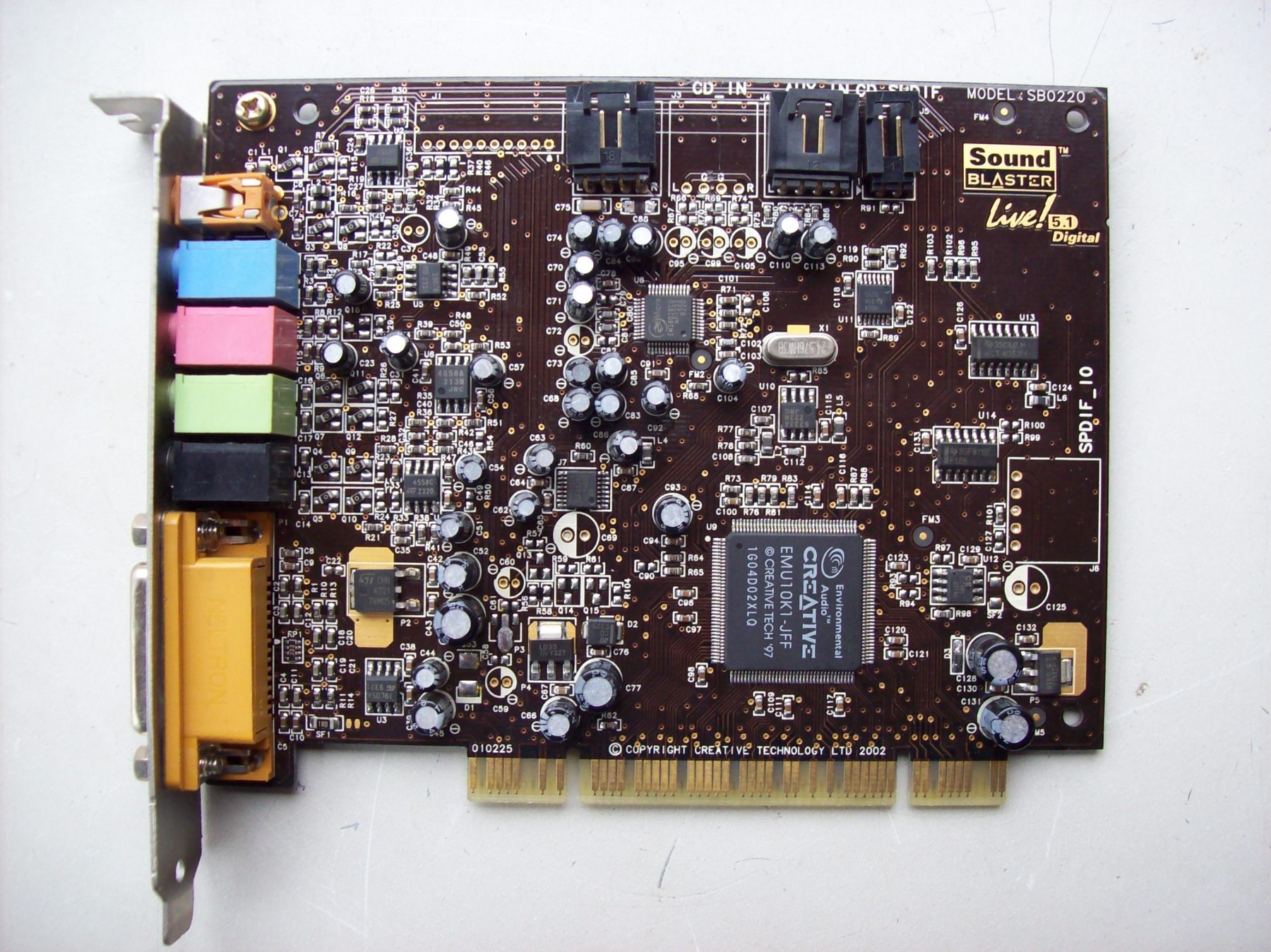 SB0220
SB0220
Introduced in 2001
FM Synthesizer: Embedded AudioPCI in EMU10K1
CD-ROM Headers: None
Known Board Revisions: 10225, 30333
FCC ID:
A hastily-released successor to the SB0200 and SB0203, the SB0220, aka Sound Blaster Live! 5.1 Digital, got the Live! cards' full EMU10K1 chip, meaning it fully supported hardware accelerated DirectSound, DirectSound 3D and EAX.
The later board revision 30333 arrived in 2003.
More Images
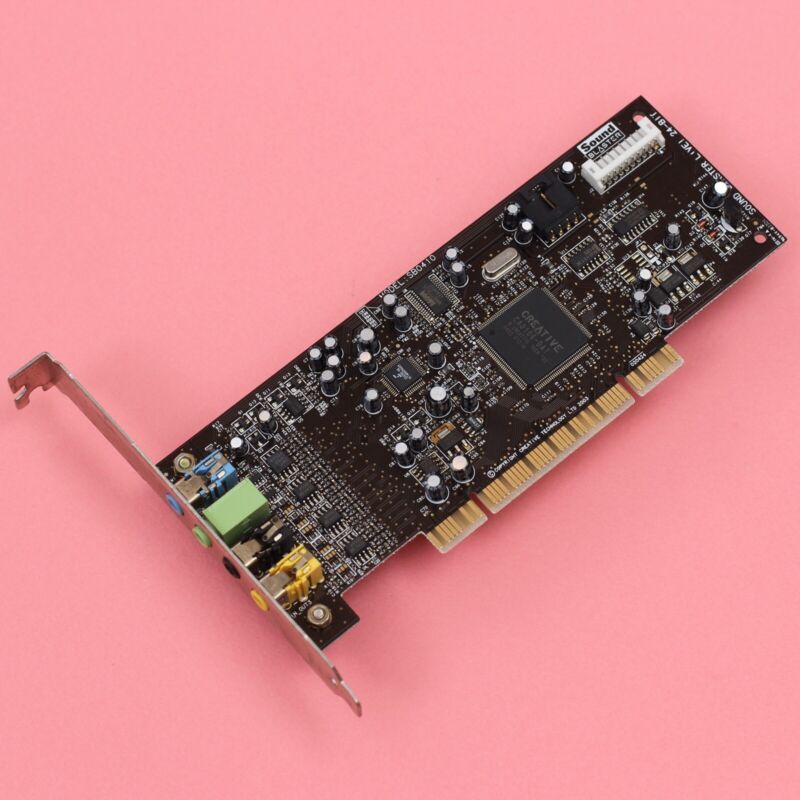 SB0410
SB0410
Introduced in 2004
FM Synthesizer: Embedded AudioPCI in EMU10K1
CD-ROM Headers: None
Known Board Revisions:
FCC ID:
The SB0410 also sold as the Sound Blaster Live! 24-bit, and was actually based on Creative's Audigy Value card, and was even a cut-down version of that. It did not come with hardware-accelerated DirectSound or EAX.
